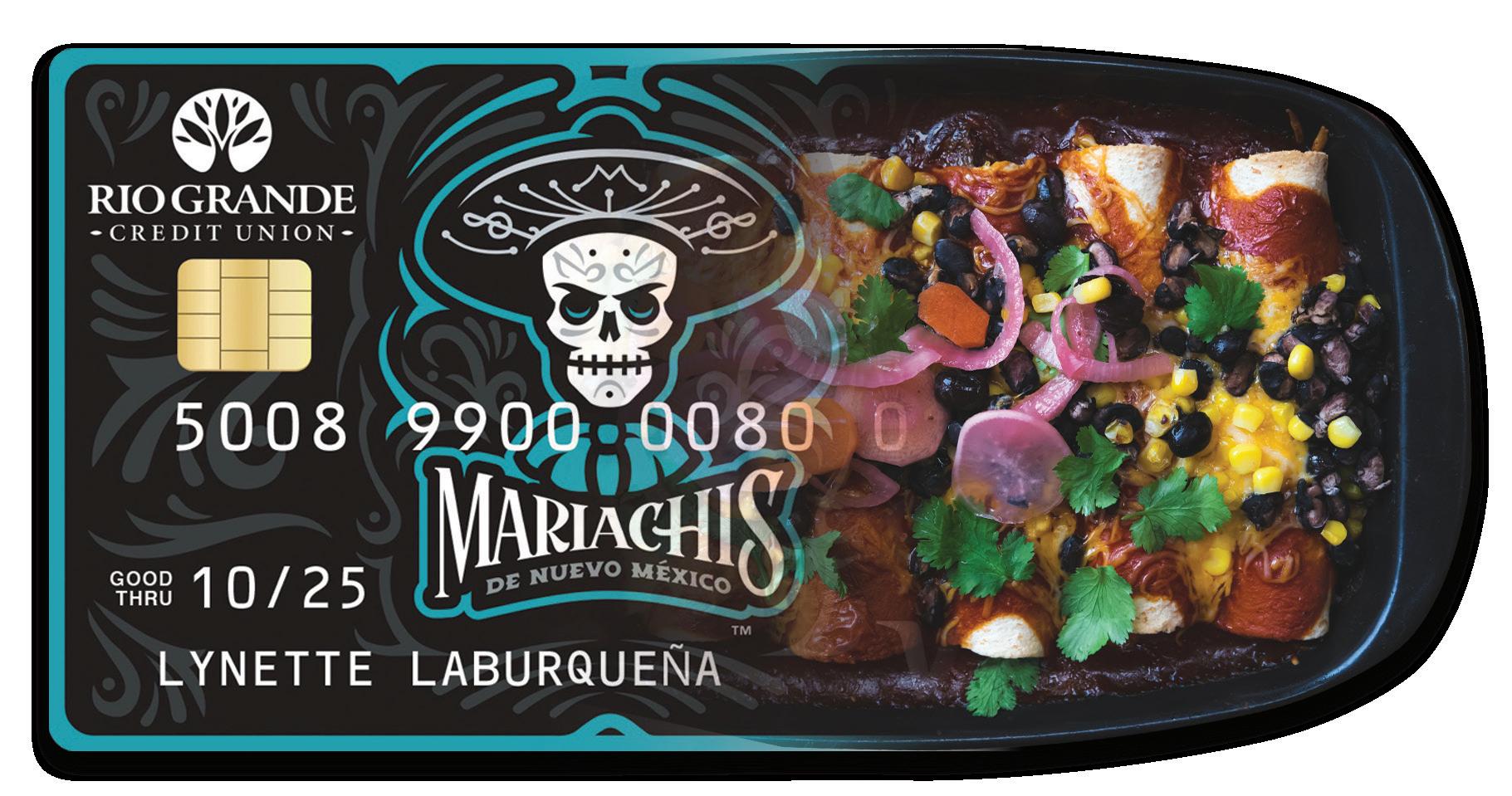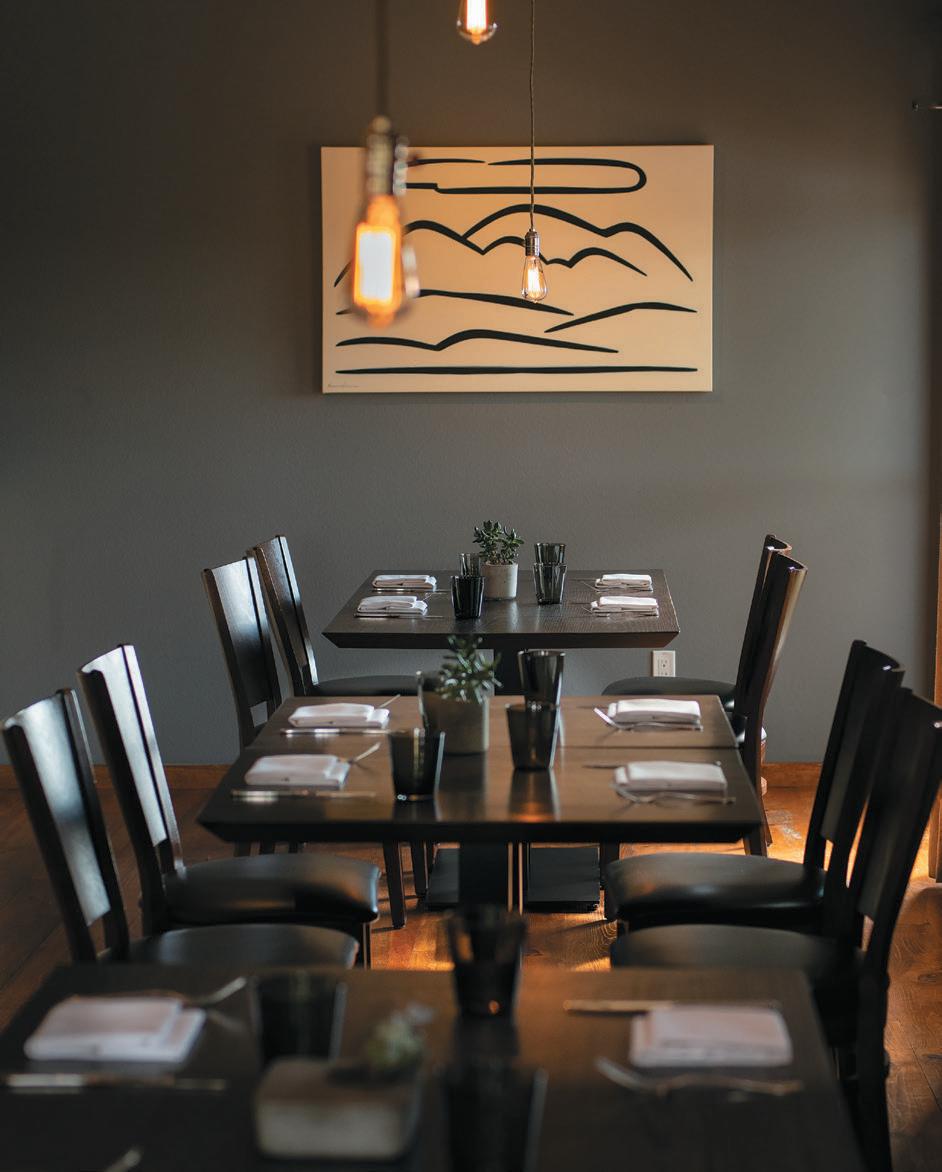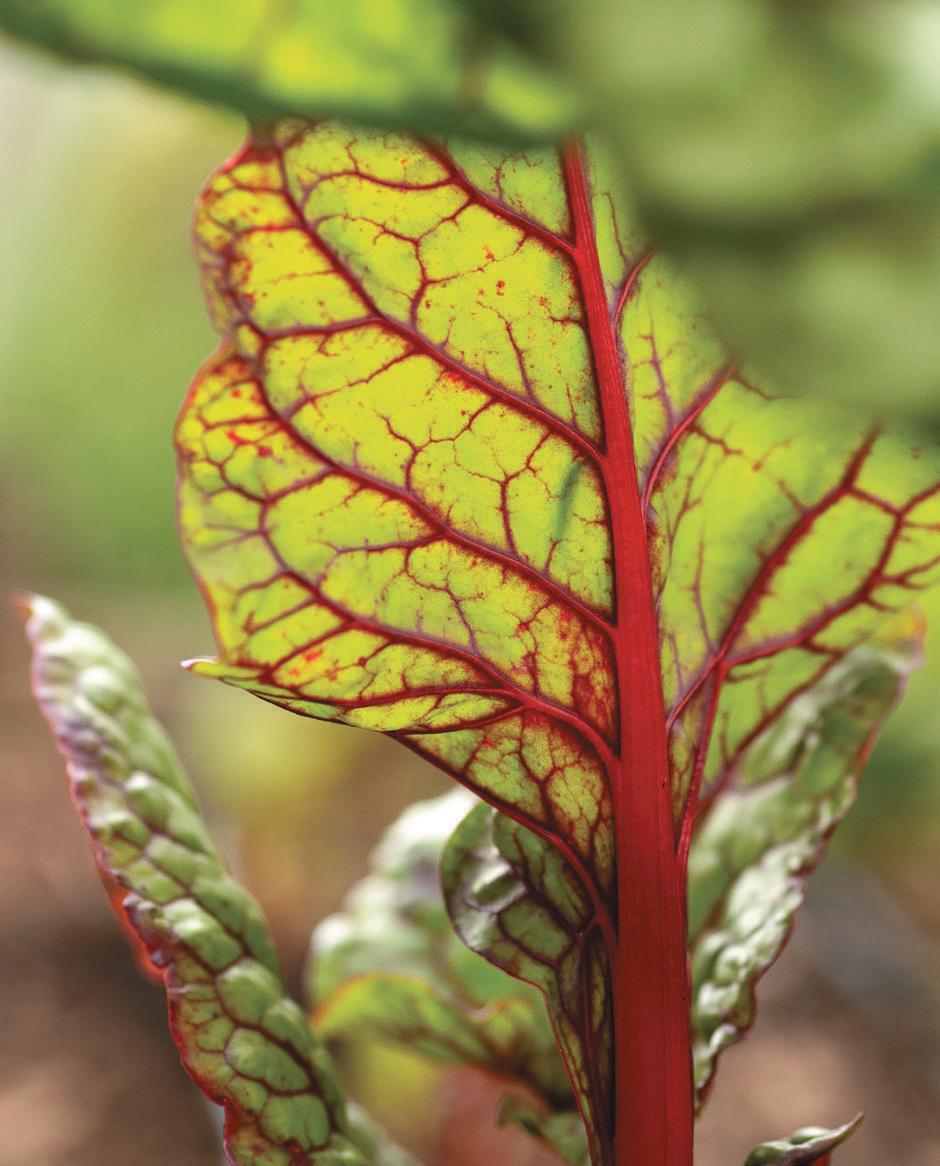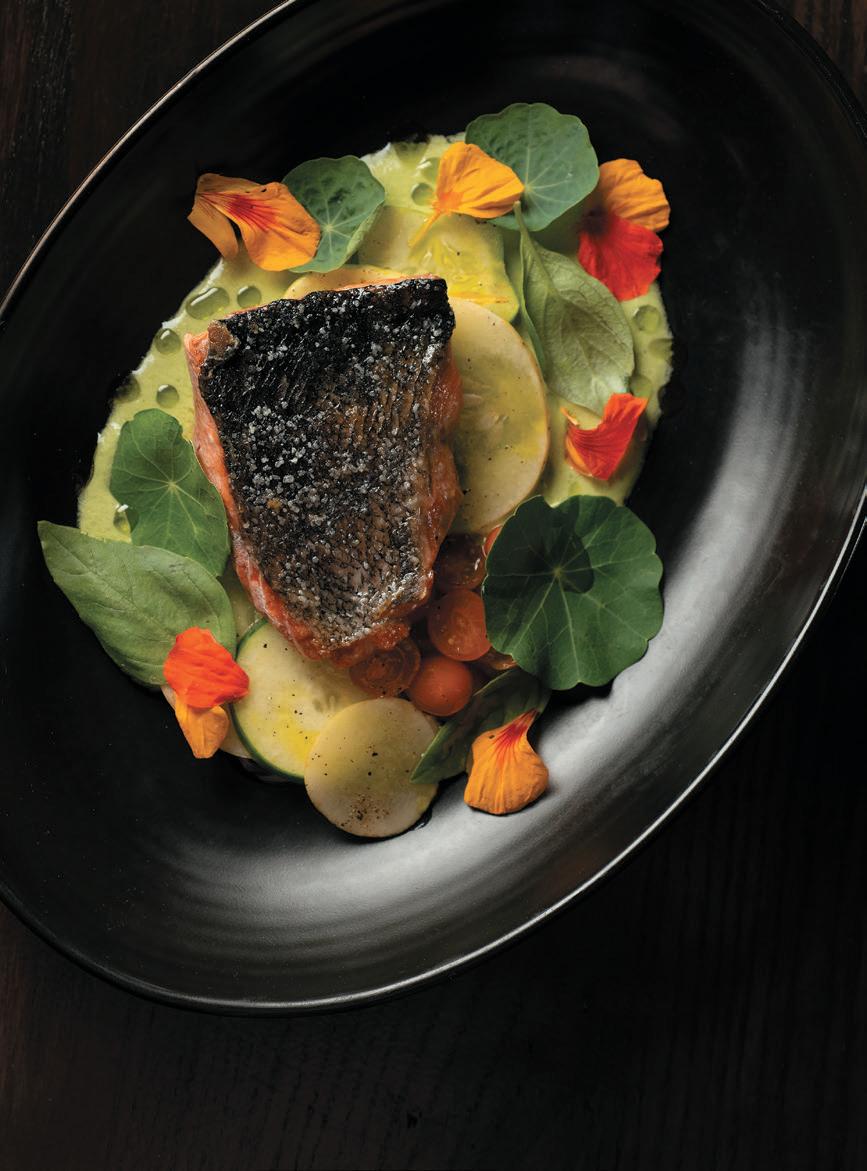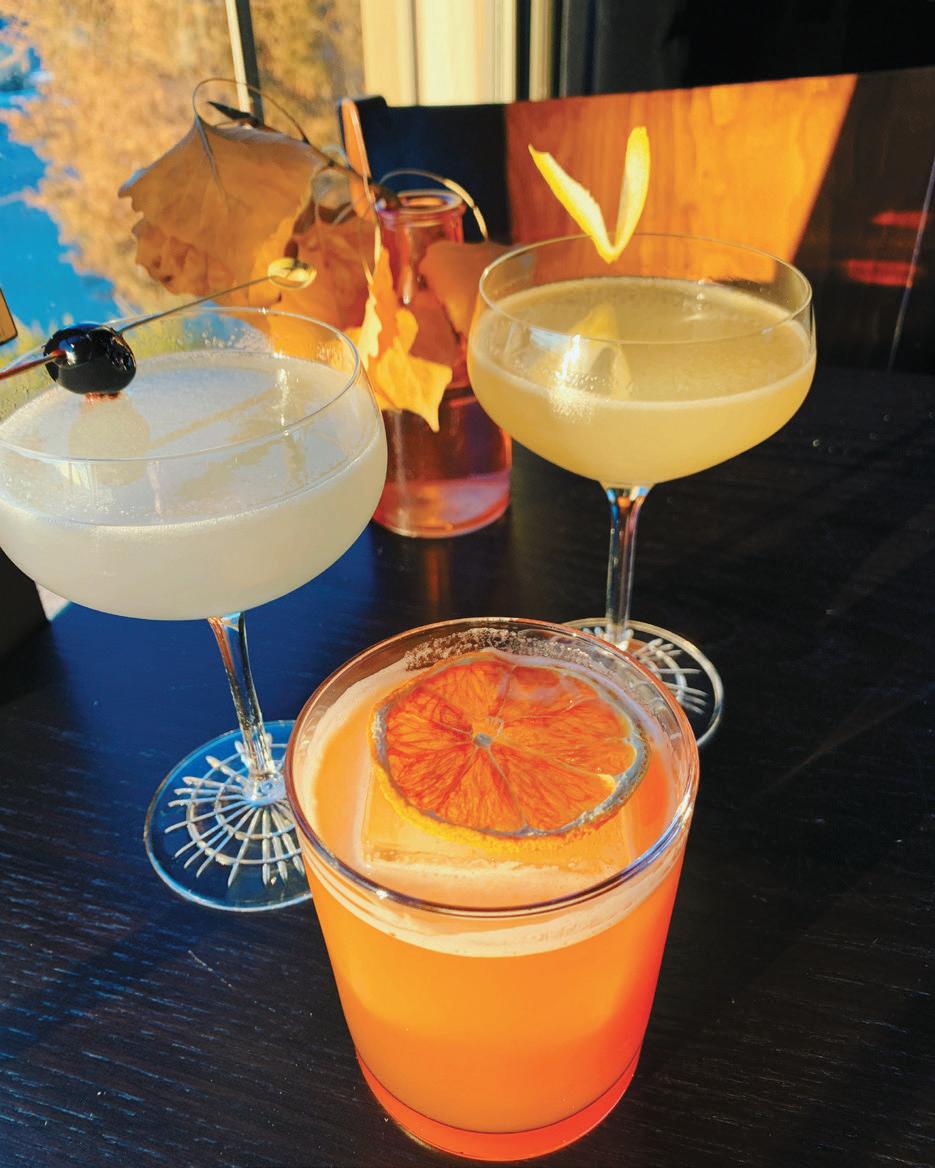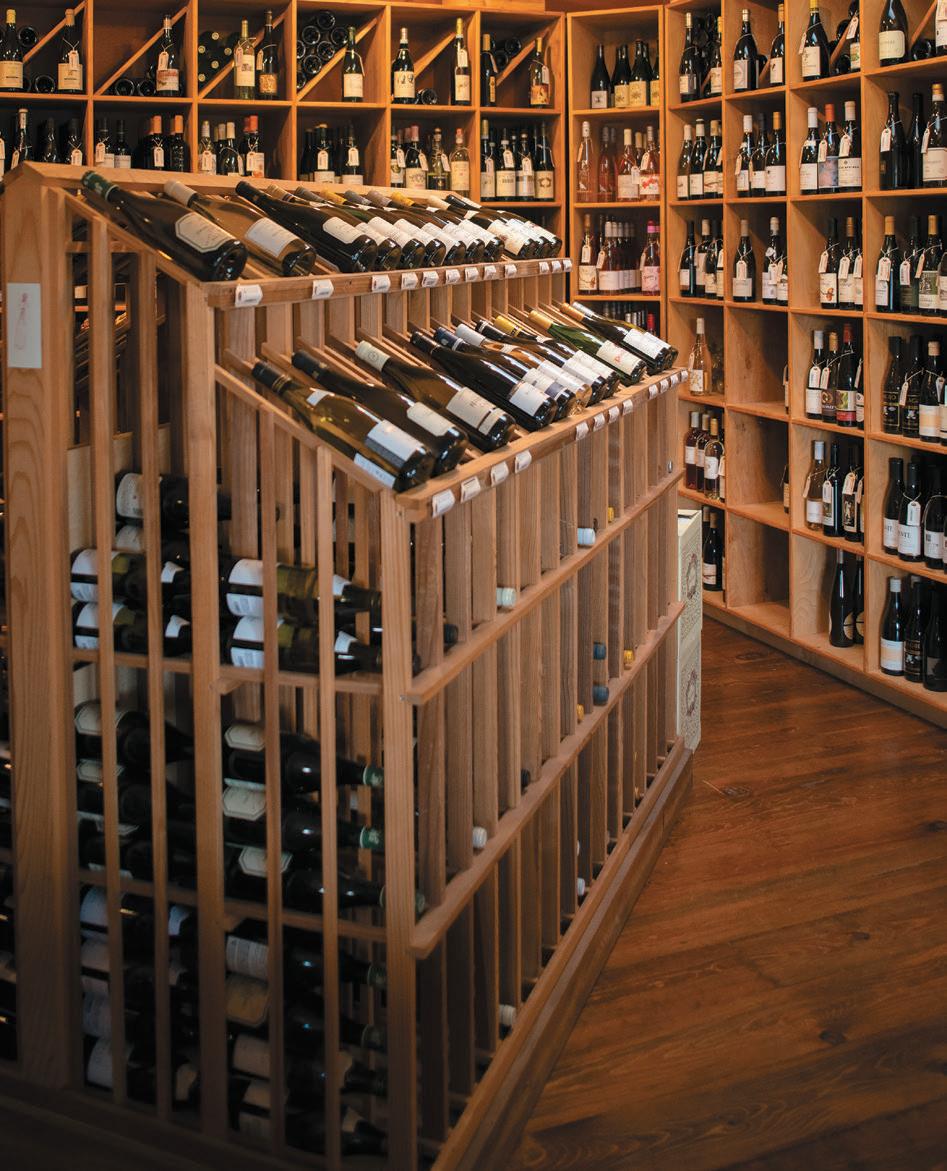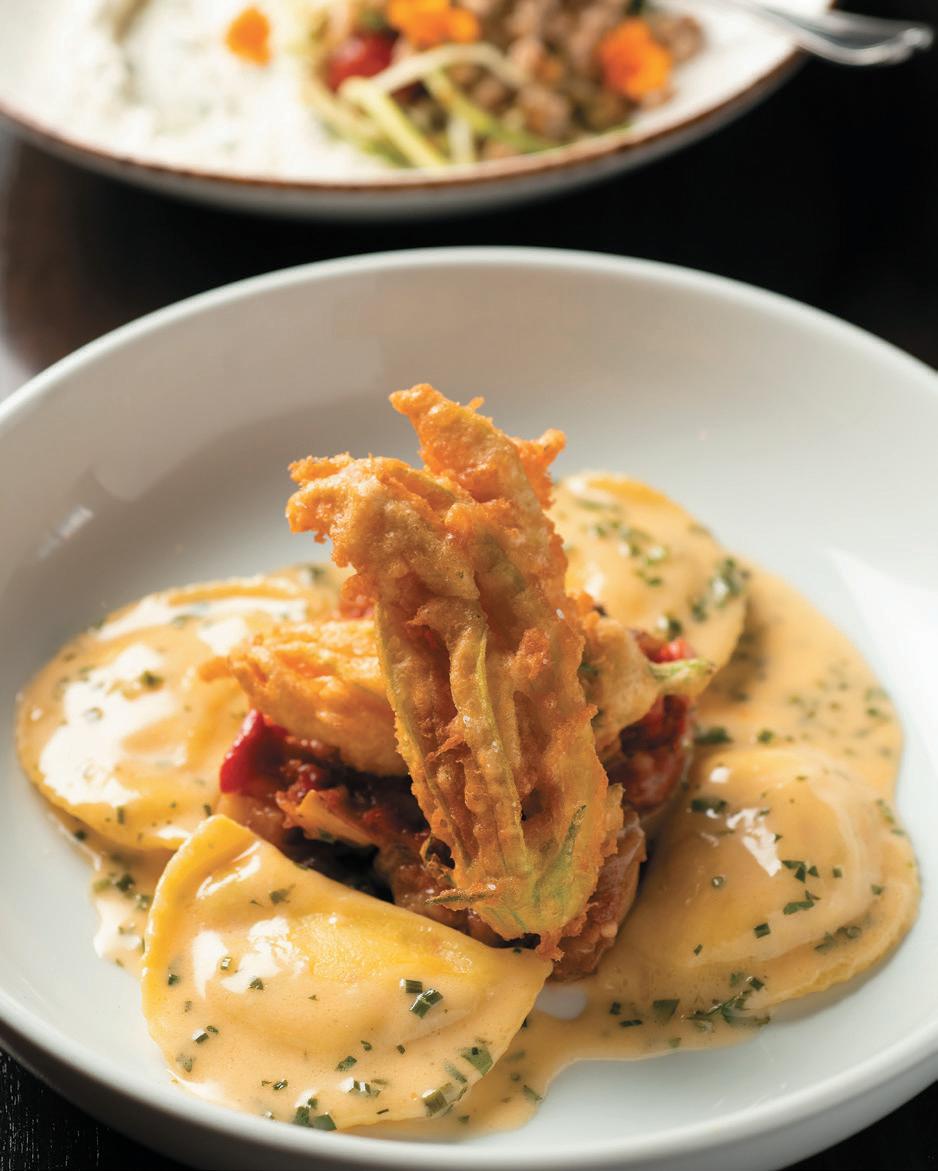edible NEW MEXICO
THE STORY OF LOCAL FOOD, SEASON BY SEASON















The year is 2023. The scene is territory known by many names, some of them closely guarded secrets. These lands have changed hands many times, and even today, disputes in ownership persist—not only in fact but in possibility. Like the Bedouin lands of North Africa, these deserts and dunes have stood in for distant planets, alien terrain. Less evident to outsiders is the remarkable biodiversity of these lands, and the tenacity of their inhabitants. Among them are many who believe the earth has a future.
The stories in this issue of edible New Mexico are no more science fiction than the view from your window, but, like the artwork of Indigenous Futurism, these are stories where time bends. They are stories where la milpa, as the practice of intercropping squash, beans, and corn is known in Mexico and Central America, is more than a historical practice. These stories of the Three Sisters—a term said to come from the Haudenosaunee people—are stories in the present tense, stories where the past refracts the future.
In these pages, Ungelbah Dávila-Shivers shares a love letter to beans that is also a song of praise for her centenarian grandfather, whose bean adventures have sustained him throughout his life. Cassidy Tawse-Garcia threads narratives of corn and place through the intimate ritual of a very contemporary cup of atole. And in exploring local stories of squash, leticia gonzales reflects on the ways human relationships—with food, and one another—transcend our lifetimes. This is true, as we learn from Moises Gonzales, of wild food gathering traditions too.
The practice of storytelling may seem anchored in the past, but, like planting trees and saving seeds, it is rooted in a commitment to the future. Perhaps nothing better illustrates this than our dispatch from Alexandria Bipatnath. Writing from the Navajo Nation, she introduces a Diné-owned company producing organic food for the little ones poised to inherit the world.
PUBLISHERS

Bite Size Media, LLC Stephanie and Walt Cameron
EDITOR
Briana Olson ASSOCIATE EDITOR Susanna Space
COPY EDITORS
Marie Landau and Margaret Marti DESIGN AND LAYOUT Stephanie Cameron
PHOTO EDITOR Stephanie Cameron EVENT COORDINATOR Natalie Donnelly

VIDEO PRODUCER Walt Cameron
SALES AND MARKETING
Kate Collins, Melinda Esquibel, Gina Riccobono, and Karen Wine
PUBLISHING ASSISTANT Cristina Grumblatt
CONTACT US

Mailing Address: 3301-R Coors Boulevard NW #152, Albuquerque, NM 87120 info@ediblenm.com ediblenm.com

SUBSCRIBE ∙ LETTERS





EDIBLENM.COM
We welcome your letters. Write to us at the address above, or email us at INFO@EDIBLENM.COM
Susanna Space, Associate EditorBite Size Media, LLC publishes edible New Mexico six times a year. We distribute throughout New Mexico and nationally by subscription.
Subscriptions are $32 annually. Subscribe online at ediblenm.com/subscribe
No part of this publication may be used without the written permission of the publisher.
© 2023 All rights reserved.
Alexandria Bipatnath is Anishinaabe and Guyanese from Toronto, Canada. She is a clinical integrative nutritionist and chef who specializes in First Nation fusion foods. Bipatnath founded The Wholesome Conscious in 2018, which began as a catering company and now offers a wide variety of services.
Stephanie Cameron was raised in Albuquerque and earned a degree in fine arts at the University of New Mexico. Cameron is the art director, head photographer, recipe tester, marketing guru, publisher, and owner of edible New Mexico and The Bite.
Ungelbah Dávila-Shivers lives in Valencia County with her husband, Larry, and daughter, Tachi’Bah. She owns Silver Moon Studio in Bosque Farms.
leticia gonzales lives and works in Santa Fe.

Moises Gonzales is an associate professor of urban design at the School of Architecture and Planning at the University of New Mexico. He is the co-editor of the book Nación Genízara: Ethnogenesis, Place, and Identity in New Mexico (University of New Mexico Press, 2019). He is a danzante of the Matachín and Comanche traditions of the Sandia Mountain communities.

Briana Olson is a writer and the editor of edible New Mexico and The Bite. She lives in Albuquerque.



Susanna Space, a writer and twenty-year resident of Santa Fe, is the associate editor of edible New Mexico and The Bite. When she’s not covering the local food scene, she writes essays about topics including animal rights, meteors, and the cultural history of the Southwest.


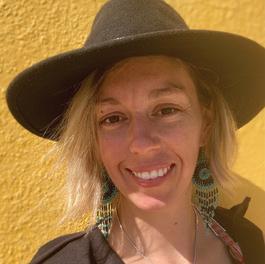

Cassidy A. Tawse-Garcia is a storyteller, cook, and PhD student in human-environment geography at the University of New Mexico. She lives in Albuquerque with her cat, Ham, and six chickens. She is the owner of Masa Madrina, a pop-up food project.
Marisa Thompson is New Mexico State University’s extension service urban horticulture specialist. In addition to landscape mulches and tomatoes, her research interests include abiotic plant stressors like wind, cold, heat, drought, and soil compaction. She writes a weekly gardening column, Southwest Yard & Garden, which is published in newspapers and magazines across the state. Readers can access the column archives and other hort-related resources at desertblooms.nmsu.edu. Find her on social media @NMdesertblooms.
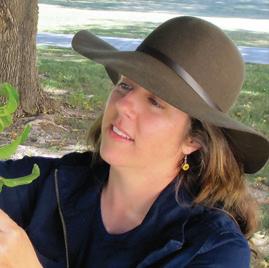

An edible Local Hero is an exceptional individual, business, or organization making a positive impact on New Mexico's food systems. These honorees nurture our communities through food, service, and socially and environmentally sustainable business practices. Edible New Mexico readers nominate and vote for their favorite local chefs, growers, artisans, advocates, and other food professionals in two dozen categories. (Winners of the Olla and Spotlight Awards are nominated by readers and selected by the edible team.) In each issue of edible, we feature interviews with a handful of the winners, allowing us to get better acquainted with them and the important work they do. Please join us in thanking these Local Heroes for being at the forefront of New Mexico's local food movement.
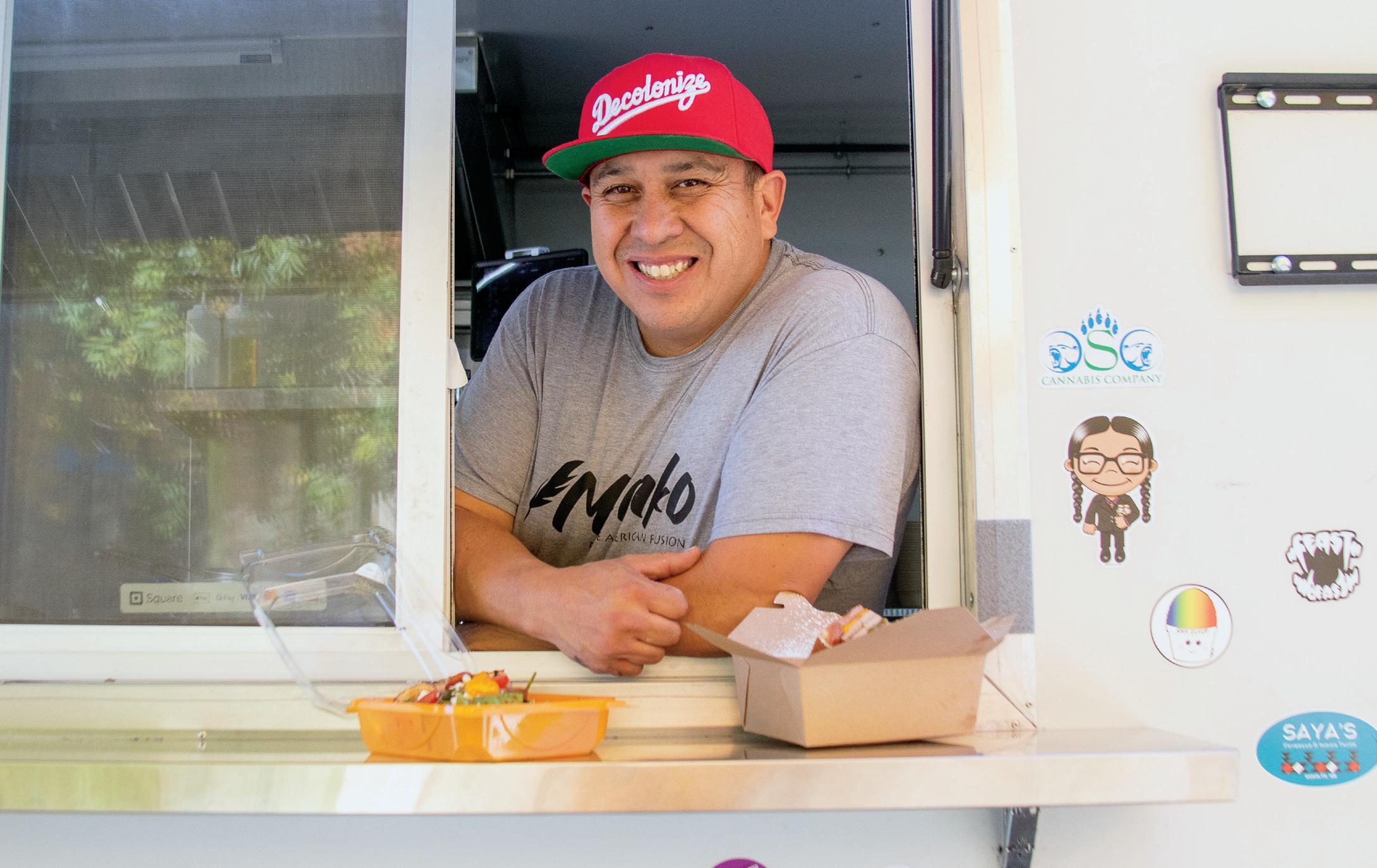 Photos by Stephanie Cameron
Photos by Stephanie Cameron
Chef Ray Naranjo, a Native American with roots from both the ancient Puebloans of the Southwest and the Three Fire Tribes of the Great Lakes, believes in the preservation of the foodways and ancestral knowledge of his people and strives to continue on this path. With the use of modern and ancestral cooking techniques, he pushes the limits of what is known, unknown, and forgotten about the Indigenous food culture of North America. Chef Ray
earned a degree in culinary arts and has more than twenty-five years of experience in the modern restaurant industry, working in kitchens in exclusive hotel and casino resorts in the Southwest and wearing titles ranging from executive chef to food and beverage director. Chef Ray has also been presented with several awards in New Mexican cuisine, with a focus on the chiles of New Mexico.
Visit the new Farm Shop Norte for a unique Los Poblanos shopping experience in downtown Santa Fe. One block north of the Santa Fe Plaza, Farm Shop Norte is housed in a renovated 1935 gas station and farm supply store. This one-of-a-kind environment is a destination for shopping Los Poblanos’ signature lavender products, botanical gin, and Farm Foods, alongside curated objects for the home, and New Mexico wine and spirits. Adjacent, Bar Norte is an intimate space to enjoy a cocktail made with Los Poblanos Botanical Spirits and enjoy a light tasting menu. NOW OPEN 201 Washington Ave., Santa Fe | Tuesdays through Saturdays, 11am - 7pm | LOSPOBLANOS.COM
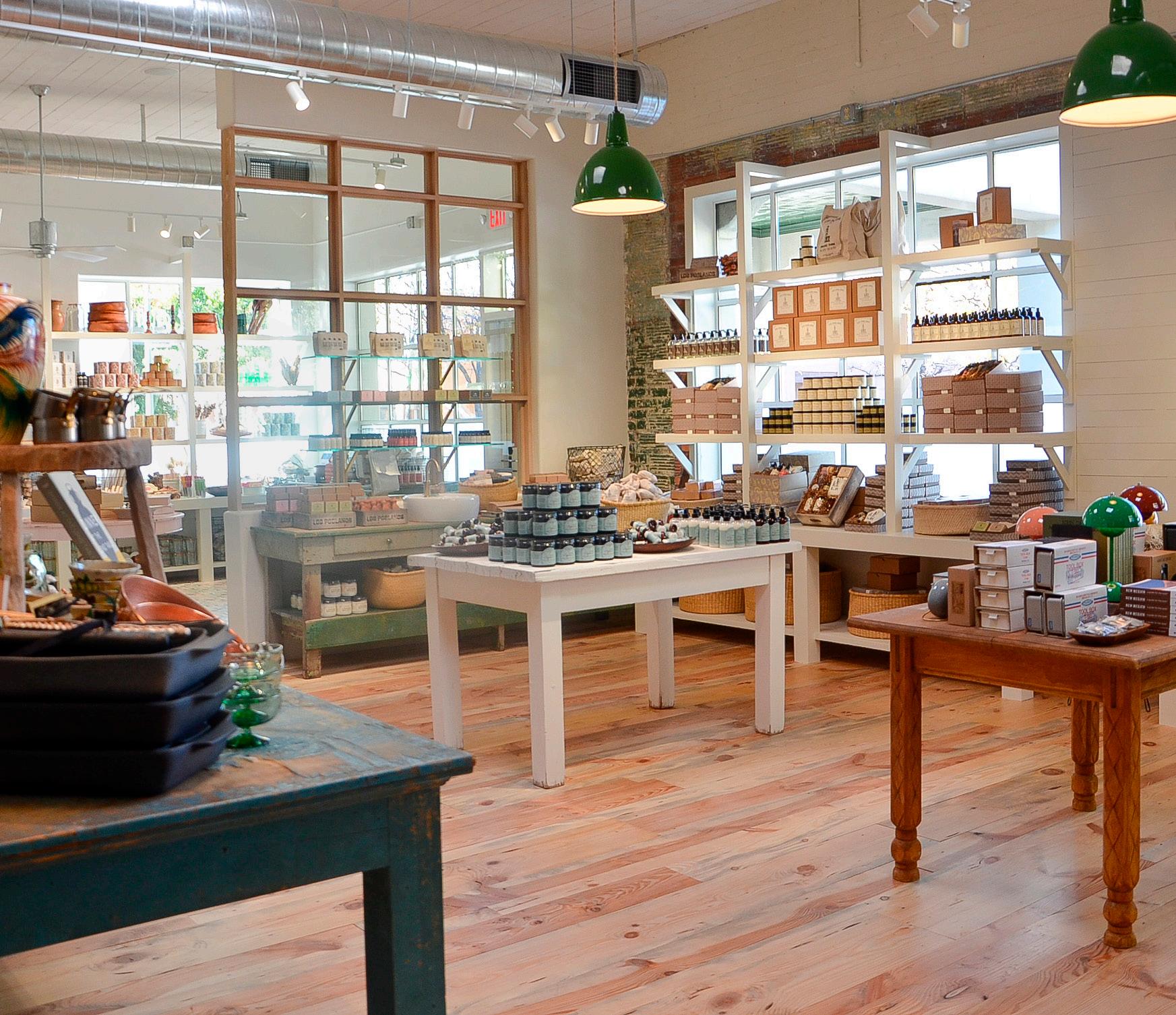
Farm Shop at Town & Ranch (downtown Albuquerque) 1318 4th Street NW
Farm Shop (Los Ranchos de Albuquerque) 4803 Rio Grande Boulevard NW

In the Tewa language, manko is the verb for “come and eat.”
The end product of what is Manko is a career of refining both street food as well as fine dining dishes that fuse the original ingredients of the Americas with modern technology and the cooking of the present. A reversal of colonization.

How has your food truck menu changed and developed over the course of your first year in business? Is there a particular dish that has especially resonated with customers?
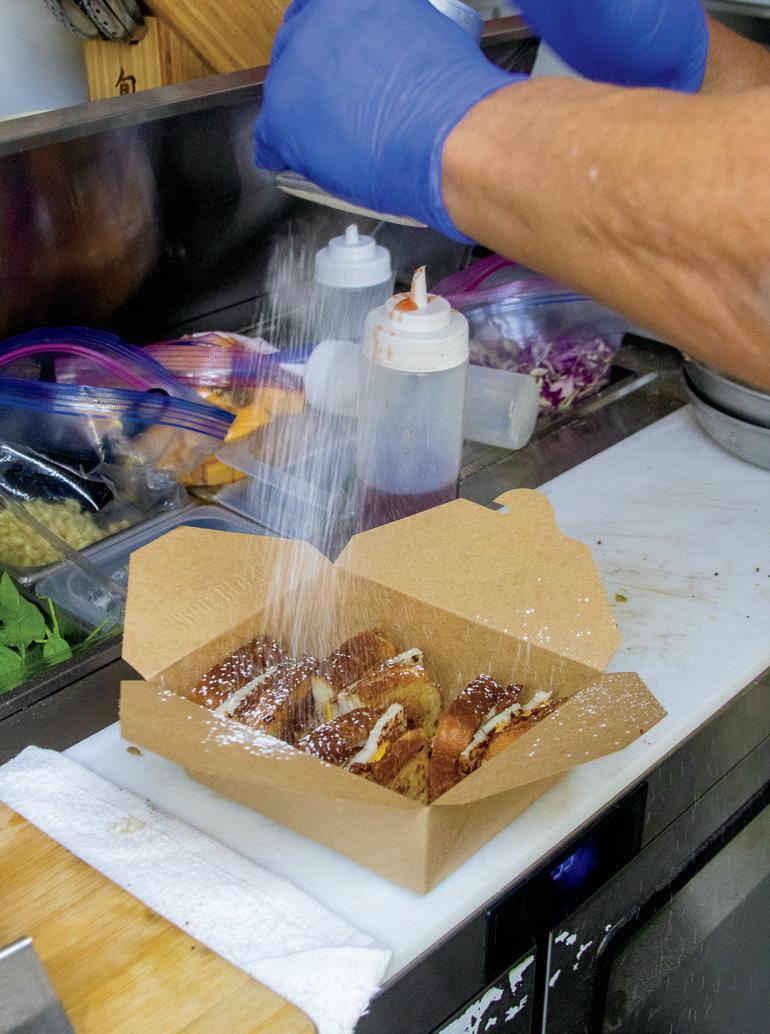
Our menu has developed to meet high-pace needs as well as having enough diversity to please a crowd. Our green chile smashburger is made with free-range buffalo and wrapped in a tortilla. Our turkey sandwich is finished with cactus fruit syrup.
Our new salad is one of significance. Even the name is a hidden meaning—Berries Bird Seed Salad—Berries being the rez nickname for Manko co-owner Nathana Bird. This salad is also the missing link to connecting us to our past and connecting the food truck to my food journey as a chef. With ingredients like popped amaranth and popped quinoa, we can tell the story of our connections between the ancient world and today.
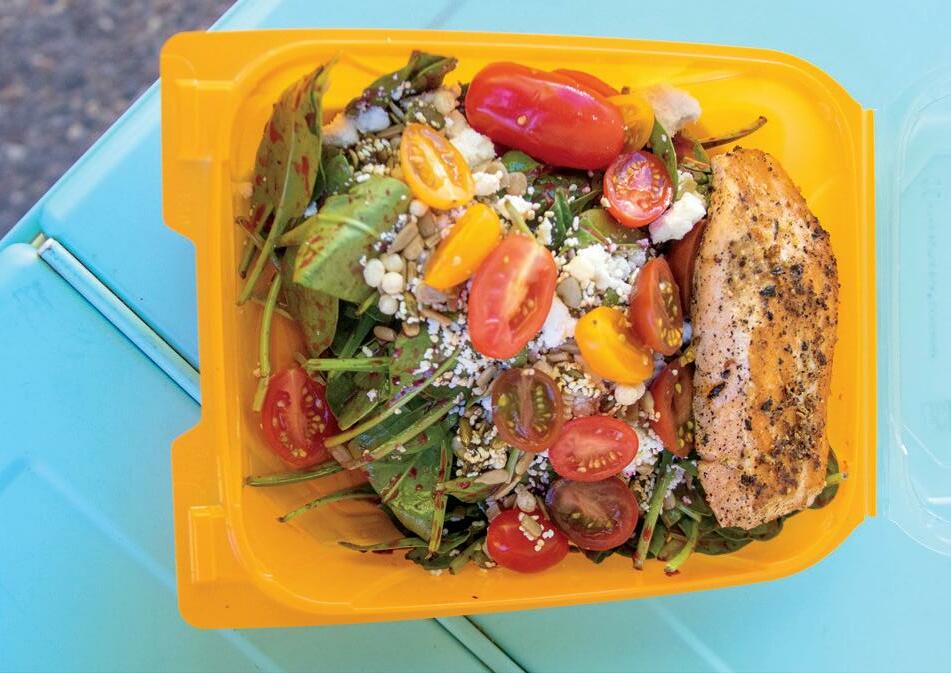
Top: Finishing a Cactus Tempura Turkey Sandwich with cactus fruit syrup. Bottom left: Ray Naranjo with his son Ethan Naranjo. Bottom right: Berries Bird Seed Salad.
We offer free-range bison products from Beck & Bulow and try our best to source the rest of our menu items locally.
You often collaborate with other chefs, whether at events catered by Manko or with the Intimate Indigenous Experiences you hosted while at Indian Pueblo Kitchen. Are there any upcoming collaborations readers should know about?

Collaborations for Native chefs are important to develop what is now surfacing as modern Native American cuisine, and foster healthy competition to challenge our creativity to push this cuisine as far as possible. We have an upcoming collaboration with Chef Crystal Wahpepeh of Wahpepah’s Kitchen in Oakland, California.
Anything else you’d like to share with edible readers?
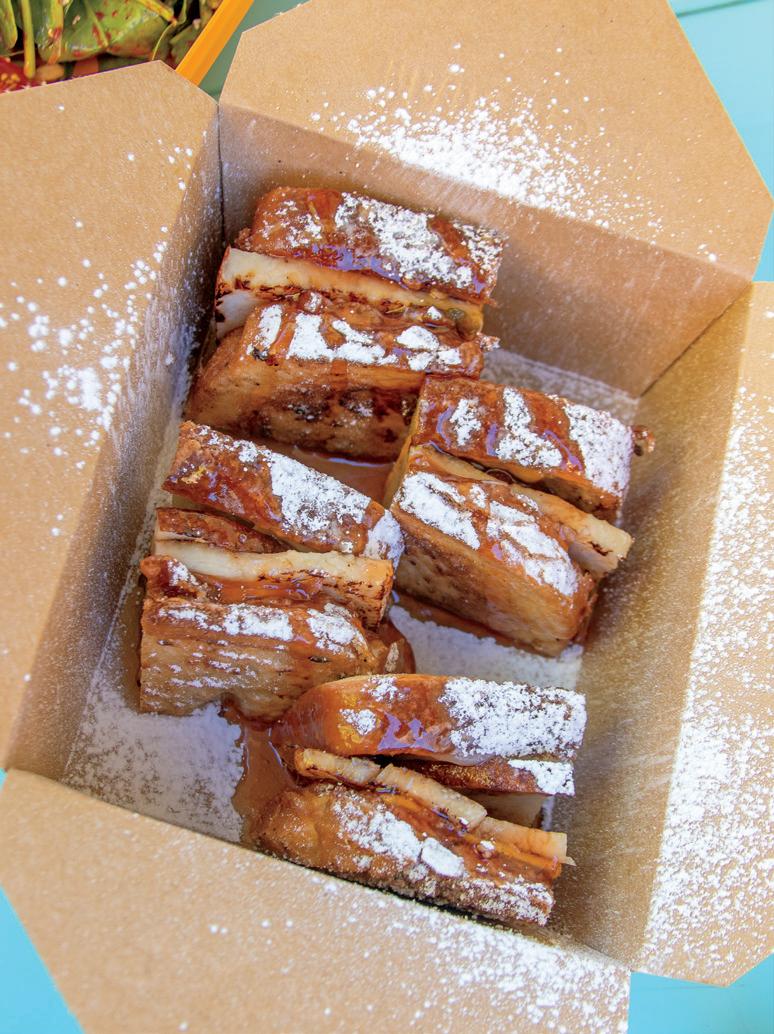
Thanks for this awesome opportunity. Follow us on Instagram or Facebook to check in on our location, as we plan to do plenty of traveling in 2023.
instagram.com/chef_ray_naranjo

Twelve years living and working in Los Angeles. More than a decade in New York City. And a vacation in New Mexico! Kristina Hayden Bustamante says she knew after a few days that she’d be back. In that time, she has honed her love of wine and is now the wine director and
sommelier at The Compound, the only surviving Alexander Girard–designed restaurant anywhere and a keystone of Santa Fe’s Canyon Road. “I have always felt that it is a real honor to be included so intimately in my guests’ dining experience.” In her parallel world, “On my
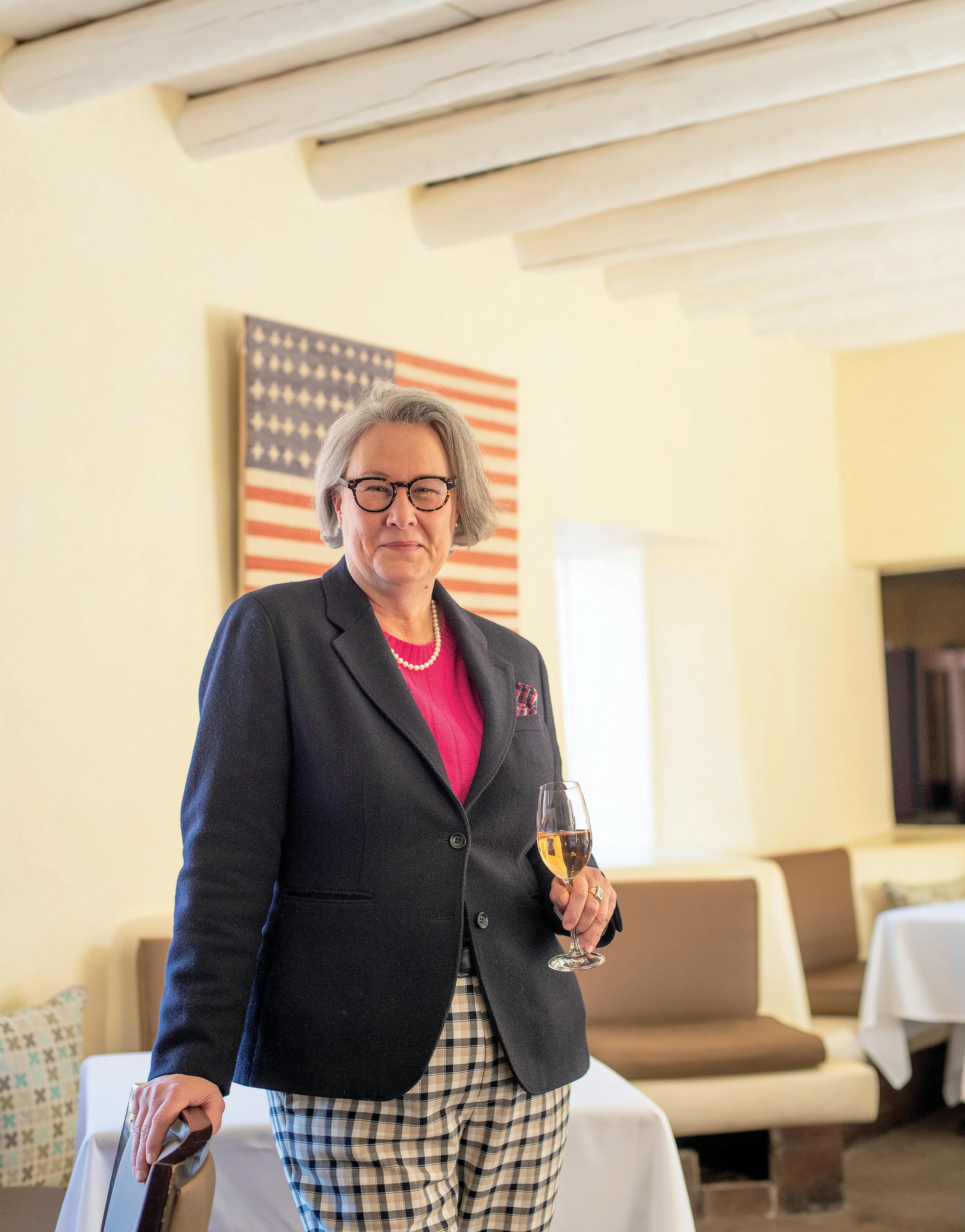
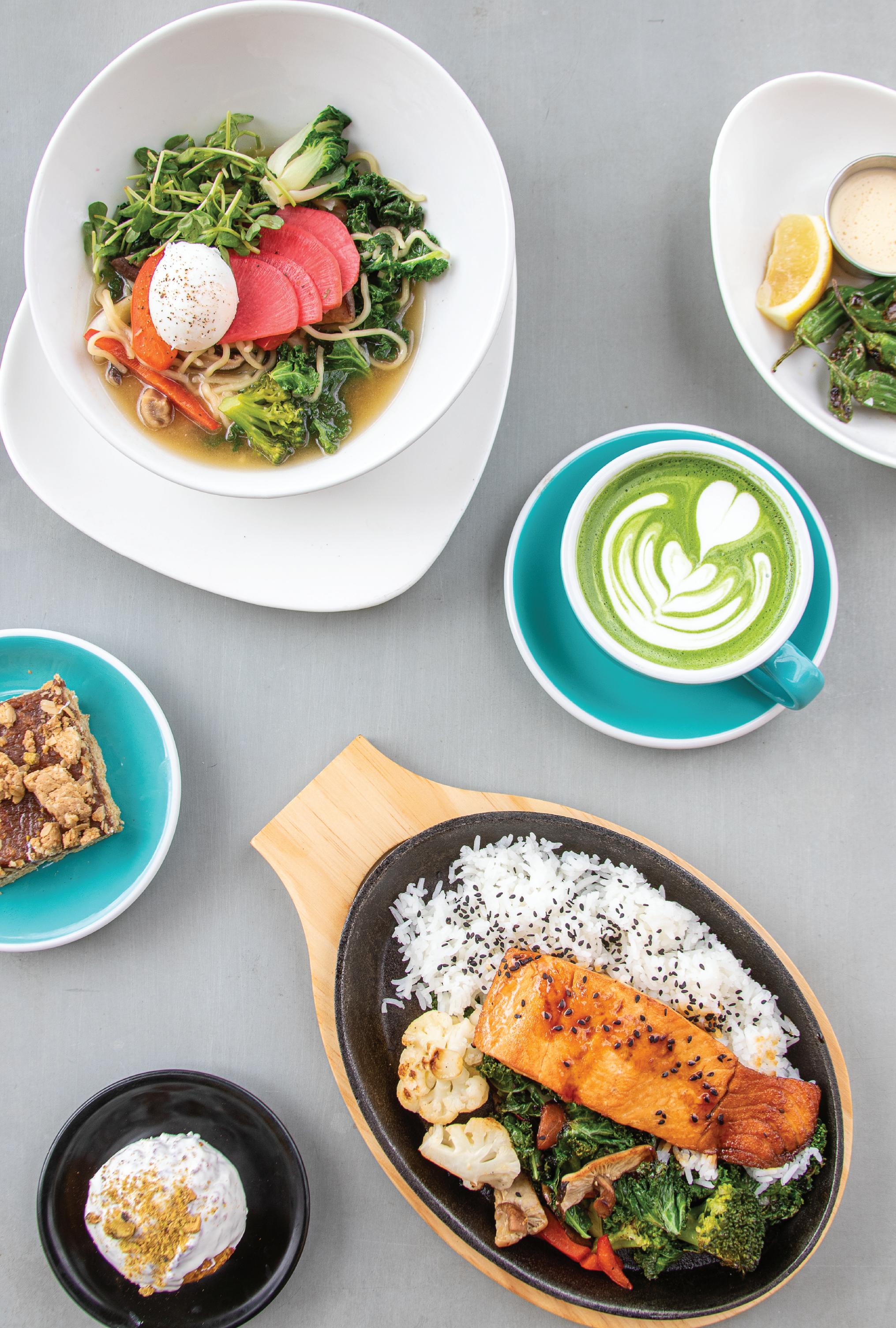

days off,” she says, “I am absolutely obsessed with tea. I have been for many years and have toyed with the idea of studying it in depth.”
What is your philosophy around pairing wine with food, and how does that apply at The Compound?
I wholeheartedly believe that the successful pairing of food and wine can elevate the dining experience to an entirely different level. Our menu changes seasonally and I am always looking for new and unusual wines to complement the menu. If a guest wants the full wine pairing experience, I am prepared to give that to them, but ultimately I believe in drinking what you will most enjoy. It is my job to ask the relevant questions and determine what the guest is looking for.
Would you describe your approach in your selections as more instinctual or more intellectual? More art or science?
All of the above. I am fortunate to have a talent for analyzing and assessing wines not only for quality but for maximum enjoyability, and a big part of it is purely instinctual to me. That being said, there is a never-ending pursuit of information and exploration that comes with my job. I create and build a wine list as if I am writing down a story that I am trying to tell; it needs to be told seamlessly and without any plot holes. I have also done this for quite a while, and with age comes experience. I have been given the opportunity to taste a lot of wine in my day, and each great wine comes with a memory to be reexamined and reflected on. I suppose they are each like a piece of art.
Before coming to Santa Fe, you were a sommelier in Southern California. How is New Mexico wine culture different? What’s special about doing what you do in New Mexico?

I would say that there is very little difference. So many of our guests, both local and from out of town, come with a very sophisticated appreciation of wine. They are well traveled and incredibly adven-
turous. I am also seeing a real demand for natural or biodynamically farmed wines. This is great and it keeps me on my toes. New Mexico makes some pretty stellar wines and has for a long while, and I have made a point of trying to schedule some trips to local wineries so I can really understand what is happening here. I would love to start a local wine section on our list and am really taking the time to explore so I can introduce them to my guests with the care that they deserve. The Compound is an institution in Santa Fe. What’s it like to play such an important role in the experience of those who dine there? How do you balance the preferences of your longtime customers with people newer to the city?
Santa Fe is a special place and I cherish my longtime regular guests. Many have been coming to The Compound for decades. One of the most awesome things, though, about being back in New Mexico is seeing a subtle shift in our guest demographic. I am sure that most people have noticed the influx of young people who have come to Santa Fe during the pandemic. These new guests have changed the way our dining room looks on any given night and they have become our friends and neighbors. Sometimes they come in for the architecture and the art by Alexander Girard, but they always return for the exceptional food and the warmth they receive when they are dining here. Santa Fe is definitely having a moment and I hope that it continues. New Mexico is irresistible!
When it comes to wine, do you have a current personal favorite among vintners or regions?

As far as having a favorite vintner or region, not really. I try not to drink the same thing more than a few times, no matter how much I may love it. I would be seriously behind the eight ball if I didn’t push myself to constantly try new things and explore more obscure regions and winemakers. I am crazy about Corsica right now.



La Montañita Co-op–Nob Hill & Rio Grande
Lowe’s Market on Lomas
Moses Kountry Natural Foods Silver Street Market
Triangle Market in Sandia Crest Lovelace Main Hospital Heart Hospital of New Mexico Sandia National Labs
UPC at UNM
UNM Hospital in La Cocina Cafeteria

Presbyterian Rust Hospital - Rio Rancho INTEL
Nusenda Corporate Office
Presbyterian Cooper Center
UNM Campus - Mercado, SRC, Cafe Lobo
SANTA FE
La Montañita Co-op Kaunes Market

Eldorado Supermart at the Agora Christus St Vincent Hospital Pojoaque SuperMarket
LOS ALAMOS
Los Alamos Cooperative Market
Los Alamos National Laboratory
ESPAÑOLA
Center Market
Presbyterian Hospital TAOS
Cid’s Market
GALLUP
La Montañita Co-op SOCORRO
NMTECH - Fire and Ice Cafe
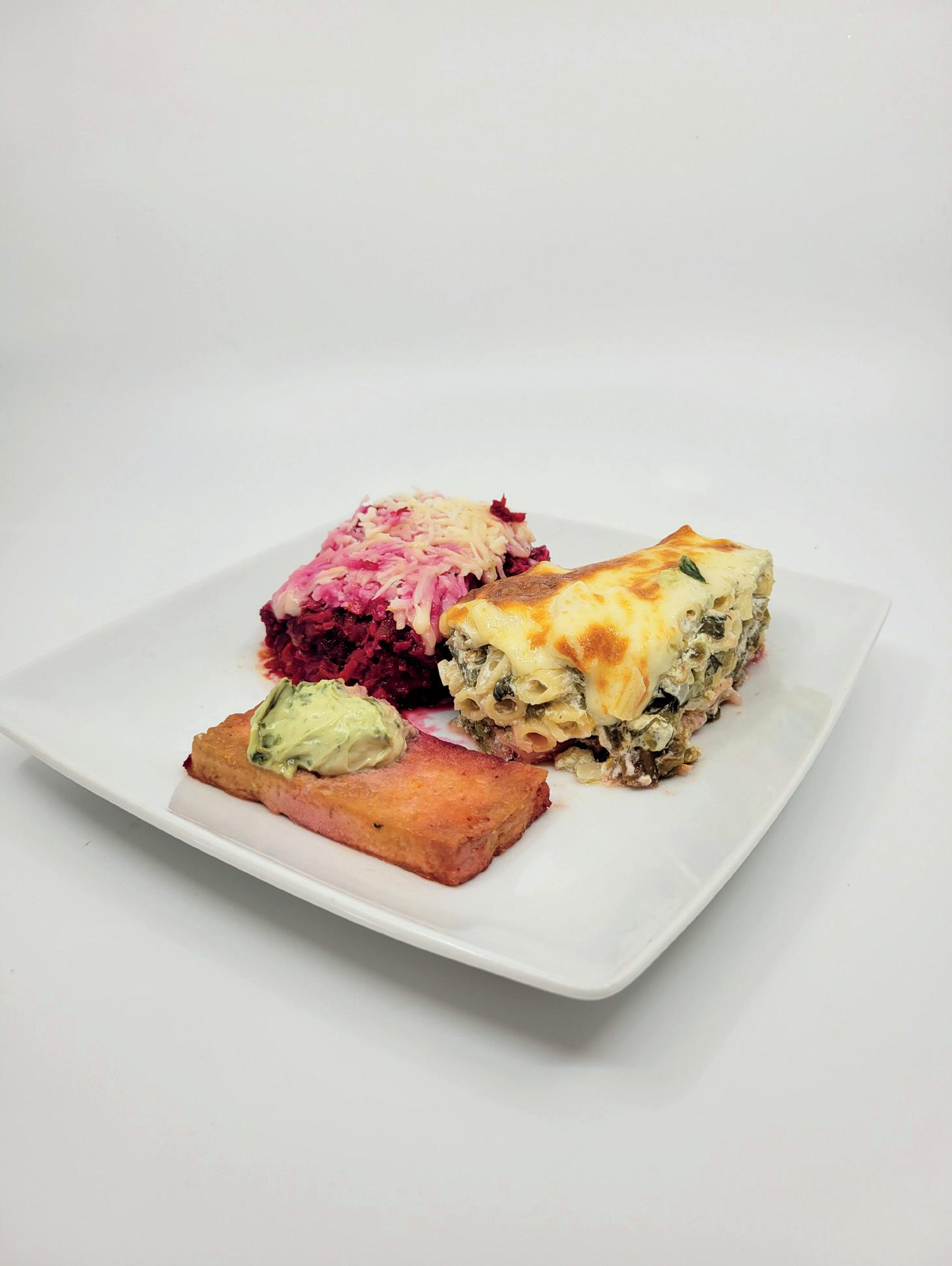
 by Stephanie Cameron
by Stephanie Cameron
“When I began daydreaming of a coffee shop, I was longing for a place where we could meet up with friends, neighbors, coworkers throughout the day—a place that wasn’t work or home, where I could gain a greater sense of community,” says Pilar Westell, owner of Zendo Coffee in downtown Albuquerque. Established in 2013, Zendo provides expertly crafted coffee and showcases the finest food venues from across the city in its burritos and sweet treat offerings. Zendo also provides a platform for local talent in its rotating monthly
art shows. Now, as from the start, “Our passion is providing a space for people to get to know one another and to enjoy the many nuances of coffee in a warm and welcoming place,” Westell says.
Describe the process of creating a perfect coffee drink, from bean to glass.
In creating the perfect coffee drink, there are quite a few essential elements. Perfectly roasted beans are a must-have. High-quality filtered
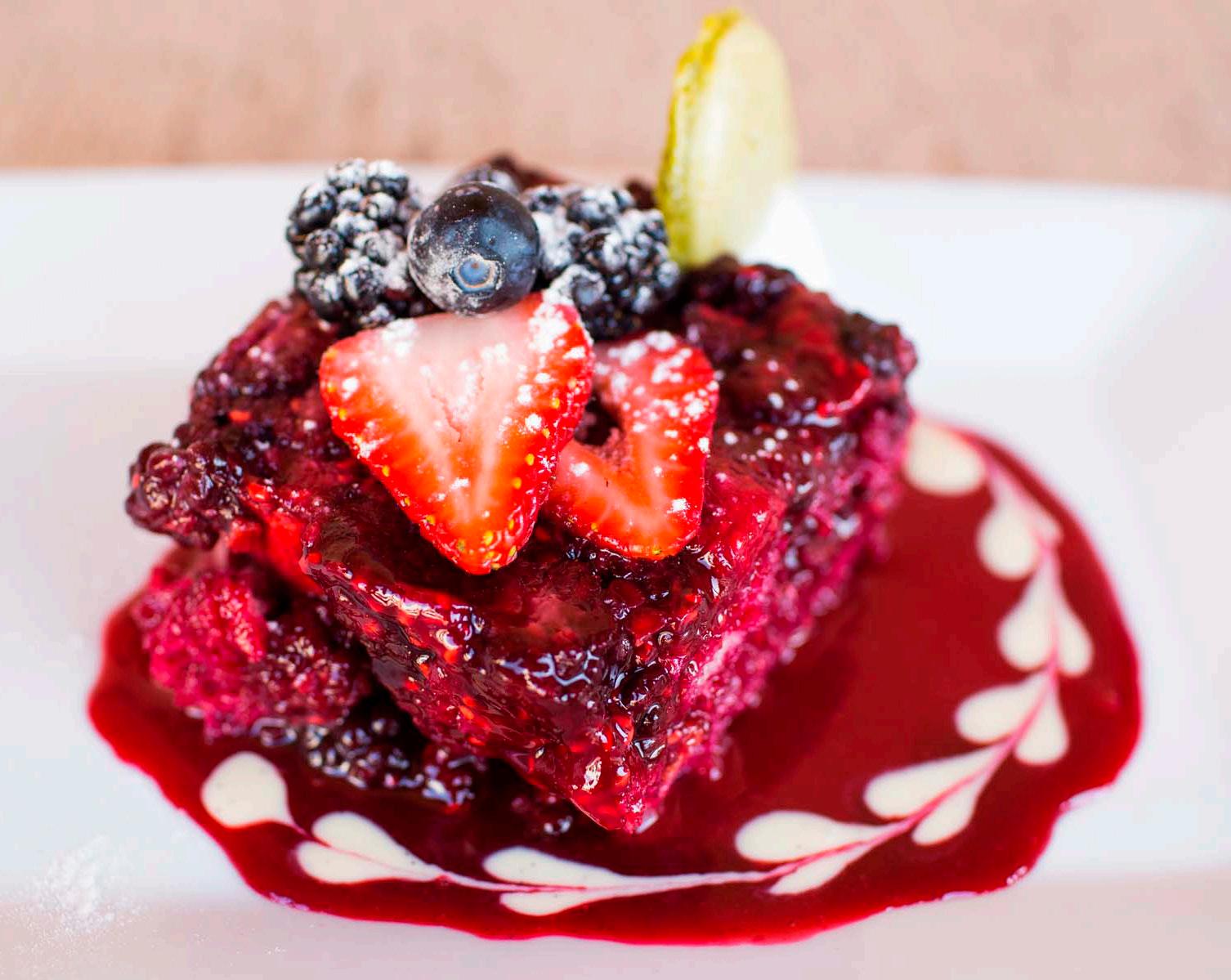
water, dialed-in espresso, and steamed milk all combine to make a perfect coffee drink.
Your menu also includes quite a few tea drinks and other elixirs. What’s your favorite warm non-coffee beverage?
We have many teas, both caffeinated and caffeine free, on our menu. One of our favorites is our Golden Milk, a turmeric-andginger-based drink that is blended with honey and any milk or nonmilk option and topped with local bee pollen. It’s great for inflammation and keeping your immune system strong.
What went into building community and creating the gathering space that is Zendo?
My vision for Zendo has always been based on getting everyone together to really get to know one another. Because we live in such a digitalized world, I felt like something was missing. The concept of the third space—one that is different from home or work—was very important to me. And I felt like we needed more of that in downtown Albuquerque. A place where you could go and always run into an old friend, or meet someone new and be able to feel like a part of something bigger. A community. And that is exactly what has happened at Zendo. People meet each other, work together, and support one another, all while getting to drink the most delicious coffee in town. What does it take to be an incredible barista? In times like these, how do you maintain a loyal, capable staff?
I have the most incredible staff. They are why Zendo is such a success. They care deeply about providing quality drinks, while at the same time holding space for each and every person who walks in the door. We try to provide the kind of experience where each and every person who comes for coffee gets an experience that carries them throughout



the rest of their day. We are dedicated as a crew to providing the utmost hospitality while fostering a never-ending sense of community. And everyone on our small team brings something special to the table. Collectively, we are always trying to elevate what we are doing with coffee. But most importantly, I think each one of the folks working at Zendo is dedicated to making our customers feel welcome, seen, and important to the community at large. Everyone works well together, is invested in each other’s success, and is incredibly supportive of one another. That’s the most important part of being here. I’m constantly humbled by all the people I work with. We show up and work hard but also take care of one another. Zendo is such a success because I have the best staff around.
How do you decide which artist(s) to feature?
We feature a new local artist every single month. Our space lends itself to showing art really well because of our white brick walls and all the natural light. The best part is we have such a diverse clientele that people from all walks of life get to enjoy the art, and the art gets to be shown to many different people from all over. Currently, we accept digital submissions for shows and then work on hanging things that we feel align well with our space and vision.
Anything else you’d like to share with edible readers?
We are incredibly humbled by the support everyone has given us over the years and just want everyone to know how proud we are of how we have grown. We couldn’t be where we are today without such amazing community support.
413 Second Street SW, Albuquerque, 505-926-1636, zendocoffee.com
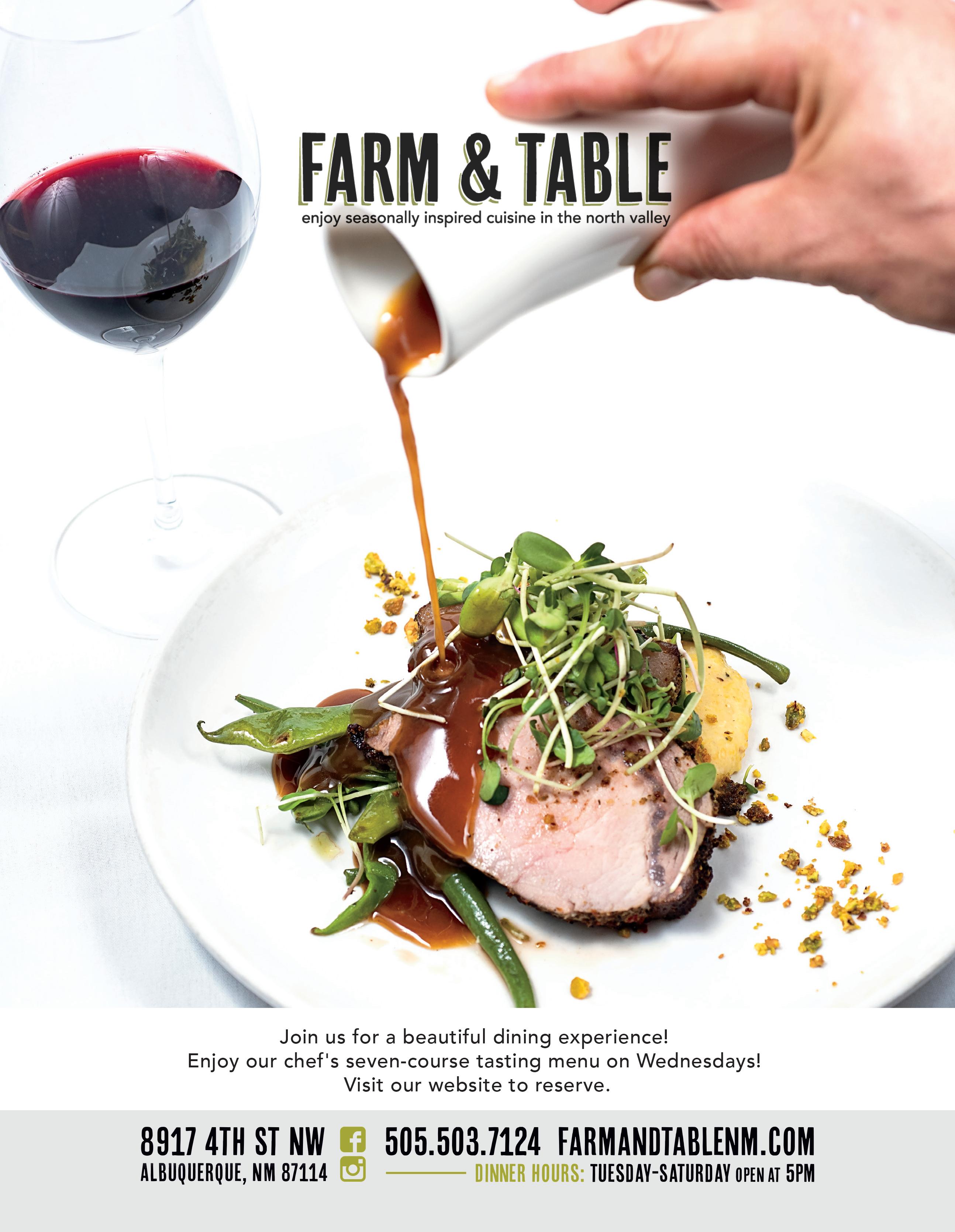
“Community to us is everybody,” says John Haas, whose passion for food led him to serve as M’tucci’s executive chef for nine years. Now a partner and the company’s president, he is driven by seeing the success of others around him. Haas is most proud of the amazing talent that M’tucci’s calls its work family. His goal with food is to create approachable and familiar dishes built around clean, vibrant, seasonal flavors. Many of the dishes are inspired by his time with Italian-born chefs in the Midwest and Italy, as well as creative interpretations of classic dishes and flavor profiles.
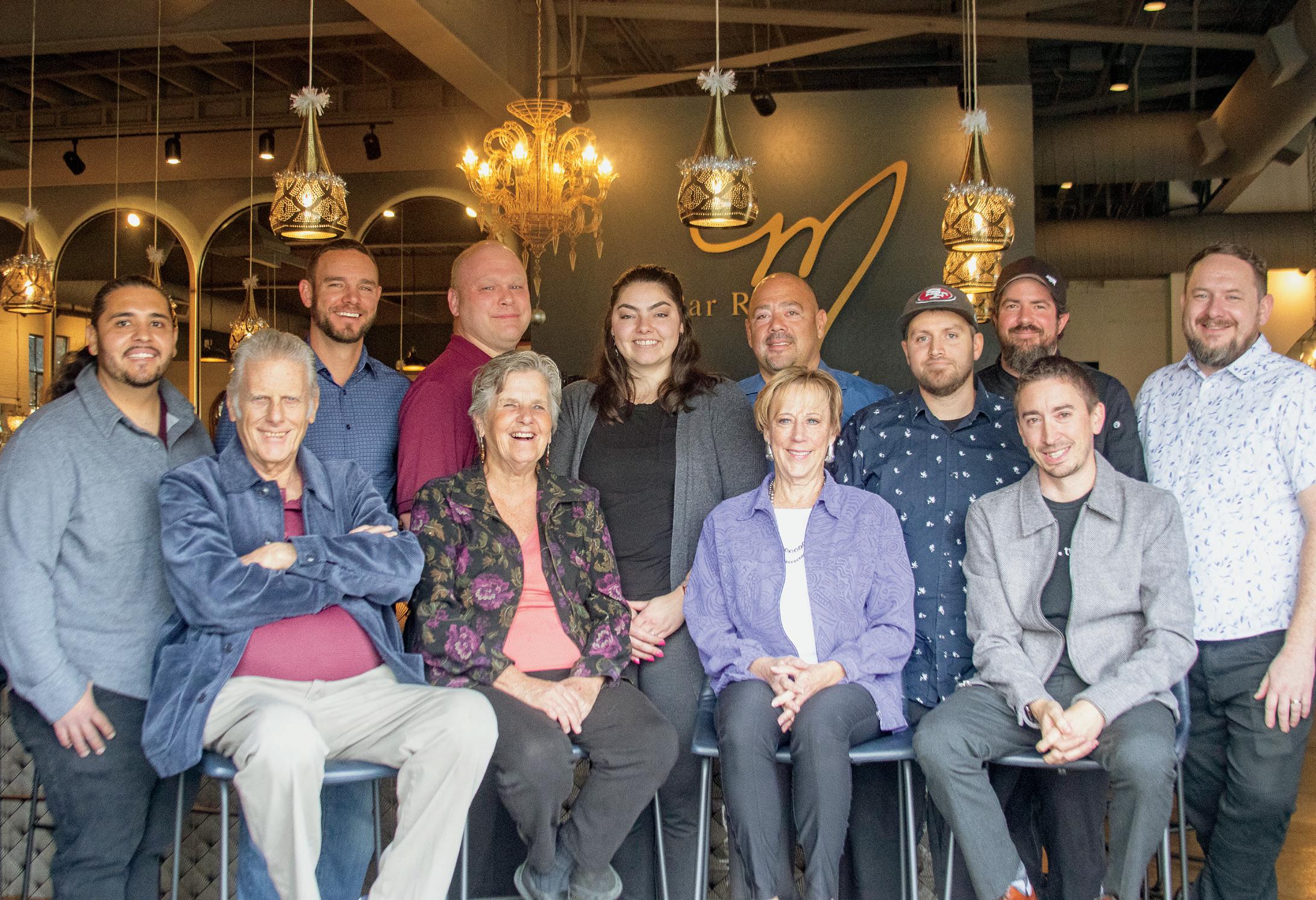
Why Italian? And for someone considering their first meal at any M’tucci’s location, what distinguishes each of your four restaurants?
Italian is something that Jeff Spiegel, M’tucci’s cofounder, felt there was an opportunity for in Albuquerque. I had spent most of the previous ten years preparing Italian cuisine, which made it something that we could quickly agree on. We also believe strongly in the community table and how meals can bring people together. In our minds, few cultures represent that better than Italian culture.

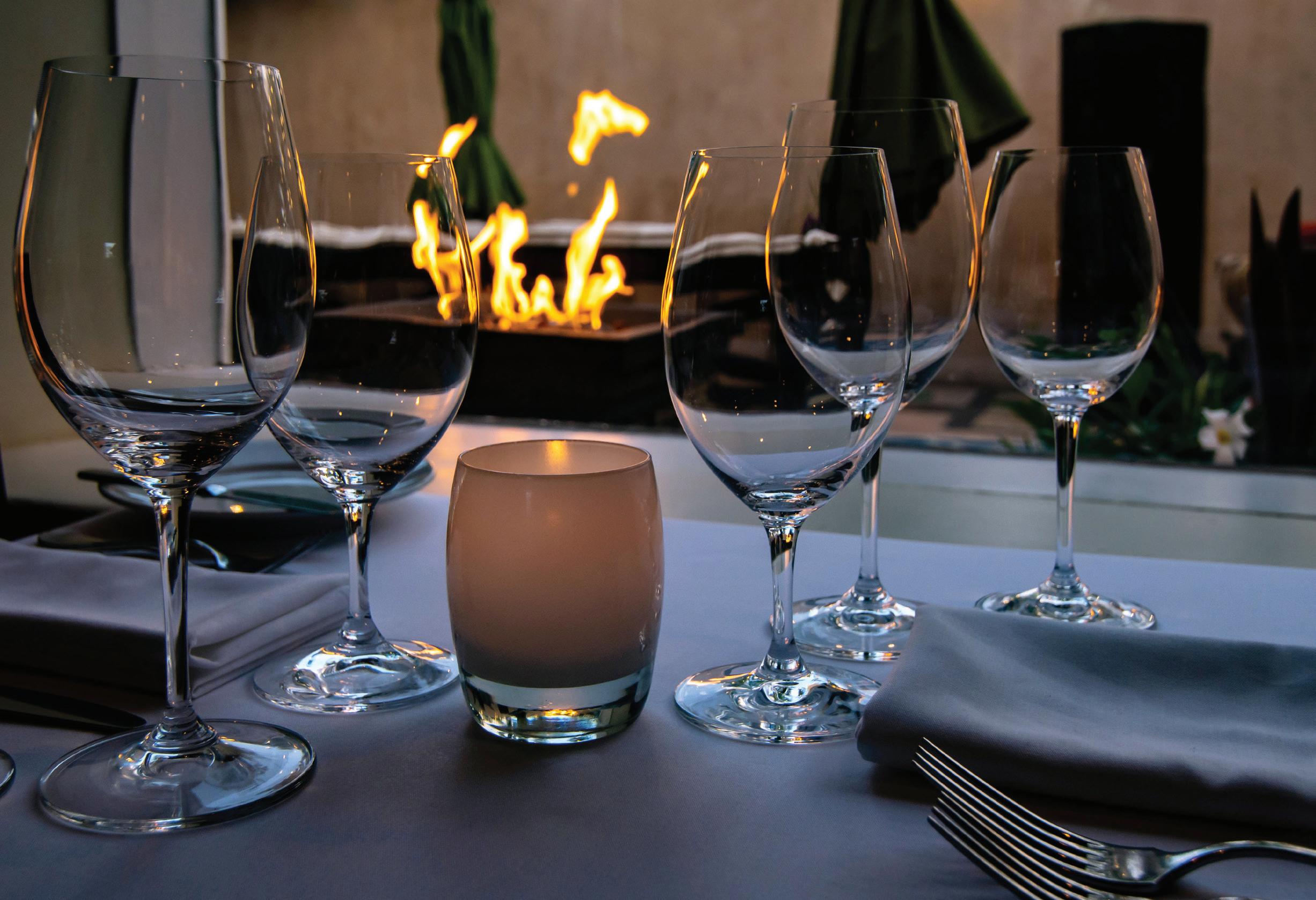
Each location has its own unique identity built around the community that surrounds it. However, there are noticeable common threads. Our “welcome home” style of service, the local neighborhood feel in our bars, and the fact that 25 to 33 percent of the menu can be experienced at every location. It’s fun to look back and see the progression of our company from the first location (M’tucci’s Italian) to our newest (M’tucci’s Bar Roma).
Talk about your salumi and sausages. What is their role on your menus? How do you decide when to use M’tucci’s house-cured meats and when to source from Italy or elsewhere?
From day one, we have worked hard to develop a food program where we can basically say “if you ate it here, we made it here.” However, there are exceptions where we don’t feel we’ve perfected some recipes and we must make the decision to either source it or exclude it from our menu. Our goal is to make everything in-house, but not at the price of serving a subpar product. With these old-world techniques, especially salumi, it can take months or years for us to perfect. It’s in those moments that we will source something until we think we’ve created a superior product.

To take it in the other direction, what is one of your favorite vegetarian dishes? What’s key to building texture and flavor without meat? Dare to offer any opinions on “meat analogues,” a.k.a. fake meat?

If I’m choosing from our menu, it’s undoubtedly eggplant parmesan. I think it’s such a comforting dish and I think the version we serve is just exceptional. I don’t feel there’s really a different approach to vegetarian food. All food is built around a basic premise for me: layered flavors, vibrant and distinguishable flavor profiles, texture, a balance of sweetness and acidity, technical execution, and some degree of approachability.
As far as “meat analogues,” and this may not be the most popular answer, but there is little interest in them among our chef team. We believe in bringing in foods that aren’t processed or preprepared, and it’s safe to say that developing our own versions [of meat analogues] has never been discussed. We’d rather focus on how to balance a dish with the raw ingredients we work with than change our approach to our culinary identity.
Do you have a favorite aromatic? Where do you source it?
Good question. As simple as I like to keep things in life, there is never a simple answer for me; I don’t have a favorite aromatic, but I have favorite combinations of aromatics. Many of them don’t make their way into our restaurants because they don’t fit along the lines of Italian cuisine. One of my favorite more common combinations is garlic, anchovy, olive oil, and tomato.
How do you balance managing night after night of service with cultivating new ideas and growth among your team? Did you start with a vision of giving ownership to motivated staff members, or did that develop over time?
I don’t think it’s so much about balancing it all because it’s not really a balancing act when it’s so intertwined with your approach toward people. If you’re fully committed to the growth of your team, I believe you will discuss and involve them in the process of cultivating new ideas so they can start to align themselves with your thought process. It was always part of our plan and something Jeff and I were in complete agreement on. The value of having a core group of partners who are career focused and committed to the same goal is immeasurable. It was something we felt was instrumental to achieving our longterm vision. I think it’s also important to point out the big difference between giving and earning. Every partner in our company has gone above and beyond the highest expectations to earn their ownership.
Funnily enough, this is a current hot-button topic for us. In the past, probably too many people. In the near future, a very select few (who will remain anonymous for their own protection) will build the playlists.
Anything else you’d like to share with edible readers?
If you love our restaurants, you should reach out to us about catering. It’s one of M’tucci’s largest focuses going into 2023 and, secretly, probably one of the things we are most exceptional at. We really just love to throw a party, whether it’s in our restaurant or at the place of your choice.
Multiple locations in Albuquerque, mtuccis.com
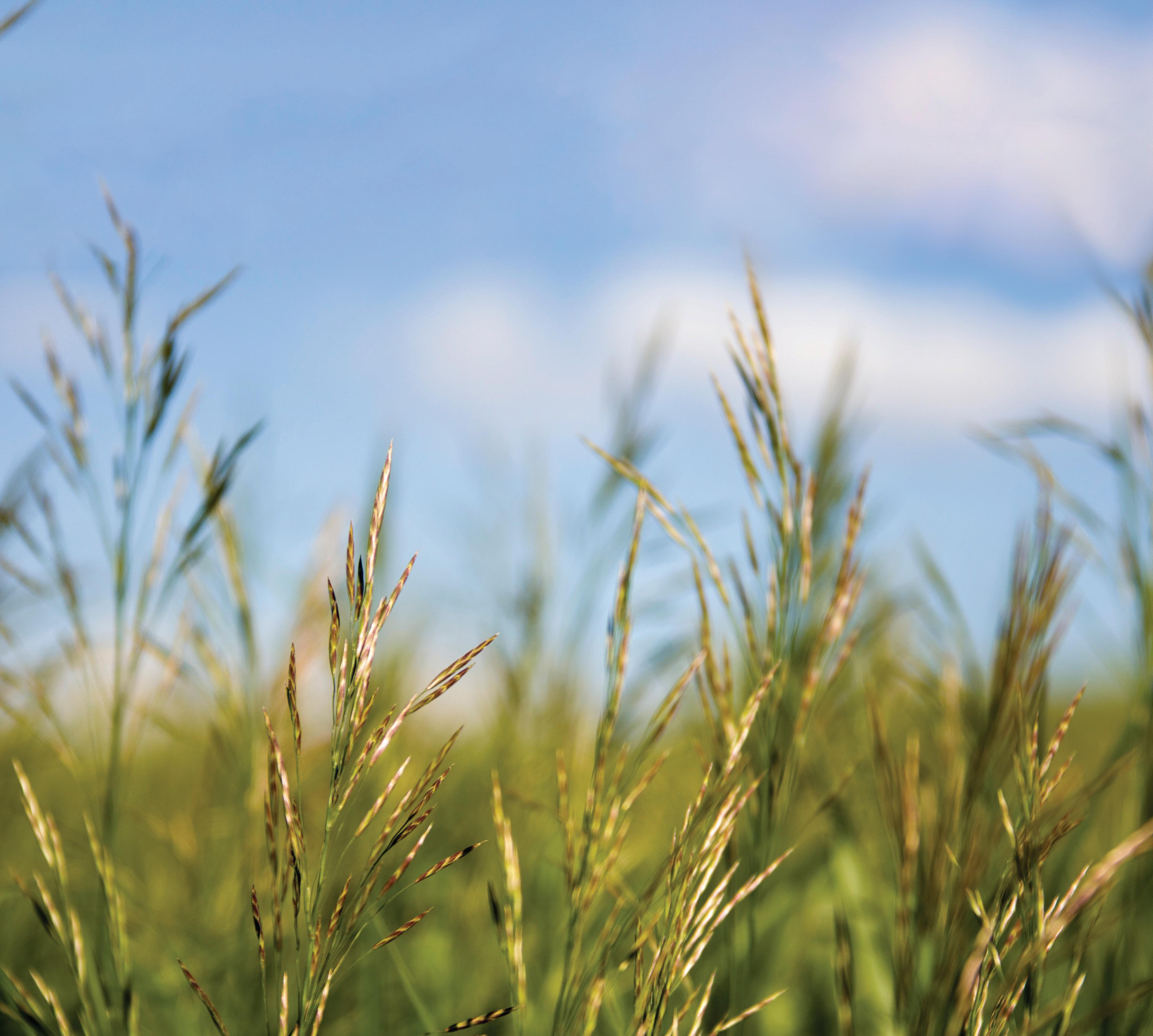






What’s your favorite tree?
Is it the magnolia you napped under on a hot summer day on vacation in Madrid? Is it the live oak that Edgar Allen Poe wrote about while stationed in your hometown? Or the shrubby fig tree outside your grandmother’s kitchen window? Is it the one that creates your favorite flower, or the one that harbors your favorite birds? Or is it the one currently shading your car in the driveway? Perhaps you have a favorite species of tree, like the cottonwoods in the Rio Grande bosque or the bigtooth maples in the Manzano Mountains.
My answer is a resounding “yes” to all of these.
But selecting a tree for your yard now is about finding your future favorite tree, not replicating a favorite from the past. You’ll never fall in love and grow old
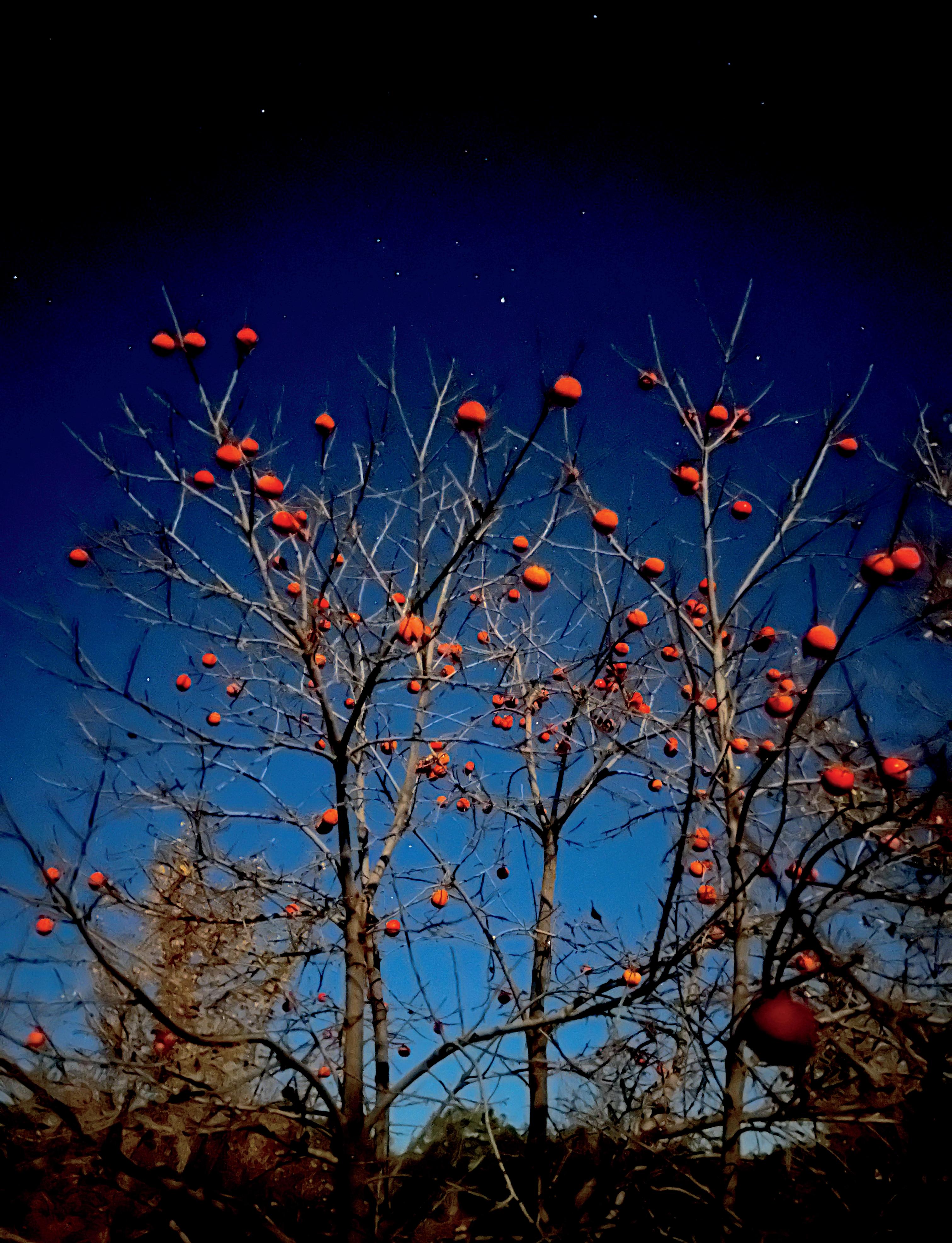
together if your new tree isn’t healthy. And it will thrive into maturity only if it is well suited to your landscape conditions.
Cold hardiness, heat hardiness, drought tolerance, and size are all primary considerations when drafting a wish list and strategizing care in the long term. And the long term is what we’re growing for—not only for our future selves but so that the next resident inherits a healthy tree they can maintain, one that might even become their kid’s childhood favorite.
(Sidenote spoiler alert for those seeking a fast-growing tree: very generally, trees that grow fast die young. With so much energy spent on aboveground growth, less is spent on healthy roots, sturdy limbs, or a strong immune system.)






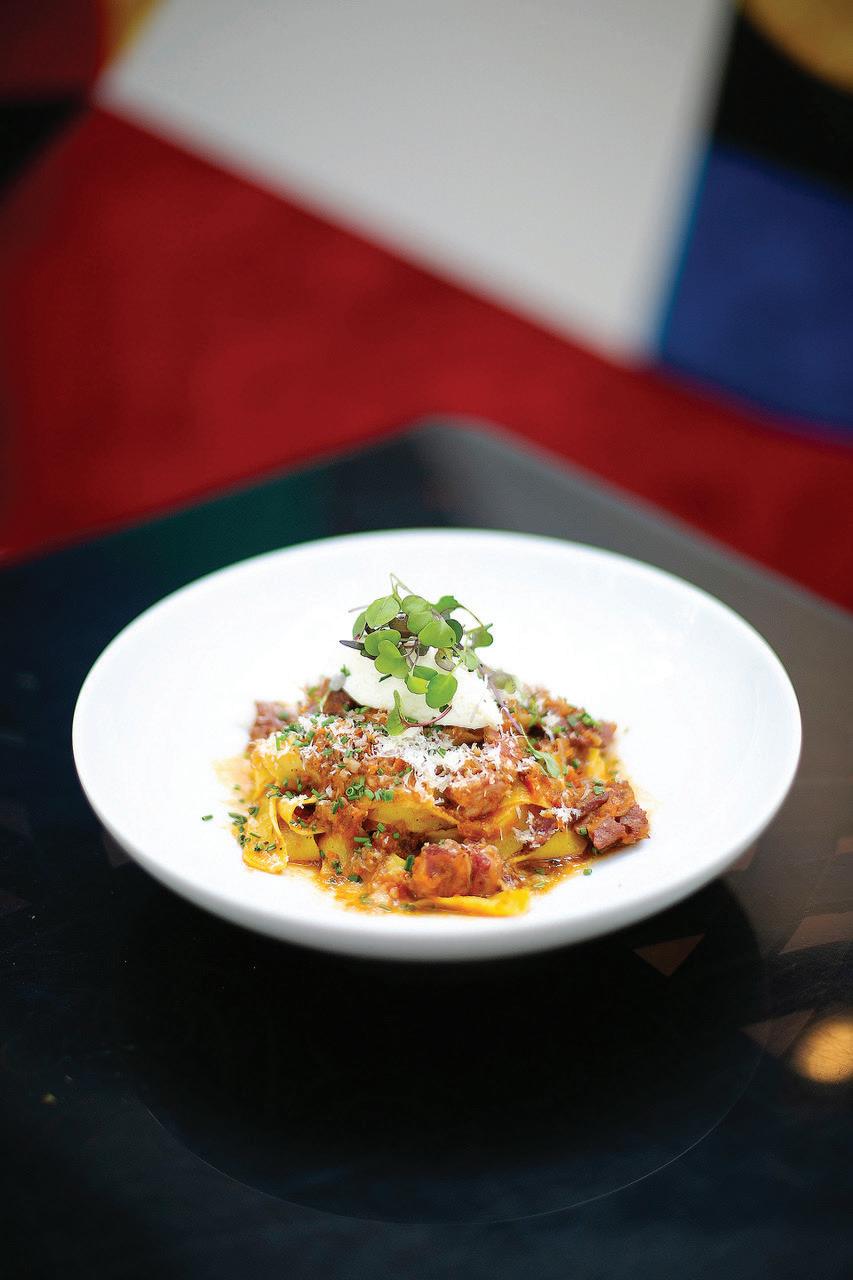

In terms of tree requirements, cold hardiness may be the most straightforward. Just about every landscape plant species and variety has an established USDA plant hardiness rating that is readily googleable, if not listed on the nursery tag. To find the USDA plant hardiness zone for your area, visit planthardiness.ars.usda.gov. If the tree you’re considering is cold hardy down to the same zone in your yard or lower, you can rest assured that the likeliness of a frosty death is extremely low. So a bigtooth maple (Acer grandidentatum), cold hardy down to zone 4, will be just fine after a rough January in the City Different. But blue palo verde (Parkinsonia florida) is documented to be cold hardy only down to zone 8 (10°F to 20°F), so this tree that’s common in Tucson and becoming more common in El Paso is not expected to withstand the cold temperatures experienced in an average Santa Fe winter.
Heat hardiness isn’t quite as clear, but has become extremely important. By 2050 (less than thirty years away!), high temperatures in the Albuquerque area are expected to resemble the current highs in Las Cruces or El Paso, and by the end of the century (less than eighty years away), they’ll be closer to the highs currently experienced in Tucson. For trees and other perennial plants to live and thrive as long as possible, we need to consider how cold hardy they are this decade and how heat hardy they will be in the warmer decades to come. Handily, two recent reports created by folks at The Nature Conservancy, New Mexico State Forestry, and a host of other local collaborators dig into recommended climate-ready trees for the Albuquerque area and the five climate zones of New Mexico (both reports can be found on the Tree New Mexico website, treenm.org/ partners-and-resources/some-recommended-trees-for-planting).
Now let’s touch on the question of size. “Right tree, right place” is not just a mantra of arborists worldwide—it is the mantra. Considering how big a tree will be at maturity is crucial. The bigger the tree,
the bigger the necessary canopy and rooting area. Without sufficient lateral root room, trees become stressed. With stress comes a compromised immune system and a higher susceptibility to all sorts of insect and disease pressures.
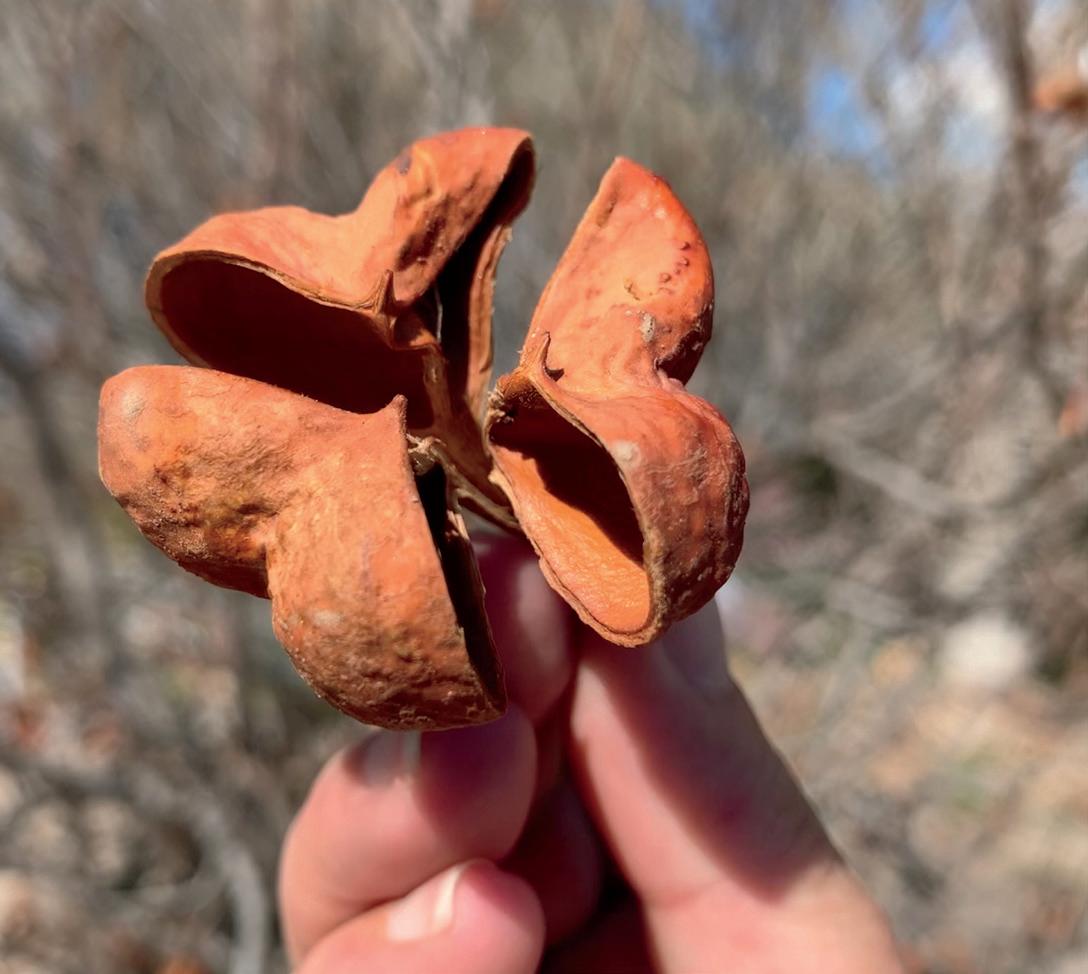

On top of size, space, and hardiness, when people ask me, “What’s the best tree for my yard?” the following questions jump to mind.
How do you plan to water the area surrounding this new tree? Unfortunately, in our warming world and lasting drought, even desert plants native to our region require supplemental irrigation as they become established, and thereafter. So a watering method and plan are a must. This doesn’t have to be a fancy irrigation system; irrigating the entire root area and beyond can be done with a garden hose or even a five-gallon bucket. If you have both, drill small holes in the bottom of the bucket so that water dribbles out slowly after being filled, then move the bucket a few times around the tree canopy dripline to be sure the roots are saturated in all directions. As a general rule, water to a depth of about two feet and allow the soil to dry out between soaks so roots have access to oxygen. A thick layer of plant-based mulch will help maintain soil moisture levels. A minimum mulch depth of four inches is also optimal for the control of many annual weeds in the soil seed bank.
How attached are you to only planting a tree? Even if your niche is small, a cluster of smaller or medium-sized plants offers diversity, both aesthetically and ecologically. Instead of a huge single tree, consider a small climate-ready tree, a compact shrub, three small ornamental grasses, and a few perennial flowers, all grouped together.

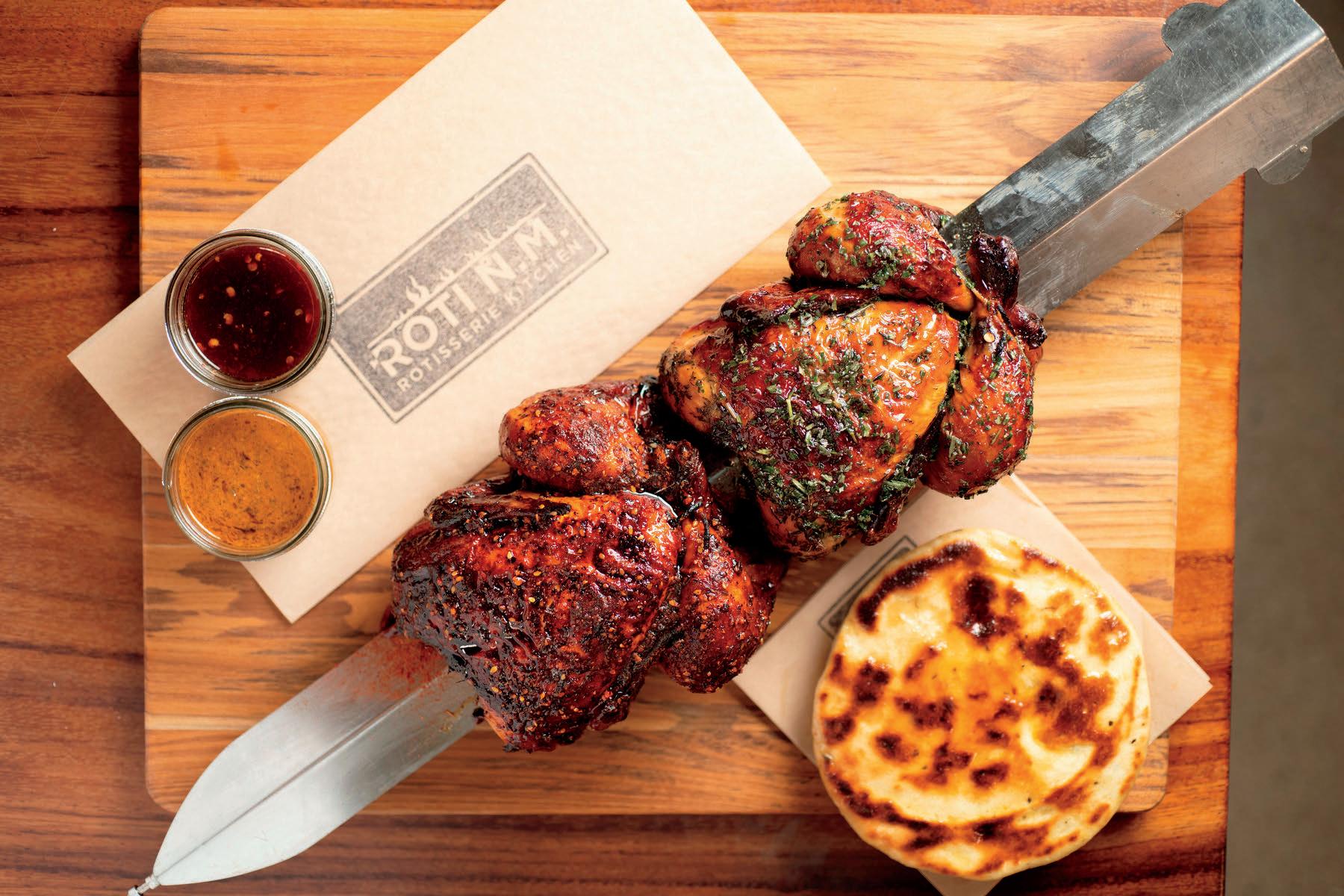





How often do you walk by? And who else might enjoy it?
Dramatic fall foliage displays make the Texas red oak (Quercus buckleyi) and Chinese pistache (Pistacia chinensis) great showpiece trees when placed in highly visible areas, seen from inside your home or out. If this is a spot you and your family pass frequently or will sit under, consider something that attracts hummingbirds, like a desert willow (Chilopsis linearis). Female New Mexico olive trees (Forestiera neomexicana) provide berries for backyard birds, and the bright yellow fall color is beautiful too. Speaking of color, in early spring, when most of the other trees are still dormant, the pinky-purple flowers of redbuds (Cercis species) are extraordinary. If you plant one that’s visible to neighbors, be sure to remember the variety, because they will want to know.
Which native plants could you incorporate into this area? Native species offer a wealth of ecosystem services for beneficial insects, birds, and other fun wildlife. Resources abound. The Native Plant Society of New Mexico website (npsnm.org) offers helpful lists with plant descriptions and tips for urban landscapes. The New Mexico State University Extension publication Perennial Plants for Pollinators (pubs.nmsu.edu/_h/H182.pdf) suggests flowering plants that attract native bees. And Valle de Oro’s ABQ Backyard Refuge Program offers ideas for native trees as well as other plants.
How long have you lived there? It wasn’t until after six months at my new house, when the windy season hit, that my front entryway became a gathering spot for leaf litter and random lightweight trash, mostly Doritos and Funyuns bags. My point is that it’s good to get to know your space and how you want to use it before making decisions you might regret. If I had planted roses by my front door, like I originally planned, I’d be quarreling with thorny stems each time I tried to clean up.
Do you need this tree to provide shade? And, if so, do you have enough room? Remember the arborists’ mantra? In a smaller space, you might be better off with a shade structure adorned with beautiful climbing vines. Of course, growing trees for shade is worth the time it takes to get there. But in a restricted area, there’s not enough rooting space to support a large shade tree. And remember what stress from root restrictions invites? Secondary problems like pests and diseases.
Deciding on the tree species is the big first step toward a long, lasting friendship. The next steps include choosing healthy specimens at a nursery, avoiding common planting mistakes and soil problems, and strategizing care. Find links to all of these topics by searching my blog for the word edible (nmsudesertblooms.blogspot.com).
You’re not alone on this landscaping journey. Reach out to local experts if you need help along the way.
I wonder what my new favorite tree will be. As author Lorene Edwards Forkner said, “Planting trees means you believe in tomorrow.”
Afganski pomegranate in Los Lunas.
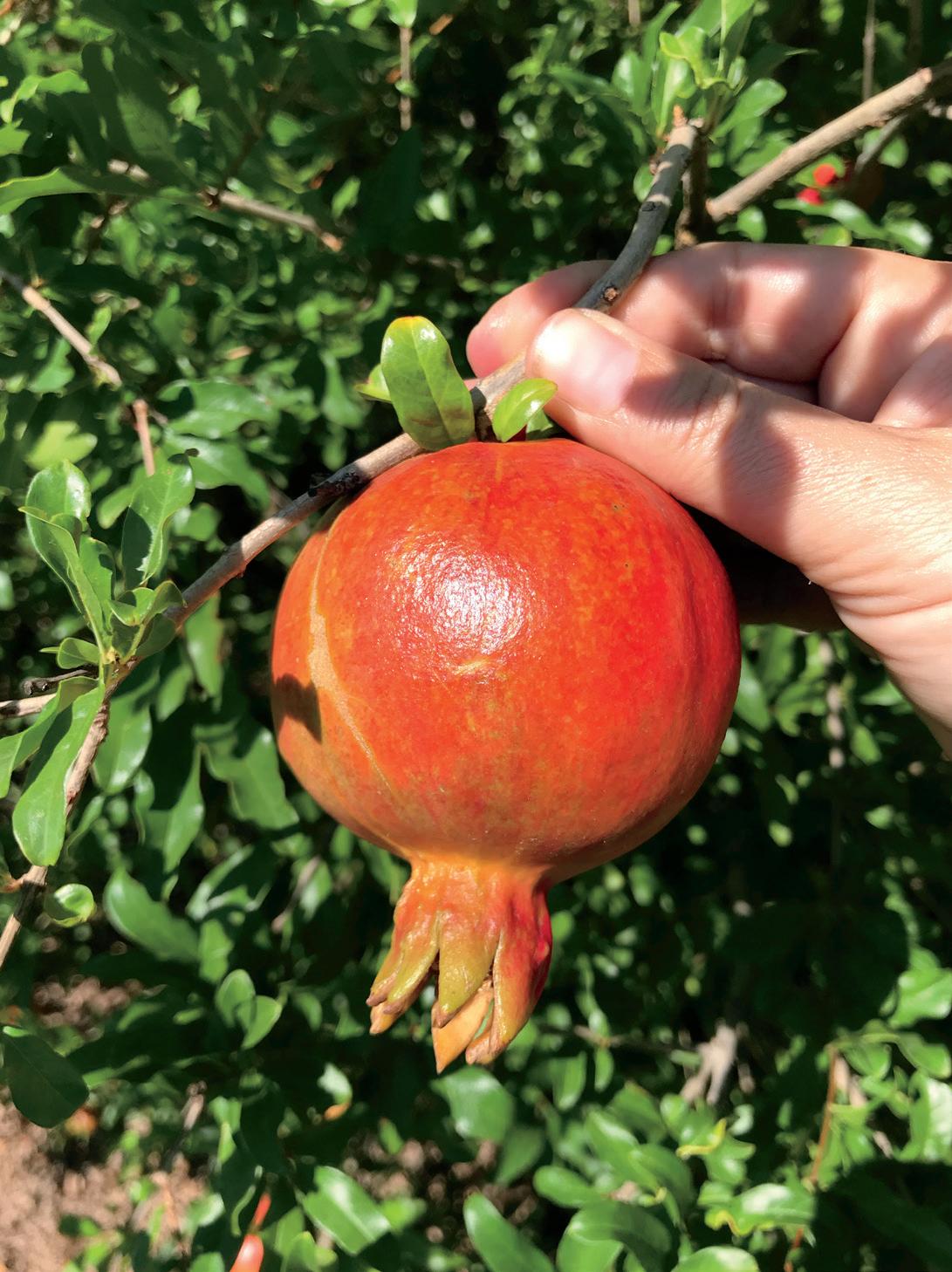
NMSU Extension Publication: Trees and Shrubs for Beneficial Insects in Central New Mexico, Guide H-177, pubs.nmsu.edu/_h/H177.pdf
505 Outside by Albuquerque Bernalillo County Water Utility Authority: 505outside.com
Valle de Oro’s ABQ Backyard Refuge Program: friendsofvalledeoro.org/abq-backyard-refuge
Santa Fe Native Plant Project: sfemg.org/santa-fe-native-plant-project
NMSU Extension Master Gardener County Chapters: mastergardeners.nmsu.edu/chapters.html
Check out your local botanical gardens, nurseries, and garden centers too!
Keep in mind that every plant list has some drawbacks or, at least, constraints. Long lists can be cumbersome, but short lists often limit species diversity, which is important for healthy ecosystems. And, sadly, few lists give priority to native species. Whittle down a shorter wish list of your own—one that includes native species cross-referenced on multiple local resource lists.
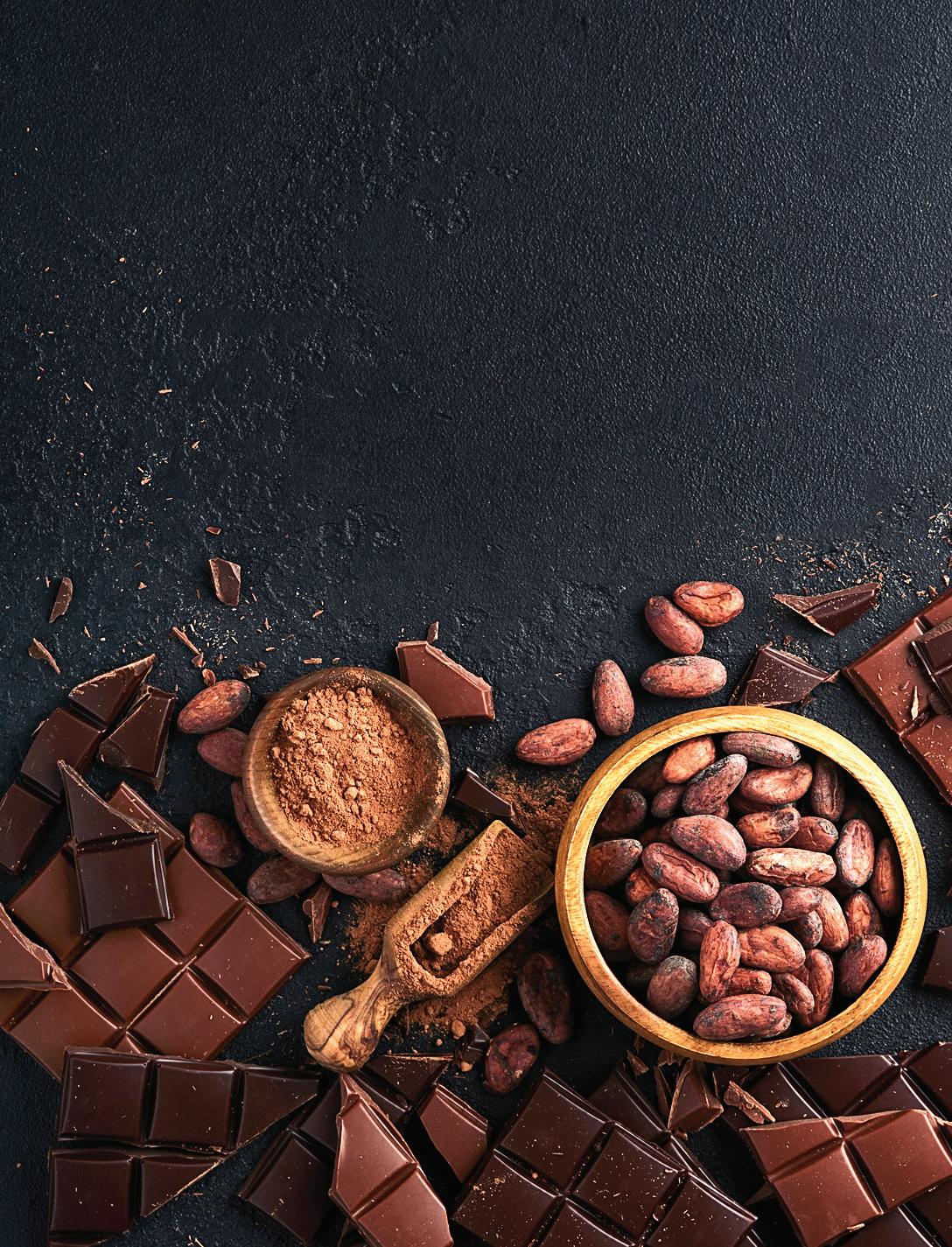

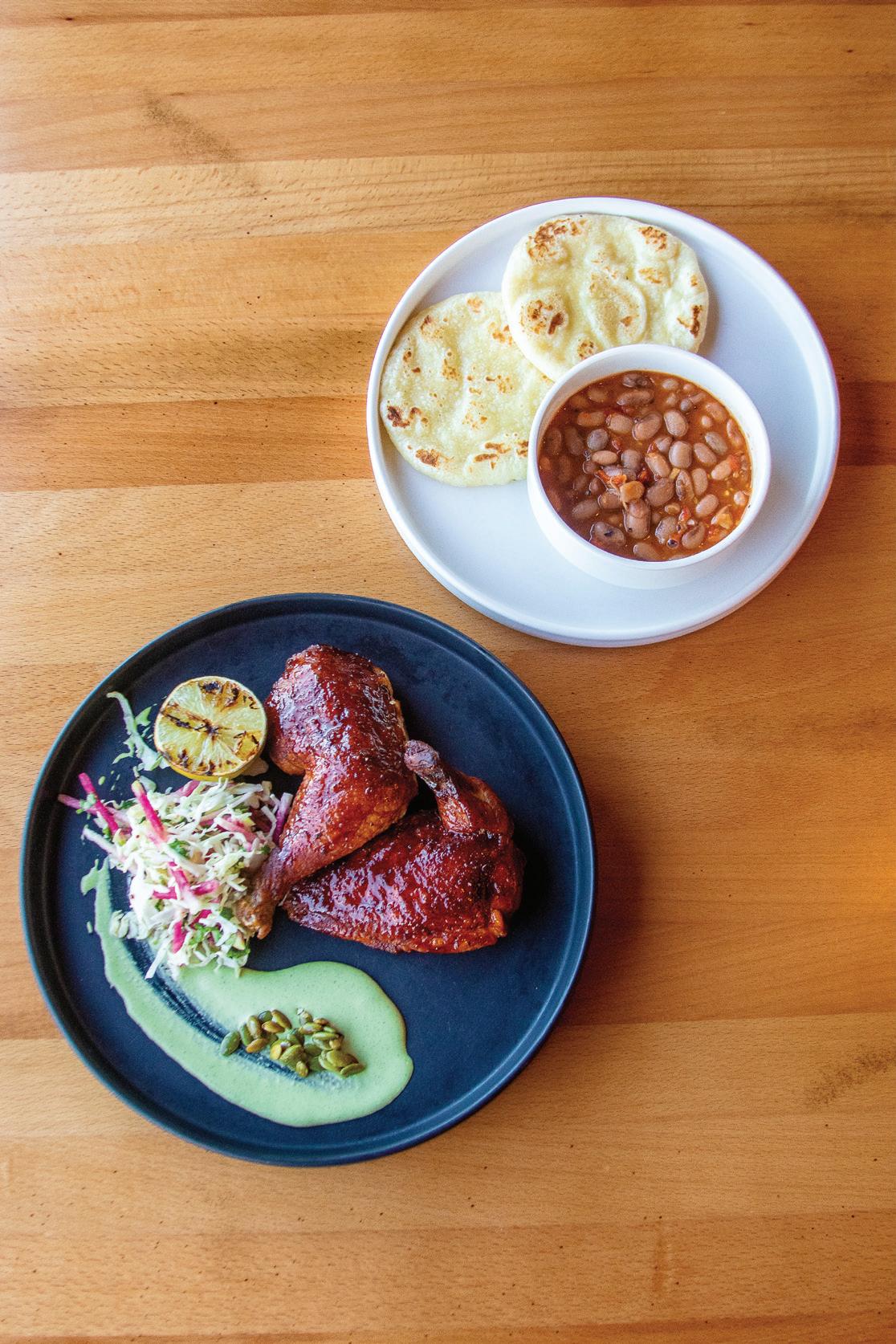


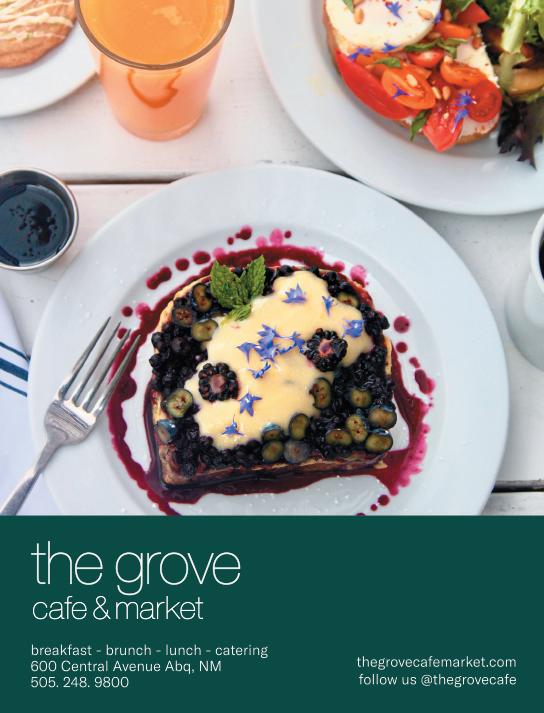

With my background in culinary arts and nutrition, I was instantly intrigued by the idea of a Navajo-owned family business in Shiprock, producing organic neeshjhizhii (steamed dried corn) from Navajo white corn—for babies! Bidii Baby Foods specializes in creating greater access to traditional foods in the early childhood years. This baby food company can be enjoyed by the whole family, with their finely ground corn being a staple breakfast food.
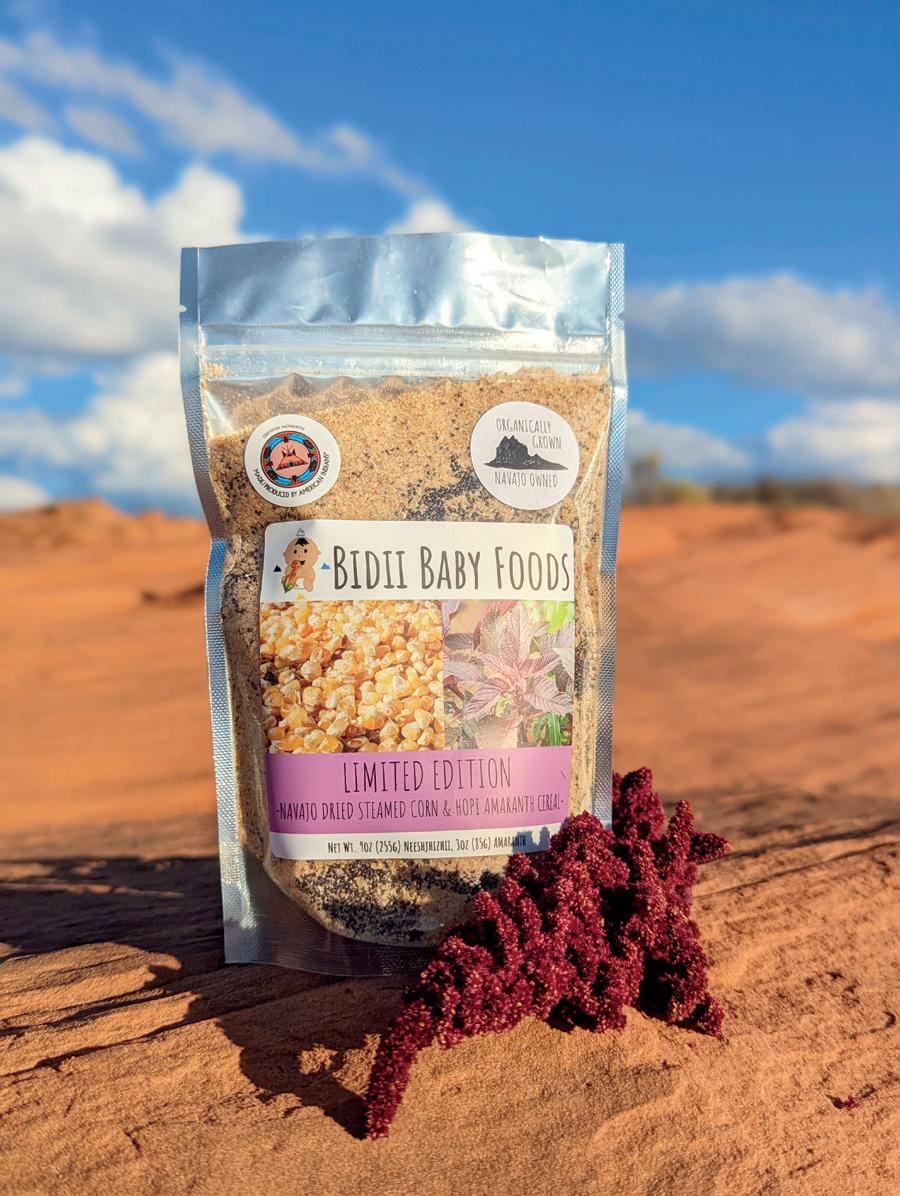
Zachariah Ben, a sixth-generation Diné farmer, and his wife, Mary Ben, a first-generation American from Hungary, founded Bidii Baby Foods in 2021. Their farming journey began on fields that hadn’t been farmed for more than twenty-five years, where Zachariah and Mary began implementing traditional Diné farming practices. Without the use of pesticides or insecticides, their crop is completely organic. Once harvested, the corn is placed in an underground oven,
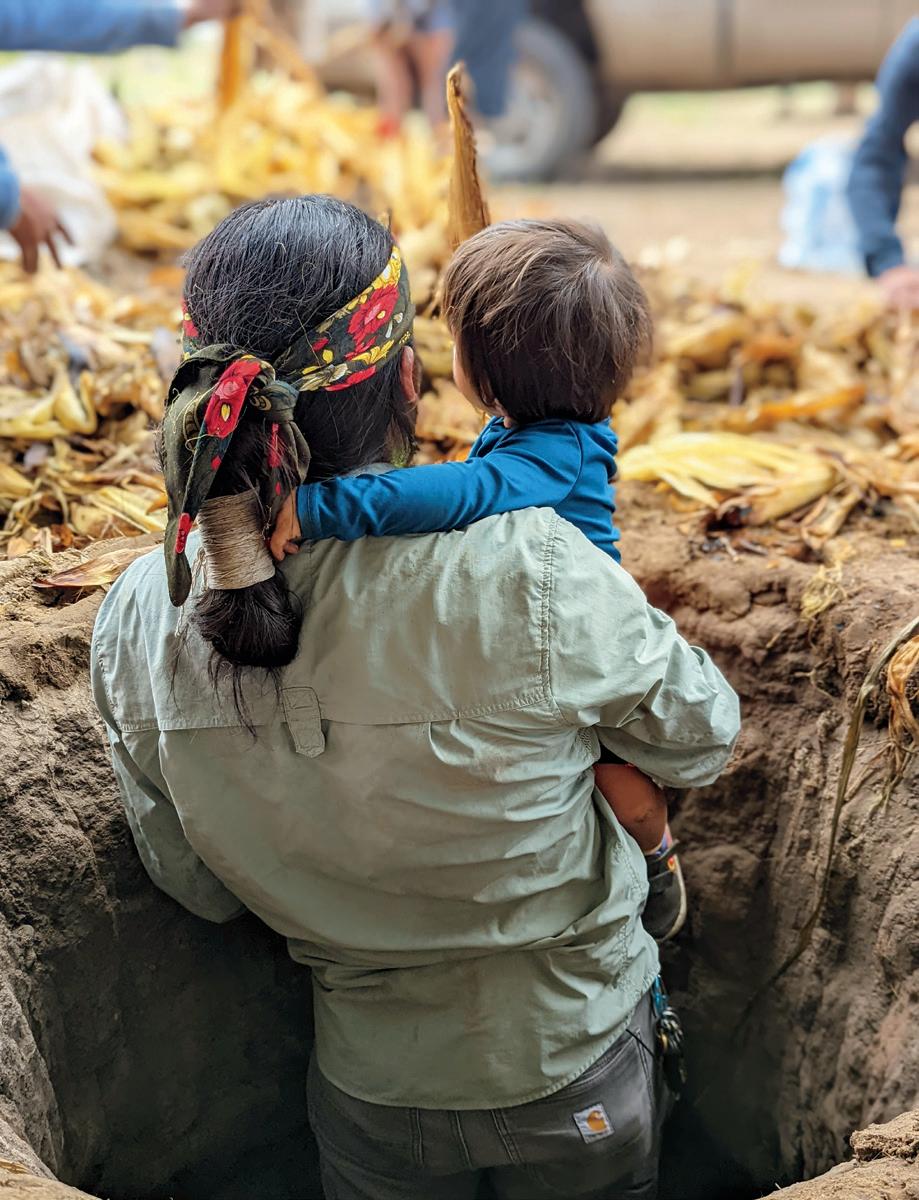
where it is pressure- and steam-cooked for twelve hours. Once it’s taken out, it’s dehydrated and shelled; some is kept whole and some is finely ground. When it’s ready to be eaten, the finely ground corn is rehydrated with water or milk, while the whole-kernel corn can be added into soups and stews, paired with mutton, bison, or beef— staple foods for the Navajo people.
After hearing Zachariah explain both their harvesting and preparation processes, I was even more excited to sample their cereal, which is prepared by boiling with water or milk at a 1:4 ratio, much as oatmeal is prepared. My tastebuds were jumping with joy when I had a spoonful of their Neeshjhizhii Doo Nayizi Bi’taa’Niił (Navajo dried steamed corn and squash cereal) last November. With its smoky and nutty aromatic notes, I caught myself fondly recalling childhood memories of being elated with a cob of corn in hand. Bidii Baby Foods is an



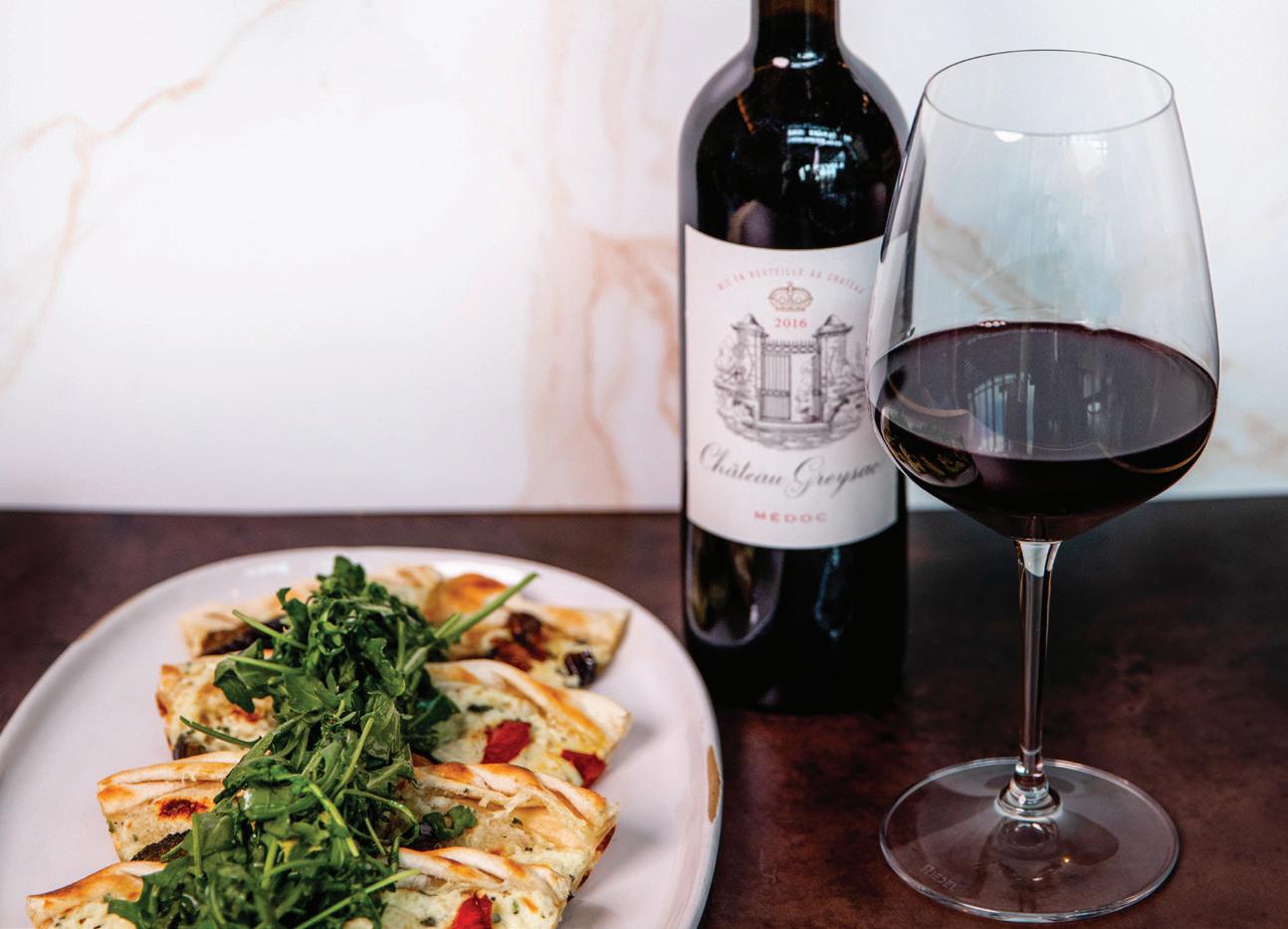

agriculture cooperative incorporated and registered with the Navajo Nation. “This was the example [of forming a cooperative] that we wanted to set,” said Zachariah.
It all started when Mary met Zachariah on another farm in Shiprock, where the two later had their son. Bidii Baby Foods was conceived with the goal to provide highly nutritious and accessible food not only for their son but on the Navajo Nation as well.
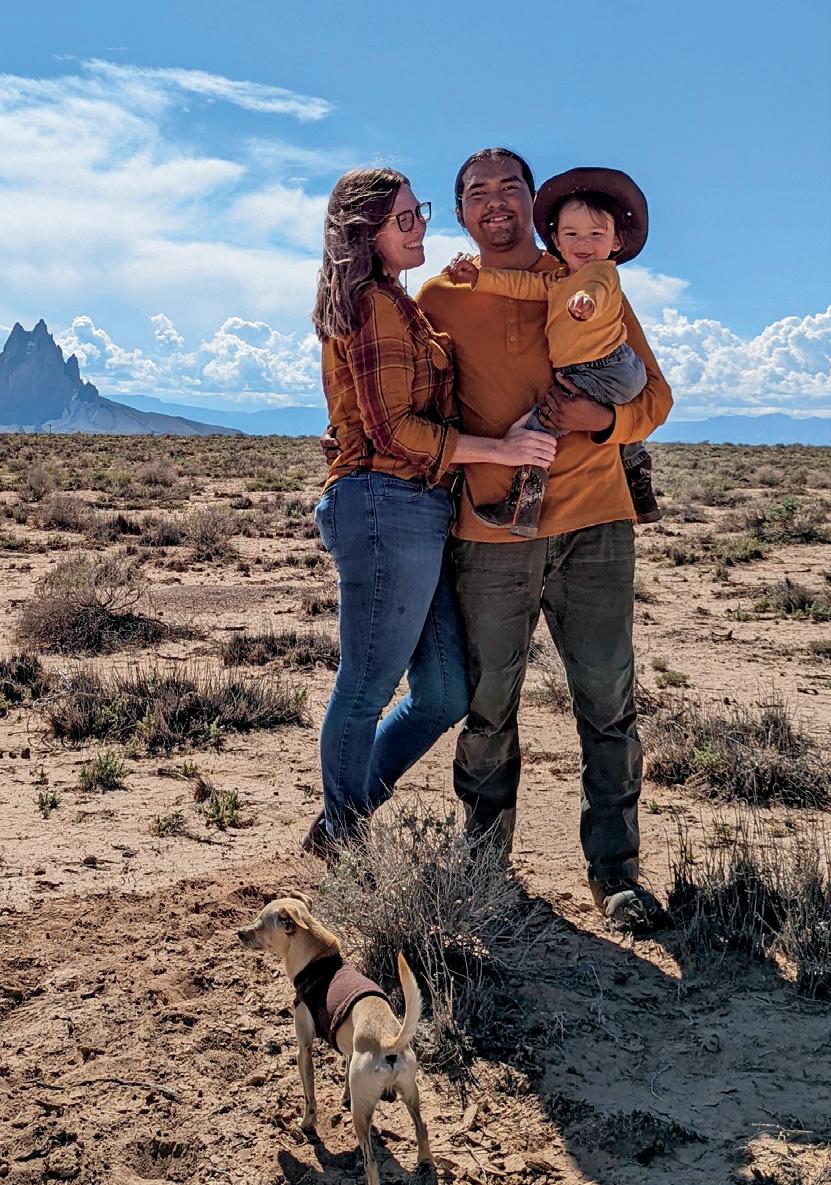
“It was our son’s first taste of that food that put away all worries,” Zachariah said. “It instilled in us the power of parenting to say that we’re on the right course and this is the course we want to take. These are the types of resources we want for the rest of our families. When we fed it to our son, he loved it! He was taking in all that time and effort that we put into the field. Going out there and irrigating and triumphing [on] hot days. All the discipline and love that is implemented into the seeds, to where and how you grow, just nurturing, caring, and loving that farm is what your child is tasting during harvest season. That’s the type of food we need, especially nowadays.”
Zachariah shared that their business approach isn’t for capitalistic gain but rather to share their personal story and how it has nourished their son’s mind, body, and spirit. “He doesn’t crave processed foods. He craves steamed corn. That’s the type of reaction we want from the rest of our community, [and we thought,] why don’t we make that available, and it just snowballed from there.” Bidii Baby Foods, which can be ordered online, has seasonal blends with other traditional ingredients mixed into their finely ground steamed corn cereals, such as amaranth and squash, all grown organically on Zachariah and Mary’s farming plots. They also have bison jerky sourced from the Brownotter Buffalo Ranch, a Native American–owned and –operated company in South Dakota—a tasty snack for the whole family to enjoy.
It’s “40 percent non-Native, 60 percent Indigenous,” Zachariah said enthusiastically when I asked what their customer demographics look like. “Everybody loves it. They love the growing practices and methods we implement into it.” I began thinking about my own community, the Anishinaabe Ojibwe peoples, and manoomin—one of our people’s first foods, also known as wild rice—and how it’s the first food you eat as an infant and the last food consumed just before you pass. I asked Zachariah if the Diné people have a similar type of ritual with eating food in this way. Smiling, he began sharing about the Diné Yébîchai ceremonies. “In [this] ceremony, we have twenty-four different foods, from wild spinach, carrots, onions, [and] parsley [to] corn of all colors. They’re cooked in different ways—from a tamale to a kneel-down bread, or pureed down. You take it in small portions, and you communally share that with the others who are participating. The medicine man sings to awaken the masks and [they] are fed those first foods to begin the ceremony,” said Zachariah. “This is what we’ve started to do with our son. Showing him those first foods by going out to forage and to see what type of seasons and elevations they grow in. He’s so small but he understands, and he’ll let you know he understands because he partakes in those activities. And that’s the type of relationship that we have and what we want to share. It starts with the farm because that’s the foundation for life.”
The Bidii Baby Foods farm has been a place of healing, education, and knowledge sharing, not only within Zachariah’s family but with and for the community at large. I’m looking forward to visiting the farm to help them plant in spring, and I encourage both our Indigenous and nonIndigenous community members to volunteer at the farm during their planting, growing, and harvesting seasons, supporting their incredible efforts in making traditional foods more accessible.
@bidiibabyfoods, bidiibabyfoods.org


Today local salt is not sold commercially or even at local farmers markets, but my annual trips to gather native salt have become an important cultural practice. It’s one of the many wild food harvesting traditions without which New Mexican cuisine would taste less vibrant. Some of the most common local wild food favorites that come to mind are quelites (wild spinach) and asparago (wild asparagus), which grow along acequias throughout New Mexico and have
long been harvested by the Pueblo, Genízaro, and Hispano communities. I have been fortunate to live in the village of Carnuel, located in the Cañon de Carnue Land Grant, also known as Tijeras Canyon, where my family has been for centuries. Growing up, I was fortunate to be exposed to the food gathering practices of my Genízaro community—practices that were influenced by our Apache ancestors who have occupied these lands for generations, and also by geography.





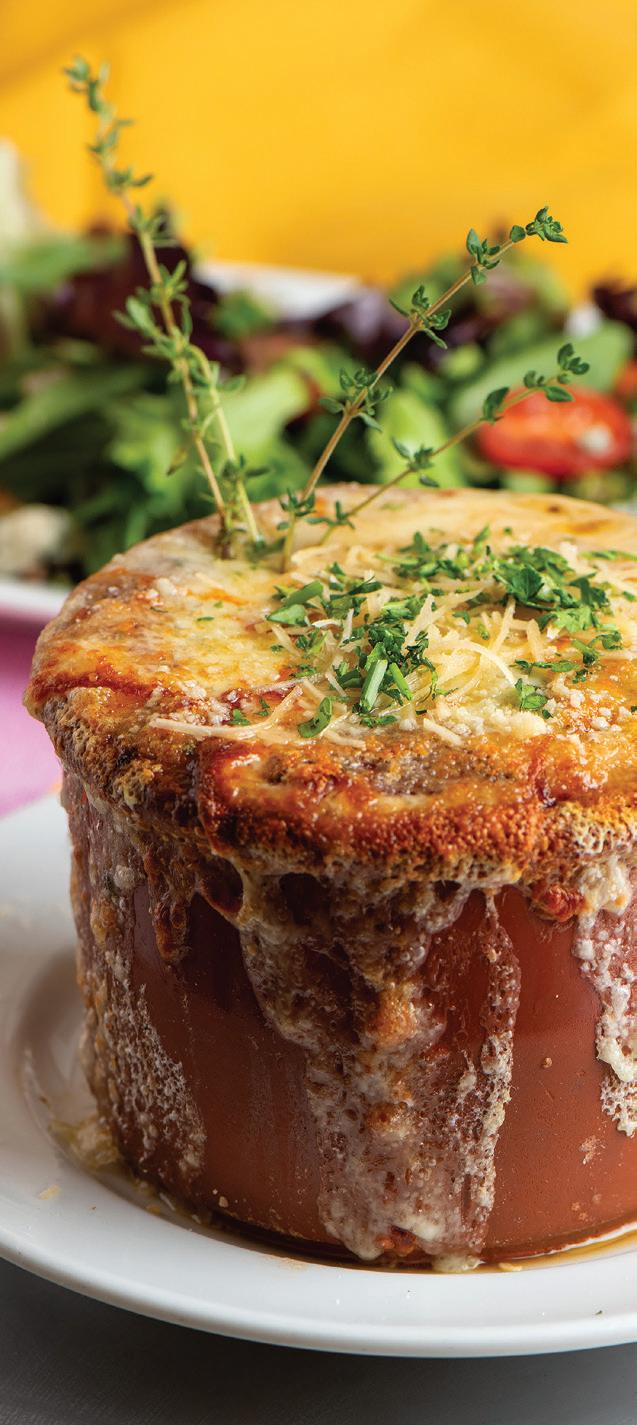

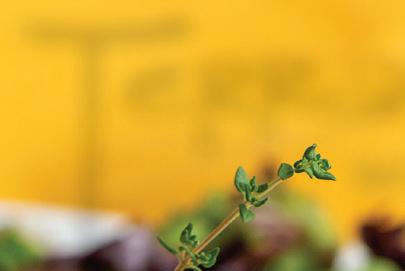
Beginning in the eighteenth century, Genízaro settlements were established by the Spanish to provide defensible communities on the frontier of New Spain. The strategic planning of these new towns located them on the high-mountain borderlands between the Pueblo and Hispano settlements along the Middle Rio Grande Valley and the Ute, Diné, Apache, and Comanche territories. They were vital to the ability of the Spanish to sustain a presence in what is now New Mexico. The term Genízaro designated North American Indians of mixed tribal derivation living in servitude, who could earn their freedom (and acquire land) by participating in the formation of communities such as Abiquiu, Carnue(l), Ranchos de Taos, Truchas, Trampas, Las Huertas (Placitas), and San Miguel del Vado on the Pecos. In my village of Carnuel, it is certain that N’de Apache food gathering practices influenced east Sandia wild food harvesting practices because access to irrigation was very limited.
As a child, I heard stories from my grandfather about the annual trips for salt gathering that took place near the historic Salinas Pueblo Missions east of Quarai and Abo. Salt has been a fundamental food source since the beginning of human settlement, and for centuries Pueblo communities have harvested salt at Zuni Salt Lake, along the Canadian River basin of northeastern New Mexico, and at the Salinas Basin. I was taught that among the Genízaro communities, sometimes known as comancheros, salt gathered from the Salinas was not only used for flavor and food preparation but also for trade and preservation of game. Historically, men from the Sandia Mountain villages would leave on the buffalo hunts in late September and not return until around Christmastime. While on the plains, they used salt to preserve meat as well as to cure buffalo hides for clothing. The Genízaro communities also traded large quantities of salt with the Comanche. Salt was so valuable that the Comanche traded it for cap-
tive children and women, who were then sold and traded in the slave markets of New Mexico. Today local salt has lost its market value, but its nuanced flavor can’t be matched even by the higher-quality commercial culinary salts.
Tijeras Canyon, known as Cañon de Carnue before the arrival of the Americans, has been home to a Tiwa Pueblo, Faraon Apaches, and later the Genízaro land grant community, all of whom have utilized edible plant gathering practices. Carnue derives from the Tiwa word carna, which means “badger place,” and the cañon is host to a wide range of wild edible plants. Of all the communities who have lived here, the N’de Apache were probably the most dependent on edible plant gathering, which helped them to evade capture by the US government. They gathered the well-known piñon, along with nopal, tuna de nopal, verdolagas, cholla cactus buds and blossoms, capulin (wild chokecherry), and cota. The flavors contained in these edible plants can accent and complement common local recipes.

So how do these gathered foods come together in recipes?
Today it’s rare to see a nopal tortilla or a blue corn–nopal tortilla served in a local restaurant; however, this was commonplace in Genízaro or Apache communities. Still common in parts of Mexico today, nopales, roasted, dried, and ground into a masa, can be an excellent alternative to the traditional corn tortilla. Mixed with blue cornmeal, this provides a whole new range of possibilities. During the monsoon season, the Sandia foothills offer endless opportunities to harvest one of the best-tasting microgreens known to the human palate: verdolagas, or wild purslane. Rich in minerals and Omega-3 fatty acids, verdolagas adds a richness to salads in addition to traditional dishes. Dried and preserved in canning jars, it can be added as an herb to beans and posole, bringing a nuanced flavor that I can’t imagine beans being without.
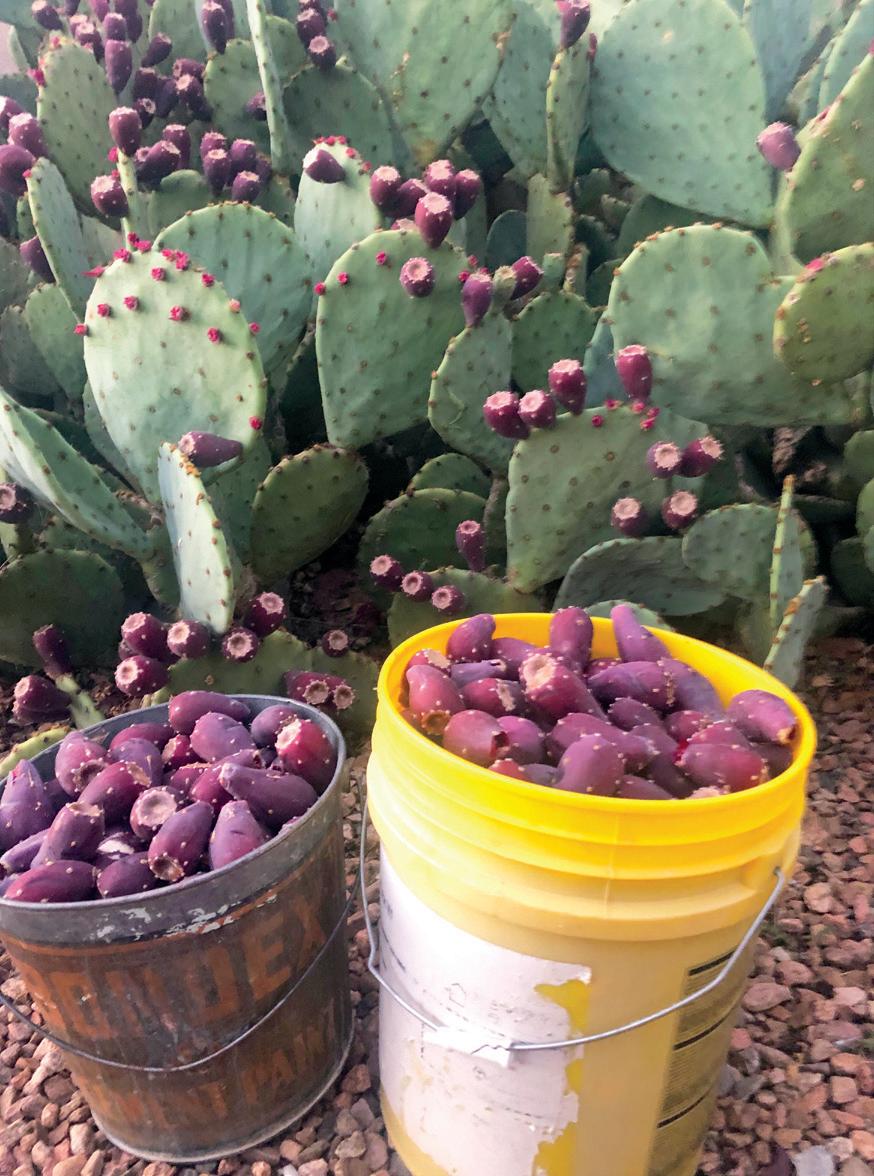



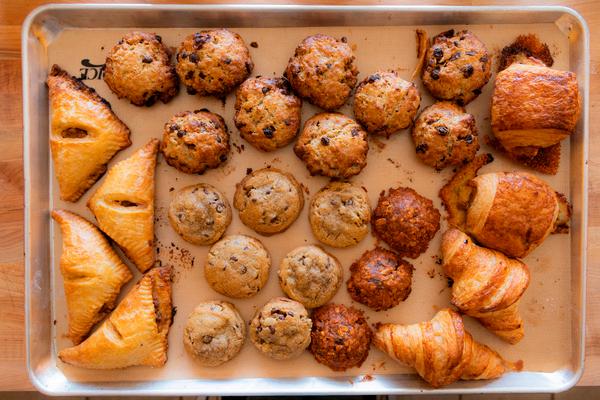


Prickly pear is another local food that is slowly making its way back into New Mexican cooking. Harvested wild in early fall, prickly pear, made into juices, jams, wine, and syrup, provides a wide range of new possibilities and compositions. My go-to after a newly gathered harvest of prickly pear is to top off my blue corn atole with roasted piñon nuts and prickly pear syrup. Cholla buds and blossoms, which can be gathered in late spring, are another local favorite. Steamed or baked, the buds taste like asparagus and artichoke hearts. It’s remarkable that this plant has been forgotten as an edible delicacy in the Southwest. Fresh cholla blossoms are a delicate and delicious addition to green salads as well as sautéed vegetable dishes. Cota, also called Indian tea, grows in front of my home in Carnuel and is one of my favorite summer teas. This drink is still seen at many homes during feast day meals at local Pueblos.
Edible food gathering practices in New Mexico have begun to gain more visibility with the growing movement to decolonize food. The importance of understanding traditional edible food gathering practices is to recognize the contribution of Indigenous peoples to local food traditions—and to recognize the nuanced flavors and the wonderful knowledge embedded in these gathered foods.
I make my annual pilgrimage to gather local salt in the spring. The salt I gather is used for my own cooking and traded among some of my Pueblo friends for traditional varieties of beans, squash, and cornmeal. For me, the way local salt enhances New Mexico cuisine is unsurpassed.

And I can’t imagine a holiday meal without a gifted bottle of homemade capulin wine—made from chokecherries harvested right in my mountain community.
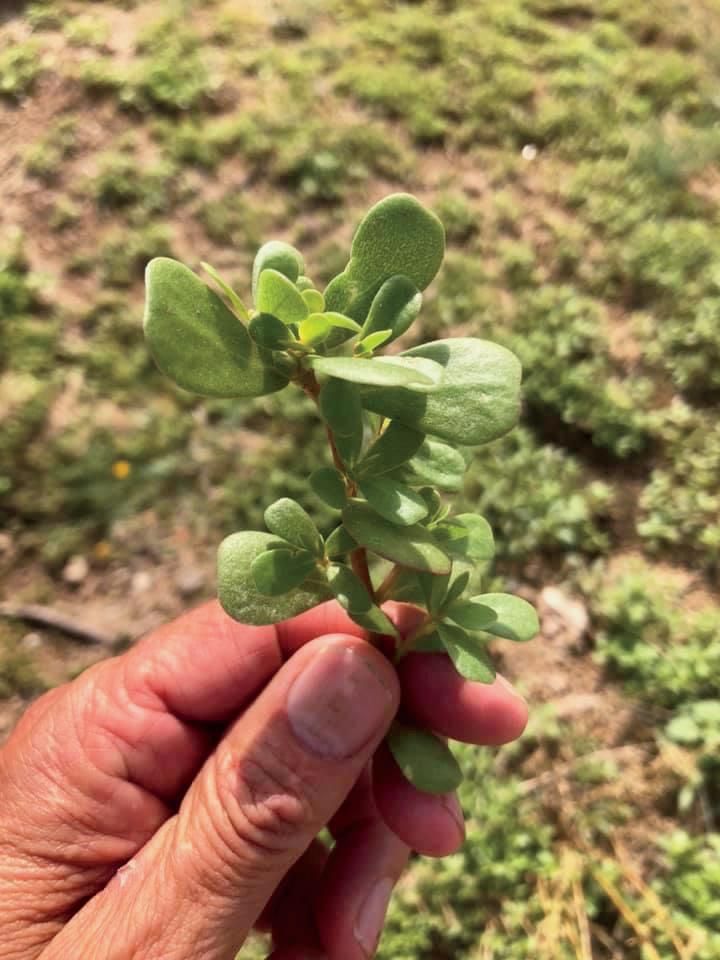


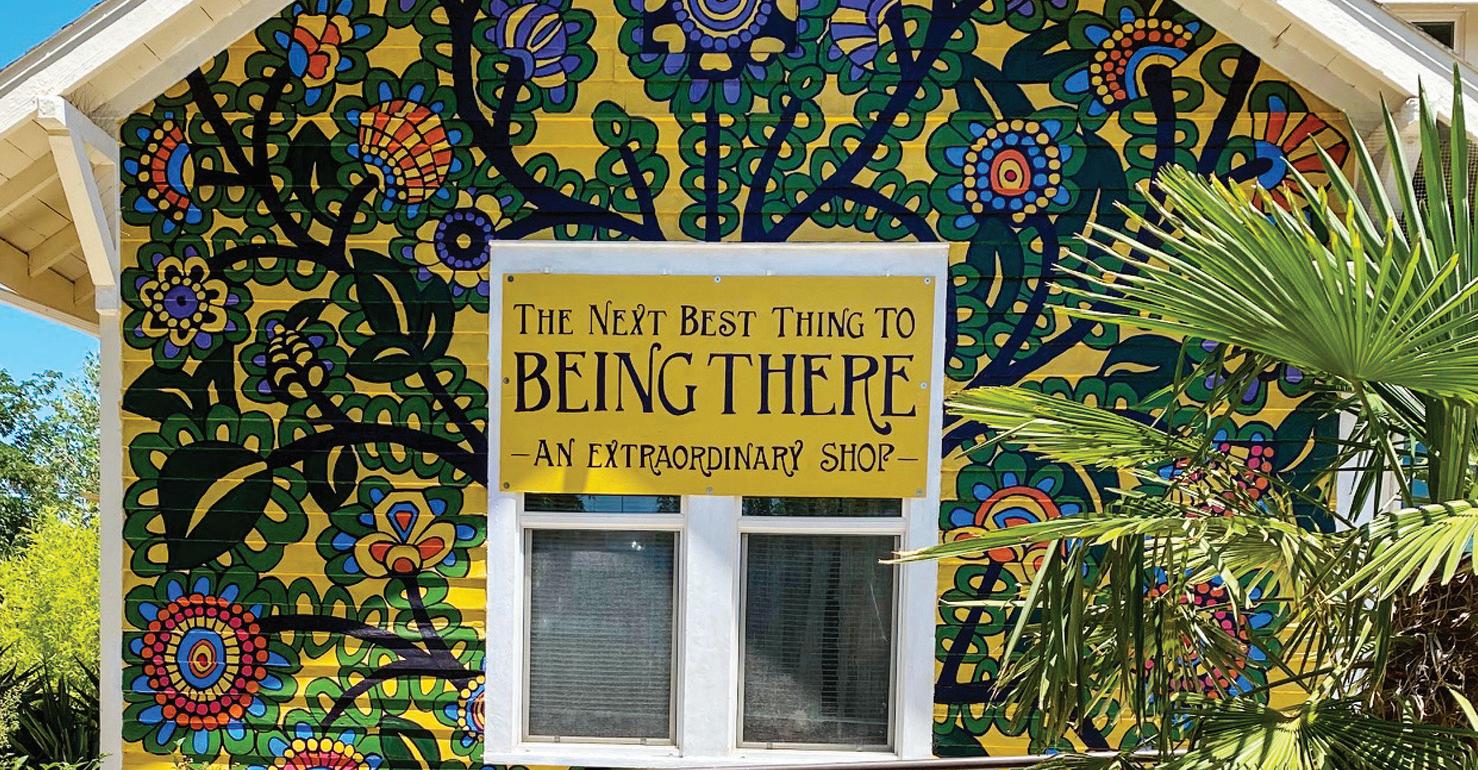


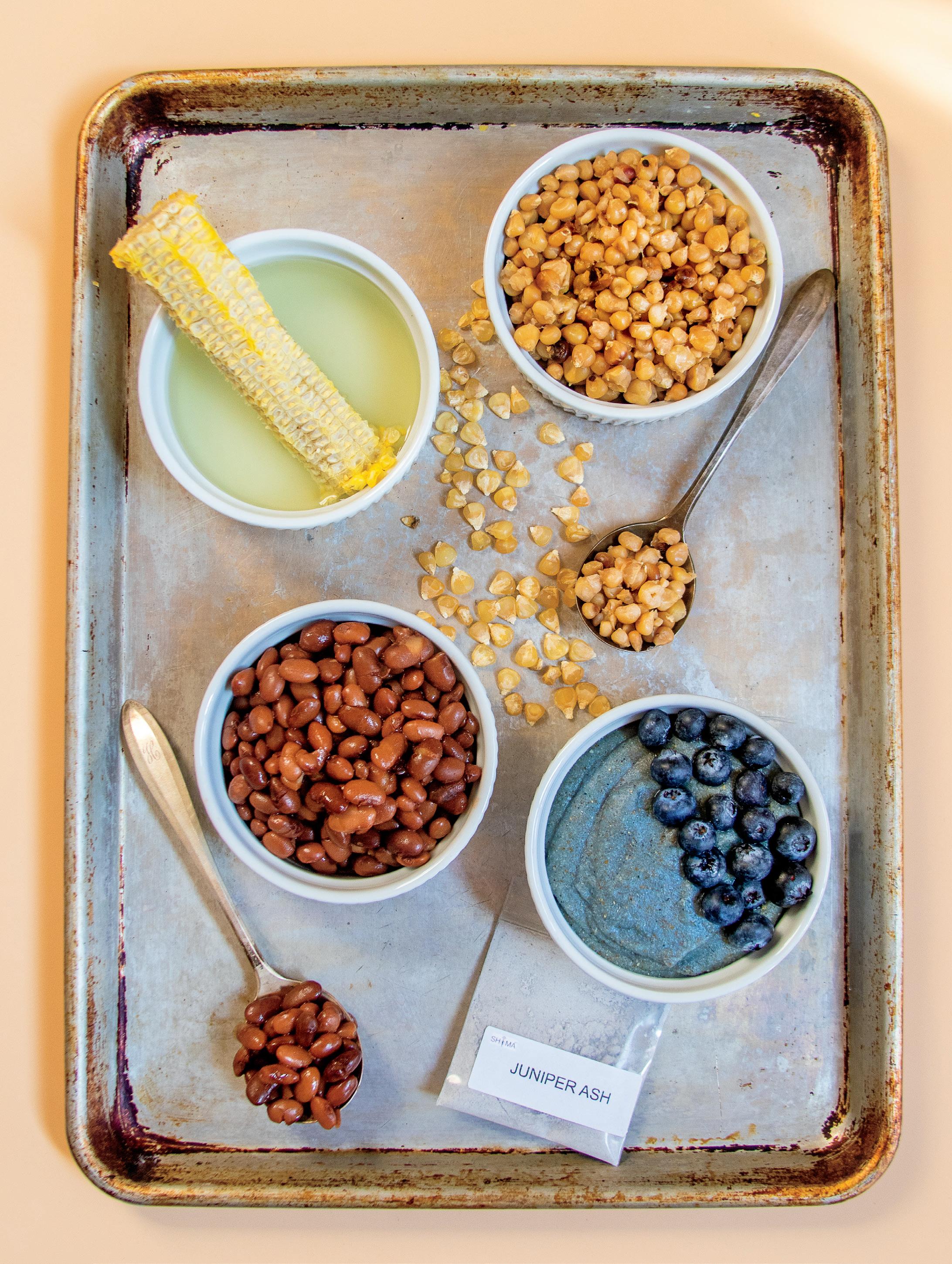
By tapping into Indigenous food groups and local, traditional farming practices and diversifying our diets, we’re not just enabling a healthier lifestyle that is sustainable, but we’re also reclaiming a food system that is holistic, ethical, and that is restorative to the planet.
—Louise Mabulo, Founder of The Cacao Project and UN Young ChampionTaking inspiration from YouTuber Christina Ng, a.k.a. East Meets Kitchen, I wanted this edition of Cooking Fresh to reflect an awareness of the Native ingredients I have chosen to highlight—the Three Sisters—corn, squash, and beans. In her video series Native American Recipes, Ng honors the recipes she shares by learning the history of the ingredients to better understand the food she is making. I took the same approach, combing the internet and diving into some beautiful cookbooks by Sean Sherman, Lois Ellen Frank, Roxanne Swentzell, and Freddie Bitsoie to foster an appreciation and knowledge of traditional Native foods. They are among the many Native American chefs working to reclaim their cuisines—and sometimes to reinvent them. While many Native American dishes have been absorbed into what we see today as American cuisine, environmental scientist Mariah Gladstone of Indigikitchen reminds us that Native foods aren’t only a part of the past but an essential and exciting aspect of the future.
There are many variations of the following recipes, each with adjustments to ingredients available in a given tribal region, often passed down for generations by Native ancestors. I don’t take credit for any of these recipes; I found versions that appealed to my palate, and tested, tasted, and adapted them for ingredients I could find in New Mexico during the winter. Each dish has seasonal possibilities. From summer squash to winter squash and fresh corn off the cob to dried hominy and chicos, there are many ways to make these dishes throughout the year, but all are rooted in the Three Sisters. While these ingredients and these dishes have limitless possibilities, and rising Native chefs fuse culinary traditions as often as all chefs, I wanted to select recipes that profile these staples that have so deeply shaped what we see today as New Mexican cuisine. I also committed, as much as possible, to making these recipes without colonial ingredients: wheat flour, dairy, cane sugar, or products from domesticated animals.
These basic formulas are simple recipes for completing the more complex recipes that follow. All of them can stand on their own or be added as side dishes to a meal. Making a pot of beans on Sunday that can be used in a variety of ways is a great jump on meal prep for the week.
Cook 2 cups (1 pound) of beans (pinto, Anasazi, or bolita) in 6 cups of water on the high setting of a slow cooker for 6–8 hours. Salt, to taste. Alternatively, beans can be simmered on the stove top for 6–8 hours if soaked overnight
beforehand. If cooking tepary beans, reduce cooking time to 1 1/2–2 hours.
Note: You can substitute canned beans instead of homecooked beans in most recipes, but home-cooked beans will always have better texture and flavor. Dried beans should always be cooked within a year, for freshness.
THE MATH:
• 1 (15-ounce) can of beans = 1 1/2 cups of cooked beans
• 1 cup dry beans = 3 cups of cooked beans, drained
• 1 pound of dry beans = 6 cups of cooked beans, drained


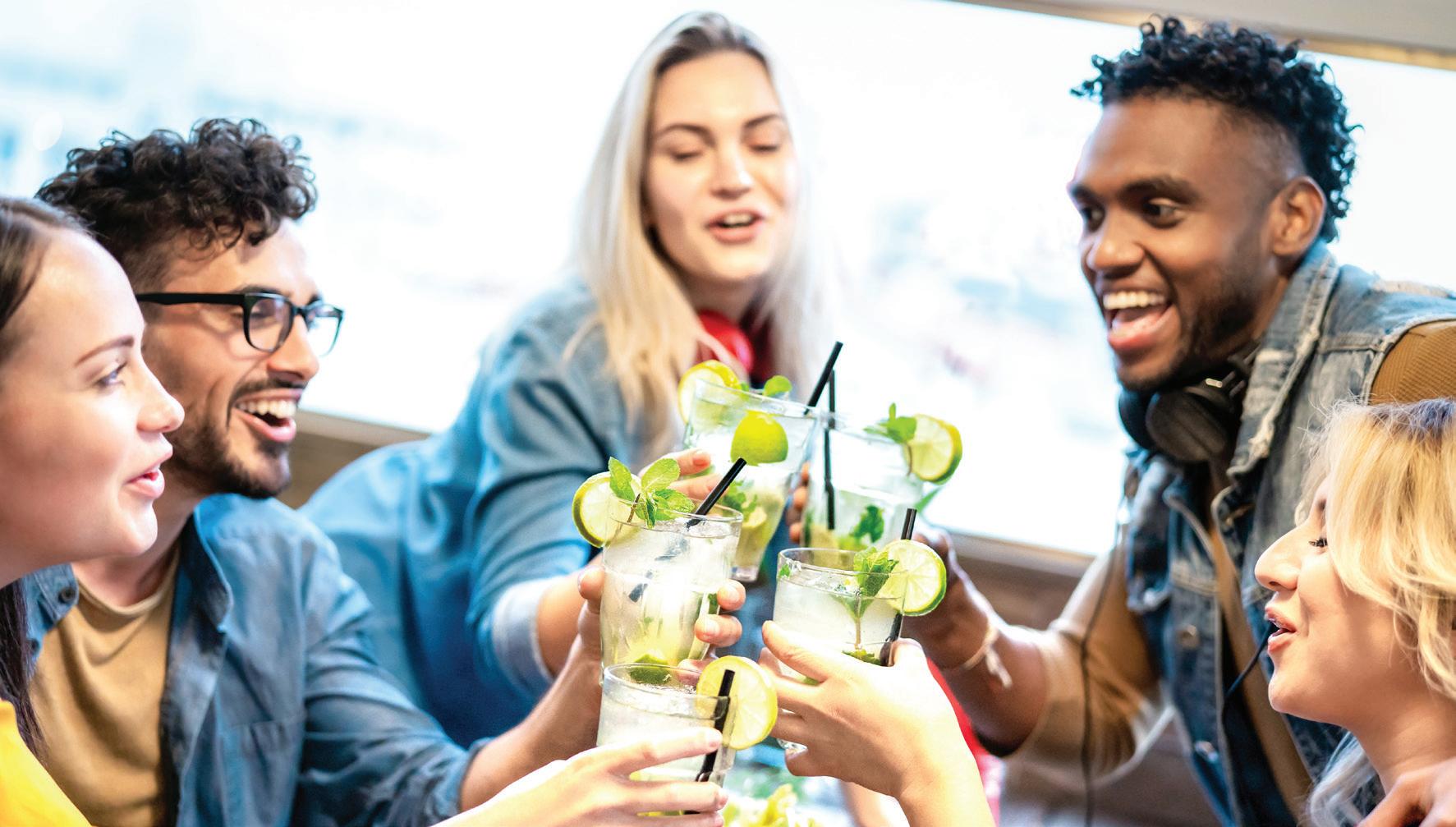
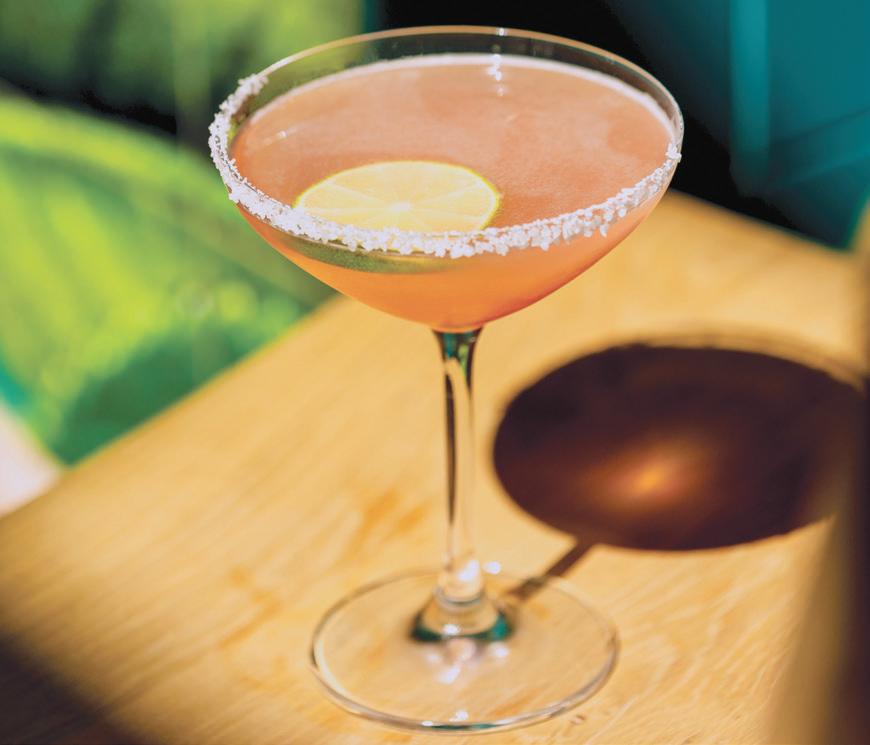
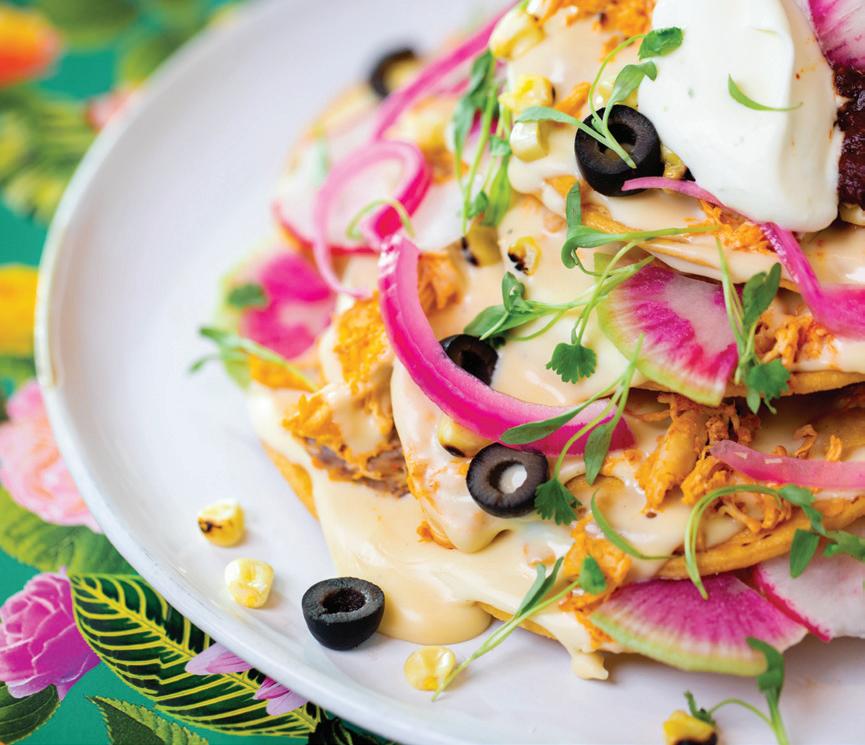
Makes 3 cups
Cook 1 cup of chicos in 6 cups of water for 6–8 hours in a slow cooker. Salt, to taste.
Makes 2 cups
Mix 1/2 cup roasted blue corn flour or blue cornmeal and 1 teaspoon juniper ash together with a whisk until evenly distributed. Set aside. Place 2 cups of cold water in a pot and add the flour mixture before placing the pot on the stovetop, whisking together until smooth. Cook over medium heat until sputtering begins, and then turn to low heat; keep stirring continuously for about 10–15 minutes as the mush thickens up. Serve with fresh or dried berries, seeds, nuts, and/or maple syrup.
Makes 4–6 cups
Don’t toss your corncobs! Put them in a freezer bag until you are ready to make corn stock. Place 6 corncobs in a large pot and cover with water by 1 inch. Bring to a boil and then turn the heat down to simmer. Partially cover and let the stock reduce until it tastes like corn, about 1 hour. Discard the cobs and store the corn stock in an airtight container in the refrigerator or freezer.
Coat the bottom of a skillet with sunflower oil, heat until shimmering, then add sage or oregano leaves in a single layer. Watch them closely—it only takes about 30 seconds or so for them to crisp up—then remove them with a slotted spoon. Put them on a plate lined with paper towels, then transfer to a serving plate. Sprinkle immediately with salt, to taste.
Many recipes use bacon or ham hocks to flavor their beans, but sticking with the basic bean recipe, we impart smokiness with the chicos and some fat with the bison tallow, and then we add the spice of chile—a match made in heaven.
2 tablespoons bison tallow (or sunflower oil)
1 small sweet onion, diced
1 tablespoon red chile powder
3–4 cups cooked beans (see recipe, page 41)
2 cups cooked chicos (see recipe above)
1 1/4 cup vegetable broth (this can be liquid from cooking the beans, or broth)
Salt and pepper, to taste
Add bison tallow to dutch oven over medium heat. Add onion and cook until caramelized, about 10 minutes. Stir in the chile powder to the onions and continue to cook for 2 minutes.
Add broth slowly to deglaze the bottom of the pot. Place cooked beans and cooked chicos into the pot and simmer for 15 minutes—season with salt and pepper, to taste.
Roasted squash seeds are great for eating by the handful and are perfect toppings for salads, soups, or roasted squash.
1 cup squash seeds (any winter squash variety)
1/2 teaspoon salt
1 tablespoon melted bison tallow (or sunflower oil)
Separate seeds from the stringy flesh, rinse them thoroughly in a colander, and pick away any excess flesh clinging to the seeds. Spread the seeds in an even layer on paper towels and allow them to dry completely—30 minutes to several hours. Dry seeds roast better.*
Preheat oven to 275°F. In a bowl, toss seeds with bison tallow and salt. Place seeds on a parchment-lined baking sheet. Bake until the seeds turn golden, about 15–20 minutes. Wait at least 5 minutes for the seeds to cool; they get crispier the longer they cool. Store in an airtight container at room temperature.
*Note: After seeds dry, they can be stored in an airtight container until enough are collected for cooking.


First developed in Mesoamerica over three thousand years ago, nixtamalization is a way of processing dried corn. Soaking and steeping maize in an alkaline agent (calcium hydroxide, commonly known as lime) is called nixtamalization—a process that strips off the corn kernel’s outer layer, making it easier to grind, increasing its nutritional quality, and improving its aroma and flavor.
I adapted Sean Sherman’s Missouri Pozole and used De Colores Farms & Foods hominy nixtamal kit for this recipe. Allow 8 hours to prepare the hominy using the kit. You can substitute the nixtamal kit for 2 cups of dried hominy soaked overnight. If using the hominy nixtamal kit, I recommend longer cooking time (90 minutes) in the first step of the instructions. While preparing the squash, save the seeds and make roasted squash seeds for a garnish; see recipe on page 42.
1 pound hominy nixtamal kit, prepared following instructions
1 small butternut squash, peeled and cut into 1/2-inch cubes (about 4 cups)
1 tablespoon fresh sage, chopped
1 teaspoon red chile powder
6 cups corn stock (see recipe, page 42) or water
1/4 cup masa flour mixed with 1/2 cup water
1 tablespoon maple syrup or more, to taste
1 batch roasted squash seeds (see recipe, page 42)
1 batch fried sage (see recipe, page 42)
Salt, to taste
Over medium heat, combine corn stock and hominy in a large stockpot. Bring to a boil, reduce heat, and simmer for about 30 minutes, until hominy is al dente. (Note that cooking time may vary depending on the source and age of your hominy.) Add remaining ingredients—squash, red chile, and sage— and cook at a simmer until squash is tender, about 25 minutes. Slowly stir in the masa flour/water mixture and continue simmering until thickened. Season, to taste, with maple syrup and salt. Garnish with roasted squash seeds and fried sage.




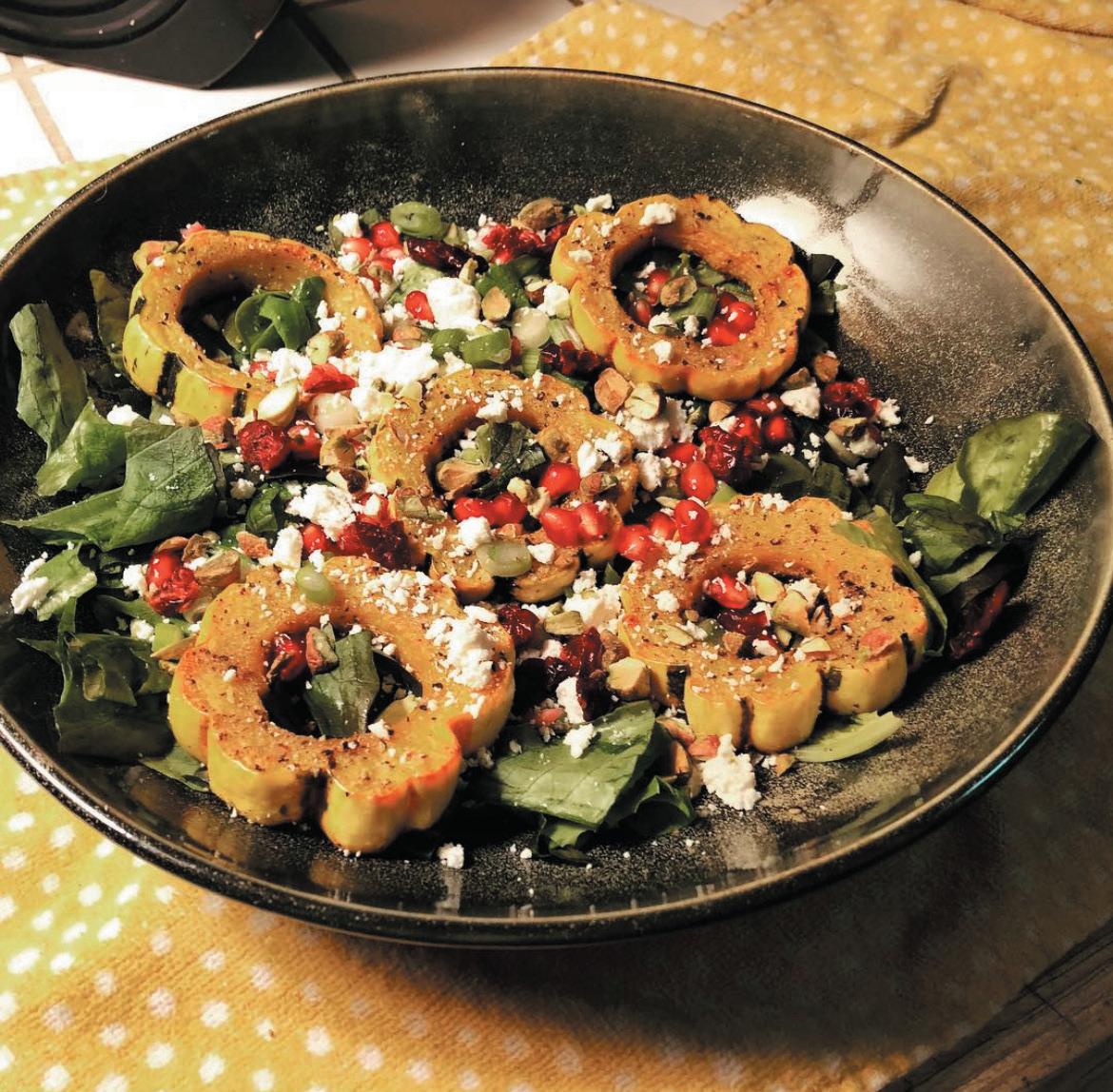
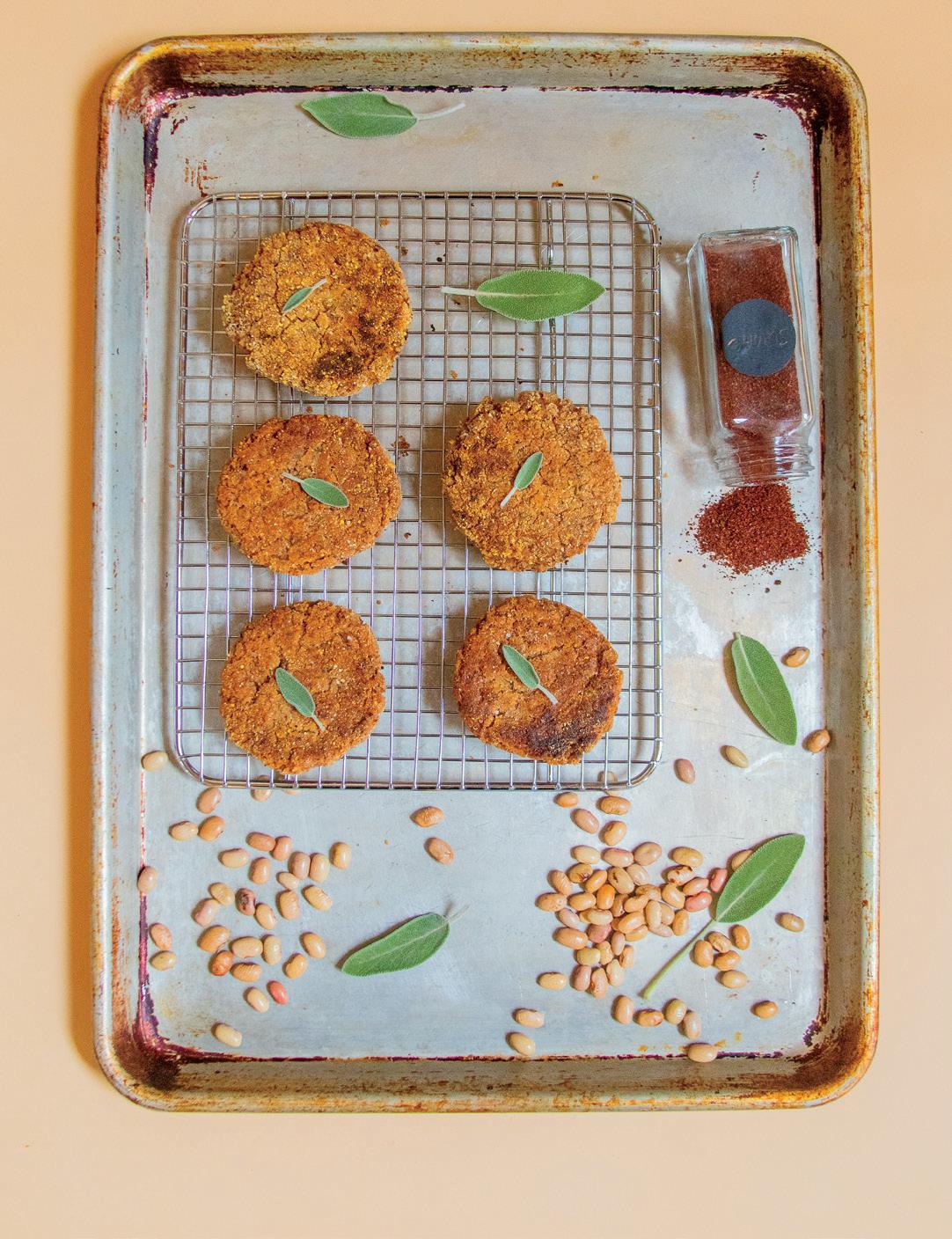
Makes 8 bean cakes
Eat these alone as snacks, on top of salad greens, with eggs, or topped with grilled squash. I use bolita beans in this recipe because they are creamy in texture and a little sweeter than pinto beans.
2 cups cooked beans (all liquid should be drained off) 1 1/2 teaspoons fresh sage leaves, chopped 1 duck egg (or 1 extra-large chicken egg)
1/4 cup chopped shallot 1/8 teaspoon salt 1/8 teaspoon crushed juniper berries, dried 1/8 teaspoon dried sumac 1/4 cup corn flour, plus 1 tablespoon for dusting 3–4 tablespoons sunflower oil
In a food processor, pulse together all ingredients to make a rough dough. Using your hands (moistened with water), form dough into 3-inch patties that are 1/2-inch thick. Dust with corn flour and set aside.
Add oil to a skillet and heat on medium. Cook bean patties in batches until golden brown, approximately 5–7 minutes per side.

Freddie Bitsoie exchanges the open fire for a stovetop grill in this simple-to-execute squash dish. This recipe would work with any kind of winter squash except spaghetti squash.
1/4 cup sunflower oil 1 tablespoon agave nectar 1 teaspoon salt 1 teaspoon pepper 1/2 shallot, diced 1 tablespoon fresh sage leaves, chopped 1 butternut squash peeled, seeded, halved, and cut into 1/4-inch slices Sumac for garnish
Mix oil, agave, salt, pepper, shallot, and sage in a large bowl. Add squash to the bowl and stir to coat. Heat a grill pan on high heat. When the pan is hot, cook squash for 3 minutes on each side. Sprinkle with sumac.



Sean Sherman uses tepary beans in this recipe, but they can sometimes be challenging to source, so I substituted another bean long cultivated in the Southwest—Anasazi beans.
6 cups cooked Anasazi beans
1 cup reserved liquid from cooking beans (or broth)
1 tablespoon sunflower oil
1/2 small yellow onion, thinly sliced
3 tablespoons agave nectar
1 tablespoon red chile powder, plus more for garnish
1 teaspoon salt, plus more to taste
2 teaspoons whole fresh oregano leaves
In a large, deep skillet, heat the oil over medium heat. Add onion and sauté until translucent, about 4 minutes. Add cooked beans, reserved bean cooking liquid, agave, and chile powder. Cook, stirring occasionally, until liquid has reduced to a glaze, about 10 minutes. Season with salt, to taste, and garnish with additional chile powder and oregano leaves.
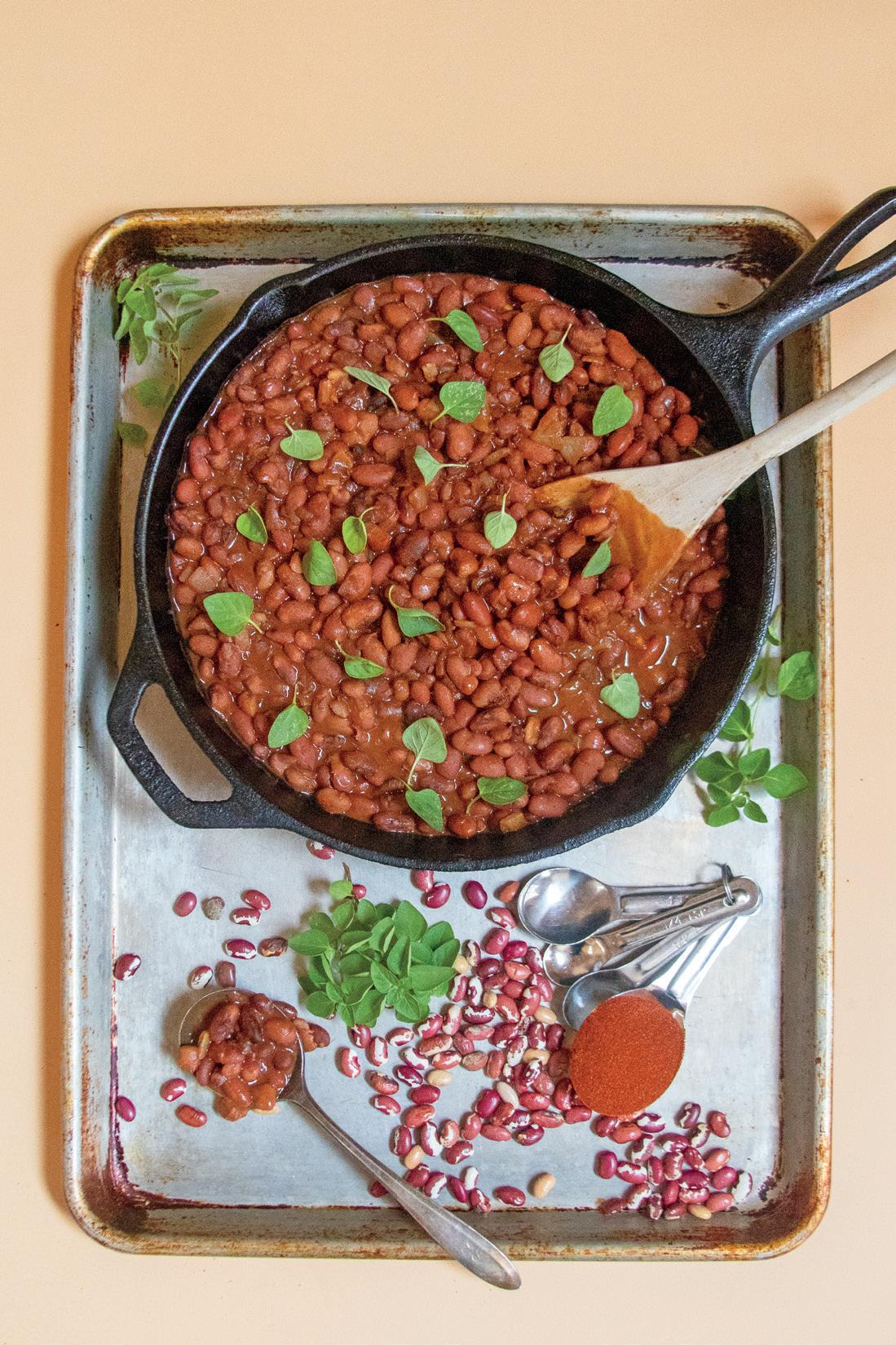
indigikitchen.com sioux-chef.com napi.navajopride.com flowerhill.institute toastedsisterpodcast.com @EastMeetsKitchen on YouTube
The Pueblo Food Experience edited by Roxanne Swentzell and Patricia M. Perea
The Sioux Chef’s Indigenous Kitchen by Sean Sherman with Beth Dooley
New Native Kitchen: Celebrating Modern Recipes of the American Indian by Freddie Bitsoie and James O. Fraioli
Foods of the Southwest Indian Nations: Traditional and Contemporary Native American Recipes [A Cookbook] by Lois Ellen Frank
Manko, food truck around the state Yapopup, a popup in Ohkay Owingeh and beyond Red Mesa Cuisine, catering in Santa Fe Juniper Coffee + Eatery, Farmington Itality Plant Based Foods, Albuquerque Indian Pueblo Kitchen, Albuquerque El Roi Cafe, Albuquerque



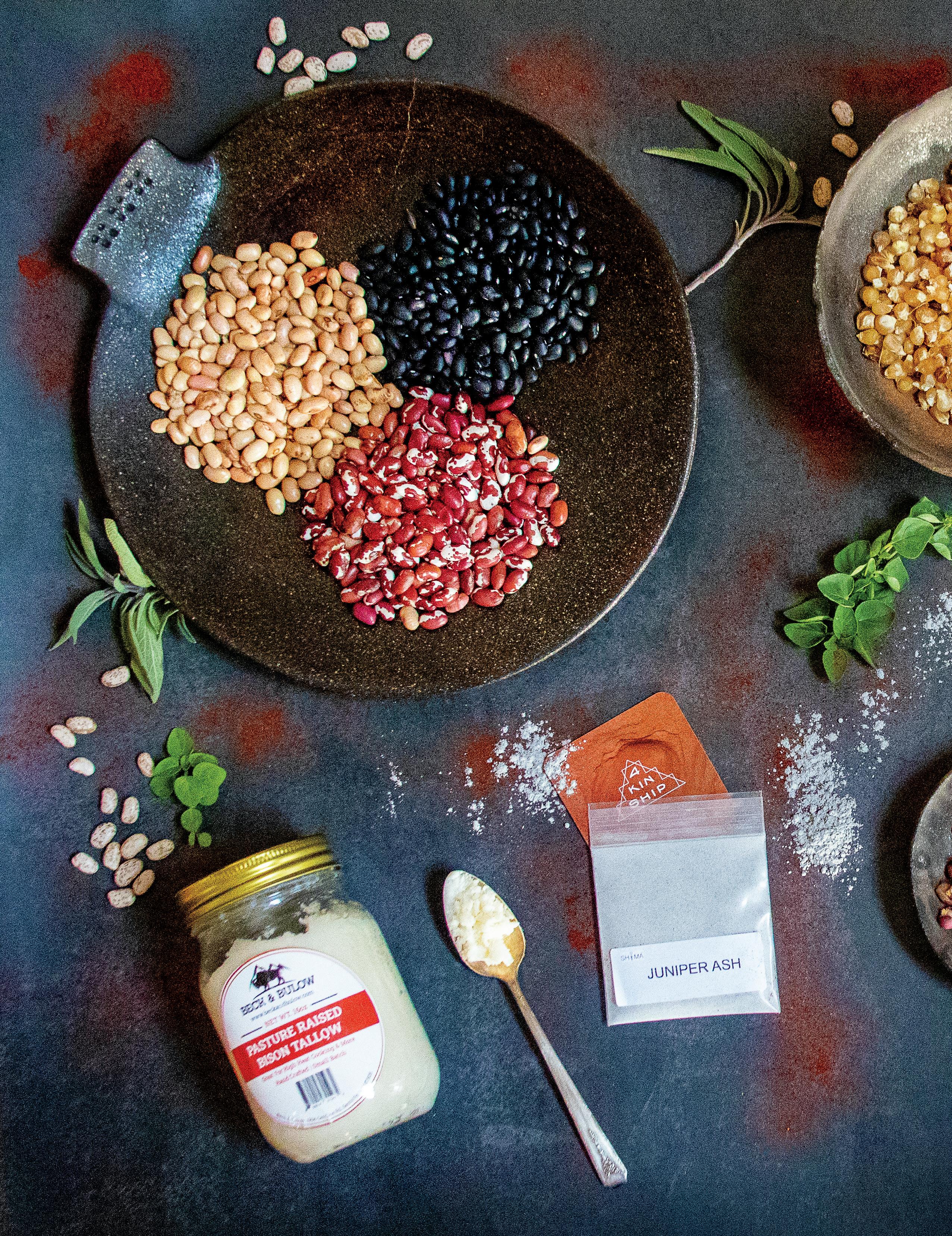
RODRIGUEZ S&J FARM’S Anasazi, black, bolita, and pinto beans have unique flavors and textures that you don’t find with commodity beans. The farm, located in El Guique, also carries chicos, posole, and chile powder. You can find them at the Santa Fe Farmers’ Market year-round or purchase their products through New Mexico Harvest.
BECK AND BULOW’S bison tallow adds a punch of smoky flavor to beans and other dishes that typically use bacon. Find their tallow at their storefront in Santa Fe or buy online at beckandbulow.com for delivery or pickup.
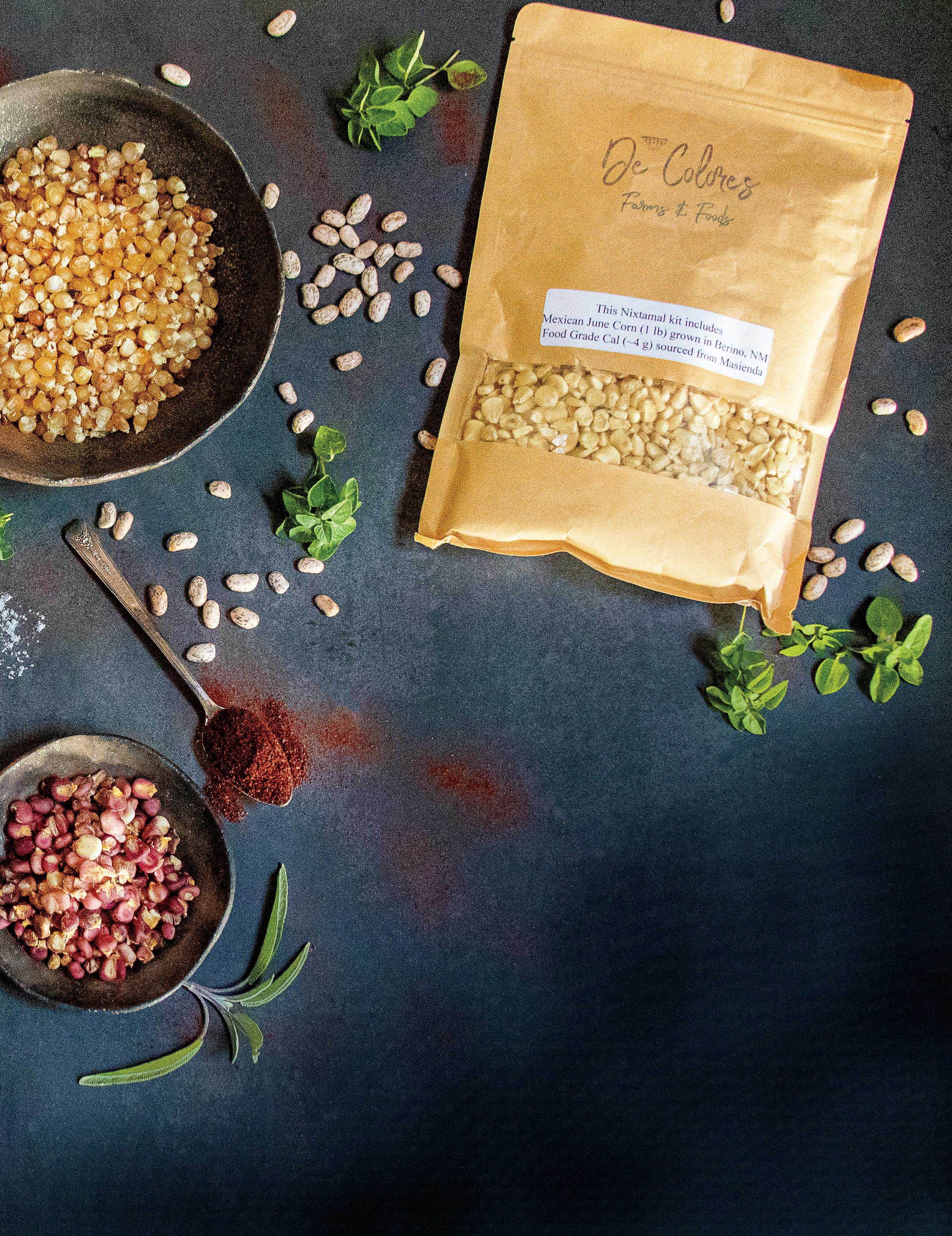
DE COLORES FARMS & FOODS' nixtamal kits include June corn, food-grade cal (lime), and instructions on the tradition of nixtamalization. The nixtamal can then be ground for fresh tortillas, used in pozole, and much more. De Colores is located in Berino, and their products can be sourced through New Mexico Harvest.
SHIMA’ juniper ash is made the slow Navajo way with junipers from the Chuska Mountains near Fort Defiance. Juniper ash is a traditional addition to blue corn bread, tortillas, and pancakes. This hard-to-find food adds a distinctive flavor, makes corn bread a deep blue, and raises the level of nutrients: calcium, zinc, iron, and magnesium. Shima’ juniper ash can be sourced through 4Kinship at their storefront in Santa Fe or online at 4kinship.com
Chicos are dried kernels of sweet corn, traditionally roasted in an horno. Once rehydrated, they taste like the sweetest roasted summer corn you’ve ever had— intensified. They are listed on Slow Food USA’s Ark of Taste, a catalog of outstandingly delicious traditional foods in danger of extinction. Chicos usually are available at farmers markets and other local sources around New Mexico in the fall and early winter, but they go fast. We source ours from Rodriguez
S&J Farm or Schwebach Farm. New Mexico Products Curated by edible Photo by Stephanie Cameron SPONSORED
SPONSORED
Recipe
8










 and photo by Stephanie Cameron
and photo by Stephanie Cameron
Filling
1 1/2 cups cooked butternut squash*
1/4 cup pure maple syrup
1 tablespoon light brown sugar
2 1/4 teaspoons arrowroot starch (or cornstarch)
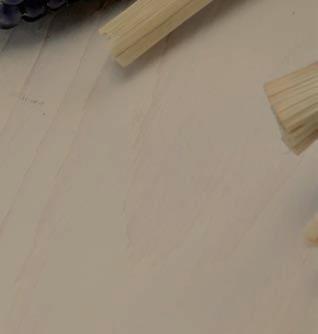
1/2 tablespoon ground cinnamon
1/4 cup butter, room temperature
1 egg
2 teaspoons vanilla extract
1/8 cup warm water
Tart Crust
3/4 cup blue cornmeal**

3/4 cup yellow cornmeal, fine grain
3 tablespoons sugar
1/2 teaspoon salt
1 tablespoon anise seed, lightly crushed
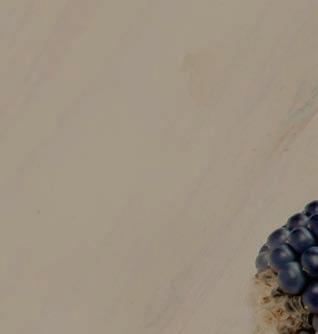
1/2 cup cold butter, diced
1 egg yolk, beaten
1/3 cup ice water, or more as needed
To make the crust, whisk dry ingredients together. Cut in butter until crumbly. Add egg yolk and stir with a fork. Add ice water
and stir until the mixture holds together when squeezed. Form into a ball, flatten into a disk, and chill for at least 2 hours or up to a day ahead of time. Bring to room temperature before using. Combine all filling ingredients in a high-powered blender or food processor and blend on medium speed for about 3–4 minutes until batter is smooth.
Preheat oven to 350°F. Press and shape dough into a 9-inch tart pan. Parbake by placing tart shell on a sheet pan and bake for 10 minutes. Remove crust from the oven.
Pour the filling into tart crust. Bake for 50 minutes or until a toothpick comes out clean. Cool tart on a wire rack for 15–30 minutes. Serve with toppings of choice.
*Note: To cook butternut squash, preheat oven to 350°F and cut squash in half, removing seeds completely. Add 2–3 cups of water to a large ceramic baking dish. Poke holes around the squash with a fork and place squash in the dish, flesh side up. Bake for 60–90 minutes, until a fork easily pierces the flesh. Let the squash cool for about 20 minutes before peeling the skin off. Puree squash in a food processor or blender until smooth. Store in an airtight container in refrigerator until needed.
**Sourcing note: La Montañita Co-op carries Tamaya Blue Corn and Tamaya Yellow Corn in their bulk section.
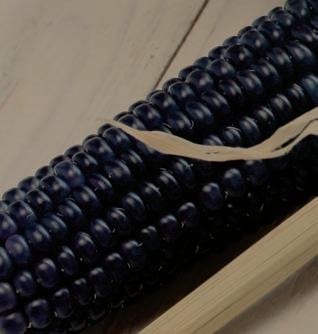


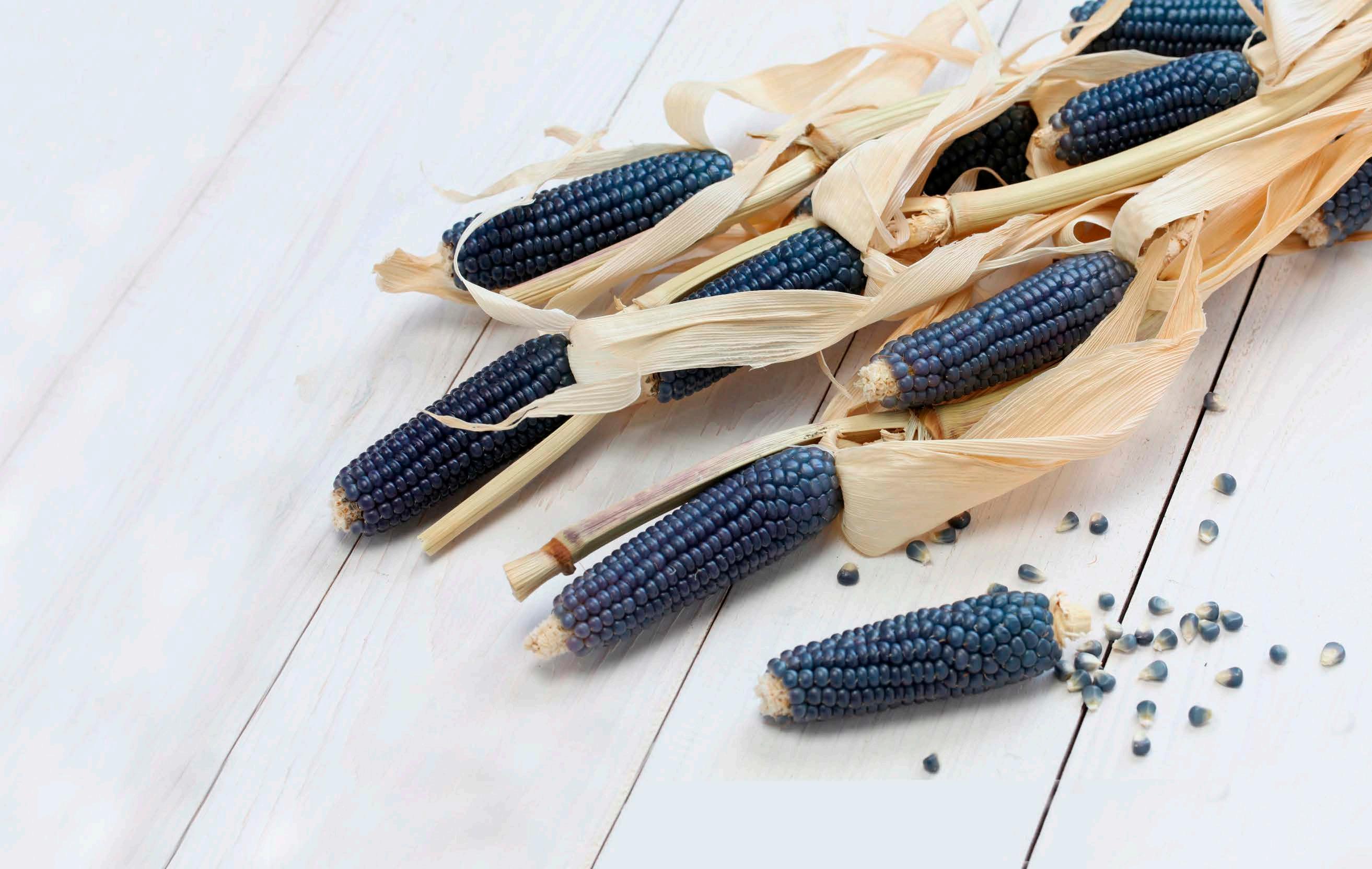

Beans. Yes, they can be noisy, but they’re also resilient, humble, diverse, and, well, they are tough as hell. In short: beans are the food of the people.
Have you ever walked into a home after a long day at school or work and been greeted by the smell of a pot of beans? I have—in the cabin where I was raised. In my nana’s yellow kitchen. In my best friend’s house, where her mother used a micaceous pot to cook them. In my first studio apartment in college. At my first house with a boyfriend. In the camper I lived in when everything went wrong. In the home I now share with my husband and children.
This is my love letter to beans.
Since I was born, the smell of boiling beans has filled every room I have ever gone home to, all across the Southwest.
Beans, which have now become a family of over four hundred cultivated varieties, were domesticated on Turtle Island so long ago that they have become a part of our Indigenous peoples’ creation stories. They are sacred. In one cup of cooked pinto beans, the human body receives 15.41 grams of protein, 15.39 grams of fiber, 85.5 milligrams of magnesium, 745.56 milligrams of potassium, 251.37 milligrams phosphorus, 78.66 milligrams calcium, and 244.53 calories, according to University of Rochester Medical Center.
First grown in the highlands and lowlands of Mexico and then in the Andes, the common bean (Phaseolus vulgaris) is indigenous to the Americas and is considered the mother of almost all modern beans, including snap beans, dry beans, and shell beans. Of at least seventy wild species in the Phaseolus genus, all native to the Americas, three others were domesticated long ago: lima beans, runner beans, and
tepary beans. Other types of legumes, such as chickpeas, lentils, and fava beans (Vicia faba), have been cultivated in Europe, Asia, and Africa for thousands of years.
When times were hard, and they’ve been plenty hard, beans have kept me alive—home-cooked, canned, or refried. I learned this from my ancestors’ survival. It’s imprinted in my DNA. You won’t die so long as there are a few beans on hand.
My father is a sixth-generation cattle rancher. When I had my daughter, I had trouble with my milk supply. He told me a story about how he had dry mama cows, so he started giving them beans. After a bean feast, they made milk like never before, so I started eating beans like crazy.
During my pregnancy, plagued by twenty-four-hour morning sickness for seven months, my unborn daughter and I survived on bean and cheese burritos. When my baby started eating solid food, who would feed her a bowl of mashed beans first became a competition. My mother won. It was a moment, because beans aren’t just food, they’re family.
There is no scent more nurturing, no flavor more life affirming, than that of a fresh pot of beans. Pintos, limas, Anasazis, Hopi string beans, scarlet runners—it doesn’t matter the kind, color, or language, every pot of dry beans boils with life.
I have a list of the scents that take me home, and among them are the St. Ives lotion my nana wore; the fragrance of sawdust, gasoline, and coffee that is my father; the aroma of the first monsoon rain carving into an arroyo; and an afternoon room greeting me with the smell of beans.
Water is life, but beans are its heartbeat. Beans are heroic. Beans are a thumbprint of our evolution on earth. Beans transcend class, culture, and time.
Opposite page: Collection of beans from Pete Daniel’s bean bank.
Water is life, but beans are its heartbeat. Beans are heroic. Beans are a thumbprint of our evolution on earth. Beans transcend class, culture, and time. They are not just a part of Indigenous survival; they have become part of our global survival. Little stinky ambassadors—how can you not love that?—wrapped in a tortilla and smothered in chile and cheese! Ay!
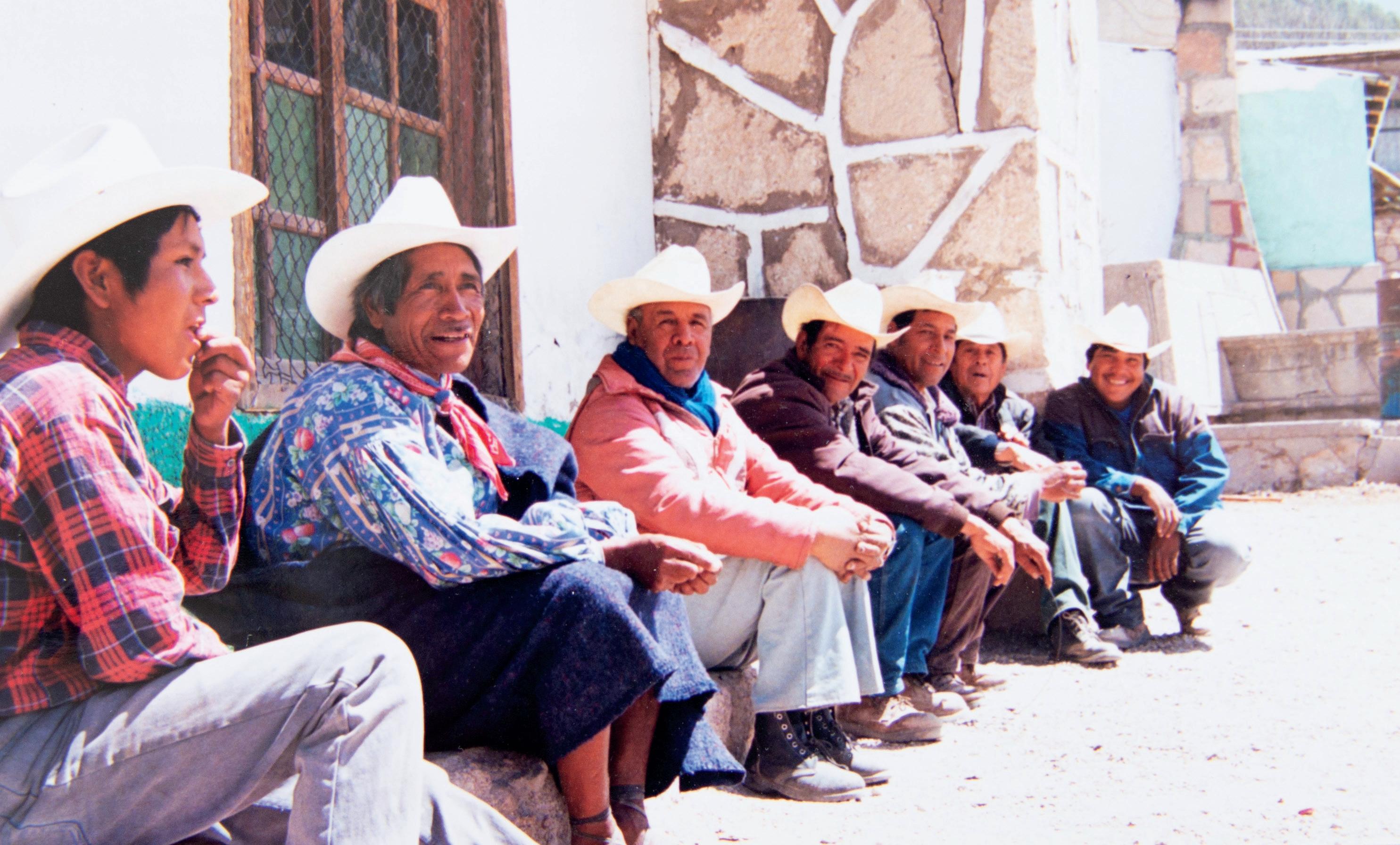
But seriously, could the Allied forces have had the strength to win World War II if not for the fuel of beans? Pinto beans that were cultivated in places like Estancia, Moriarty, and Mountainair. I want to believe that beans were a factor in all of our major triumphs, from the Pueblo Revolt to surviving Bosque Redondo, to me graduating college and having my first baby.
My first job was cleaning the beans. We lived in a two-room cabin that my parents had built by hand on the family ranch. The kitchen table was a butcher-block slab of wood on top of tall stumps. Despite its magnitude, it was something I associated with softness. It was smooth from meals prepared—the flour and Crisco of hundreds of tortillas, sugar cookies, and biscuits—and if I pressed my nail into its surface I could leave my own mark.
This was my perch, illuminated with the afternoon light that came in through miles of undisturbed ranchland onto the table where dinner would begin with me, the bean cleaner. Scattering a thin layer of pinto beans in front of me, I sifted through them, one by one, meticulously separating out the hard dirt clumps. I was

vigilant in determining whether or not a bean met my qualifications before going in the pot.
It was the early nineties, but we didn’t have electricity. Mom cooked dinner on an antique propane stove built in the early 1900s. I loved the sound of the pressure cooker rattling and steaming, the smell of beans in the air signaling the nearness of satisfaction, of fullness. Beans, chile, tortillas, and elk sustained us through every season, and, along with warmth made from burning wood, protected our family against cold, hunger, and the outside world.
Throughout my childhood, I never knew my grandfather not to spend his summer nights in a hammock, strung between the walnut trees, so he could be alert to chase elk out of his garden. This garden was paradise, situated between the Frisco River and the Gila Wilderness. It was a garden that could feed a family. Some beans, like pintos, bolitas, and teparies, are suitable for dryland farming, and although big farms such as Ness Farms in Estancia, Schwebach Farm in Moriarty, and the Navajo Agricultural Products Industry in Farmington rely on drip and sprinkler irrigation, many Hopi and other growers still use dryland methods.
But Earnest Daniel, aka Grandpa Pete, had his own way of doing things. In the spring, Grandpa put his beans in dampened Mason jars that he slept with at night to keep warm. These were varieties he had collected all across the West, and some he had developed himself. After the harvest, he would sit at the kitchen table and lovingly admire his beans, each one beautiful and unique, in vibrant reds and purples, yellows and blacks, selecting the best of the best to store away for the years to come.
Grandpa turned one hundred in 2022. We attribute his longevity to a steady diet of beans. Unfortunately, he isn’t able to tell me about his adventures in beaning anymore, but my mother helps fill in the gaps.
“Beans were Dad’s passion. He grew them, crossbred them, and played with them for years,” my mother, Rebecca Daniel, tells me. “He came up with all sorts of colors and shapes and types of beans. He was interested in this yellow bean that he called ‘Indian Woman Yellow.’ He had gotten it in Montana and said the Native Americans in Montana grew it for a shell bean.”
Grandpa was fascinated by this little yellow bean, which he said was grown all over the West by Indigenous people. Then he got his hands on a book about the Indigenous Rarámuri people of Mexico, also known as the Tarahumara, and learned about their farming ways.
“He wanted to go to the Sierra Madres and meet the Tarahumara to see if he could get that yellow bean from them to cross with the one from Montana, so as to strengthen the genetics,” my mama tells me. And so in 1999, she and my grandpa, who was seventy-seven at the time, along with their friend Jay Scott, caught a bus from Juárez to the city of Chihuahua. From there they took a train to the top of the Sierra Madres to a village where they were able to hire a cab driver.
“This guy took us in a cab for miles and miles out across the mountains through the woods,” remembers my mother. “I was just
holding my breath that this cab wouldn’t break down or blow a tire or whatever because we were out in the middle of nowhere on this dirt road in the mountains. At the end of the road, there was a trading post, and when we got there all these Tarahumara men were sitting outside, smoking rolled cigarettes.”
At the trading post, they told the men about their bean journey, and, says my mother, “the locals pulled out all their seeds and gave my grandpa some big purple-speckled beans, a big white bean, and others, including the Indian Woman Yellow bean.”
“He brought home quite a stash of seeds and grew them. The Indian Woman Yellow bean had a particularly great flavor,” says my mother. “I really liked it, but he was never able to grow it in abundance to where I could have a lot to cook. Mostly he was doing it for seed, and he’s got quite a seed bank of beans.”
I remember dinners with my mother’s parents. They always involved a bowl of Grandpa’s beans, which began in all shapes and colors and ended up in a tasty soup, made tastier with freshly canned bread-and-butter pickles and some pepper jack cheese.
Grandpa irrigated his beans and the rest of his garden from a natural spring, a mile or more away in the Gila Wilderness. In his garden, he made pathways canopied with trailing beans, blooming in different colors. The big purple beans Grandpa was given by the Rarámuris bloomed brilliant scarlet and drew in every pollinator around. Today I’ve seen them labeled the scarlet runner bean, and sold in specialty bean shops like Rancho Gordo. But in Grandpa’s day, no one was growing beans like his.
In his seed bank is another unusual bean that looks like an Anasazi bean except it’s black and white rather than maroon and white. I’ve seen it called a vaquero bean and referred to as a cousin of the classic Anasazi bean, which Grandpa also grew. This particular bean was given to him by a friend who discovered it in a cave ruin, most likely left over from the Mimbres people who inhabited southern New Mexico from the tenth to the twelfth century, according to anthropologists.
As I sort through a bag of my grandpa’s beans, I’m captivated by the way each bean is unique, and yet how each one bears a slight resemblance to the others. Being close to twenty years old now, the vibrant purple beans he received from the Rarámuris have turned a color so deep as to be black, yet I can still see traces of purple in some of their descendants. I find incredible little beans with markings like those on Anasazi and yellow eye beans that also bear patterns of the larger scarlet runner beans and Hopi string beans. I’m told it is unusual for a common bean like the Anasazi to cross with a runner bean, yet it happened in my grandpa’s garden. Beans have been a survival food for so long, and I envision them feeding people into the future, persevering through changing conditions in the land. In other ancestral Puebloan and Mimbres ruins where beans have been found, they weren’t thousands of years old but were rather the wild descendants of beans grown in those ancient times. They, like people, carry the resilient DNA that keeps them adaptable, dependable, and one of our closest plant allies.
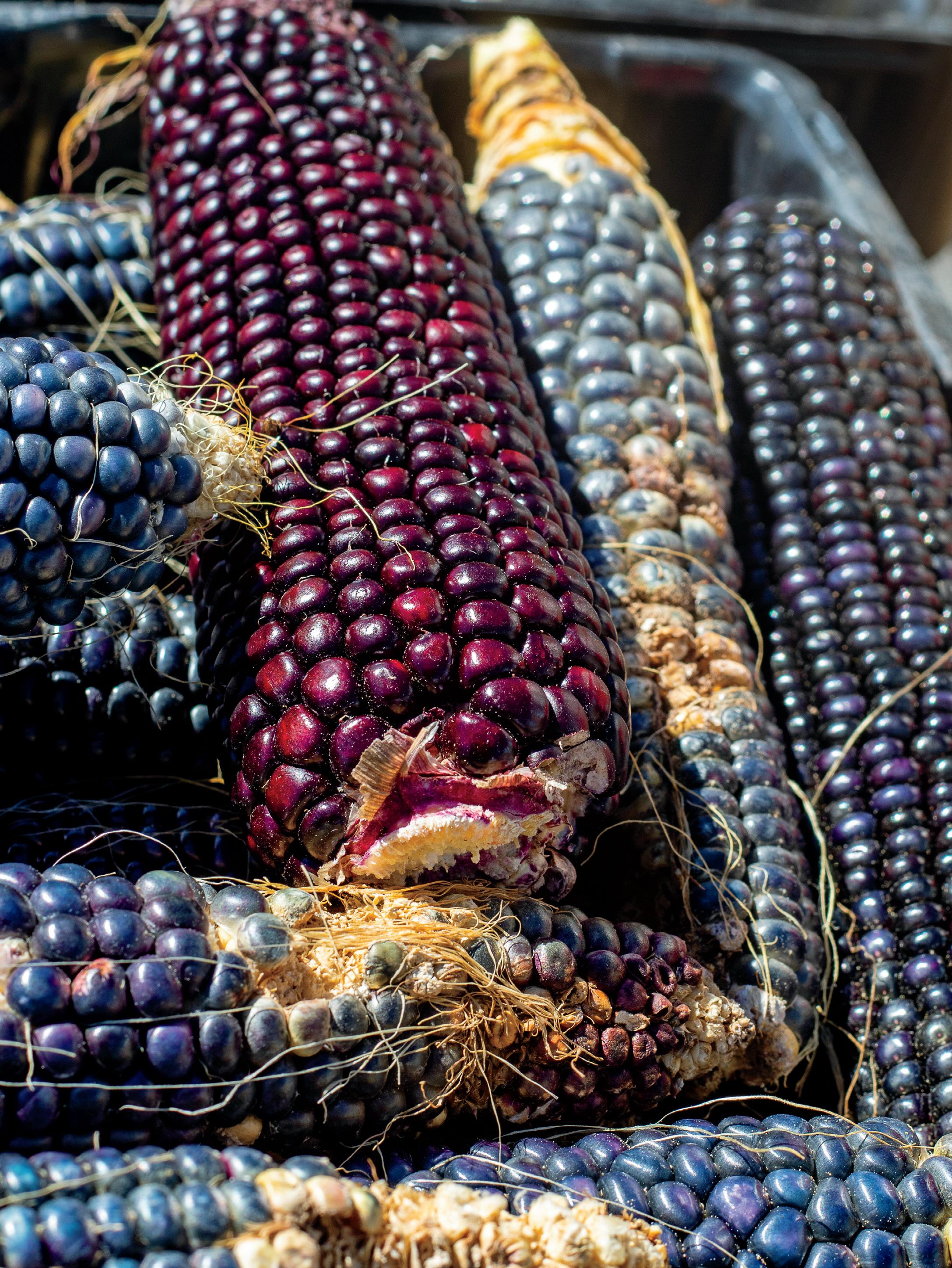
My father dropped me off at her house each morning cocooned in a white bedspread with pink flowers she bought for me. Nana could still carry me then. I was small, and she was healthy. As her goddaughter, she claimed me as what she always wanted but never had: a girl. Most mornings, I uncurled my limbs, wiped the sleep from my eyes, and wandered through the small house toward her smells. Cinnamon pinched in coffee, tomatoes stewing in rice, and holy water. Most often I would find her standing at the stove, presiding over her kingdom—frijol her court, Jesus her advisor. After a kiss and the Lord’s Prayer, she would serve me a floral china mug filled with milky-warm atole—the blue corn porridge of her homeland.
In a 1987 travel article from the New York Times, Susan Benner wrote of blue corn, “The colors and textures seemed as Southwestern as adobe. . . . That night I felt as if I were eating earth—not dirt, but food that was somehow connected to the richness of earth.” While much has changed in land and agriculture since the year that article was published, Benner’s testament of blue corn’s relation with place remains true today.
blue corn, are dried, roasted, often nixtamalized (treated with an alkali), and prepared in various forms of flours, meals, posole (hominy), and chicos. They’re used to make foods such as Hopi piki bread (a thin-layered oven bread), tortillas, pancakes, and porridge. This porridge is what the Hopi call wataca, the Diné (Navajo) call mush, Puebloan people call chaquehue, and what I learned from my godmother as atole, a word that comes from Nahuatl. The blue corn kernels are roasted prior to milling, giving the hot cereal a nutty, earthy flavor. In its simplest form, atole is a porridge of toasted ground cornmeal, water, and sometimes salt or sweetener, often thin enough to drink, but other times thick like polenta.
To understand the cultural place blue corn mush holds in the American Southwest is to understand the movement of peoples and seeds across space and time. The domestication of maize began nine or ten thousand years ago in what is now southern Mexico and Guatemala. Over time, corn spread across the Americas with the movement of Indigenous peoples. Ancestral Puebloans began to establish semipermanent settlements where they could cultivate corn as early as 2000 BCE. The need for corn to be cultivated in rows led to advances in irrigation techniques, like ditches for rainwater runoff, starting around 250 CE.
Maize ( Zea mays ) can be grouped into two broad categories: that harvested young (usually sweet corn) and eaten fresh, and that harvested mature (including field corn, flint corn, and flour corn) and eaten dry. Flour and flint varieties of corn, such as
When the first Spanish colonizers came into contact with Puebloan and Hopi peoples around 1540 CE, they had been cultivating and tending to corn—including blue corn—beans, and squash in a symbiotic relationship with the lands, each other, and nonhuman
Like the corn dances of the Pueblo peoples along the Rio Grande or the Hopi origin story, blue corn is a weaving of culture, spirit, and practice, a process that cannot be fully understood on a timetable. For those who cultivate it, who know it intimately, the spirit of blue corn’s connection to place may be enough.

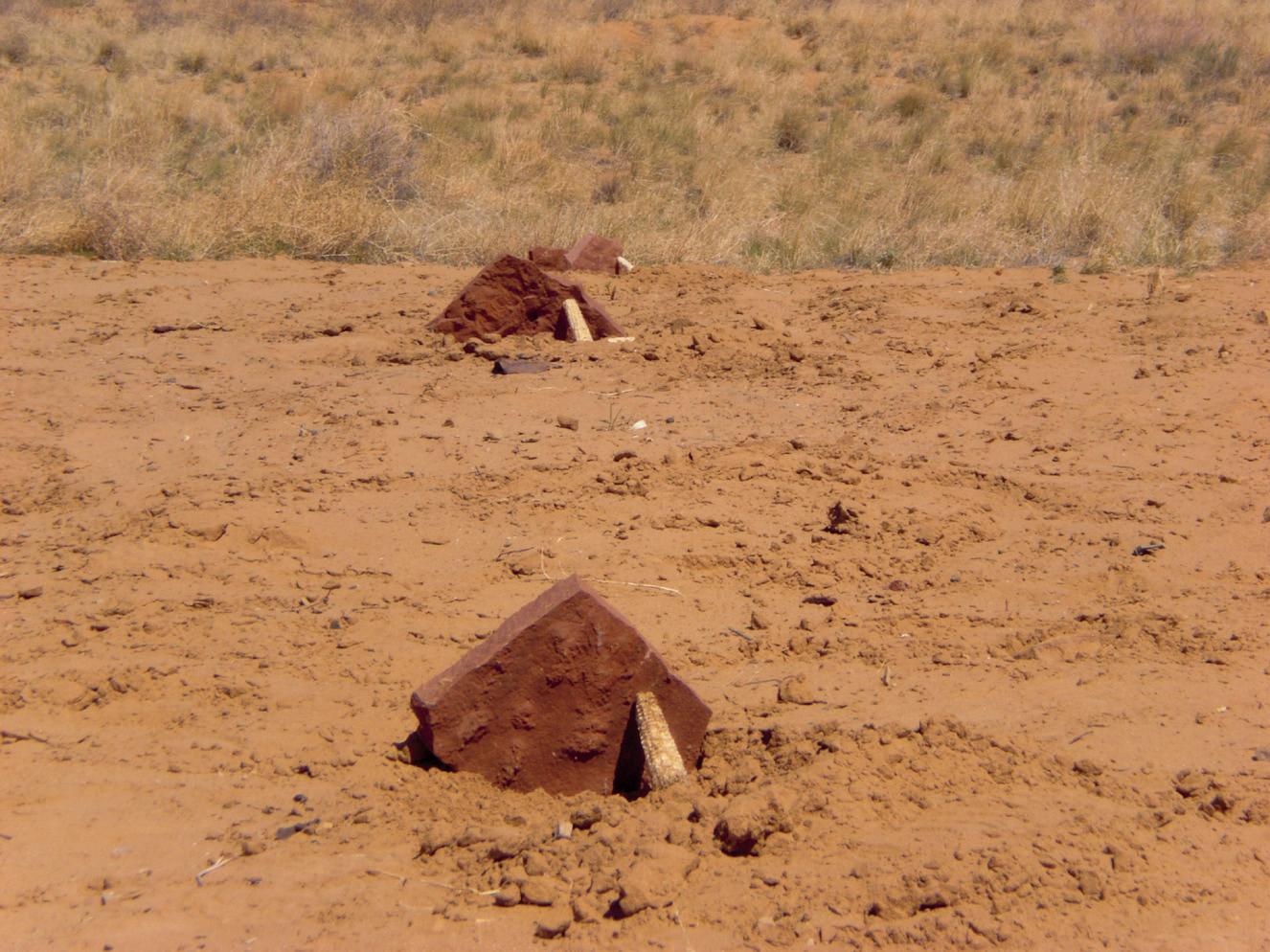
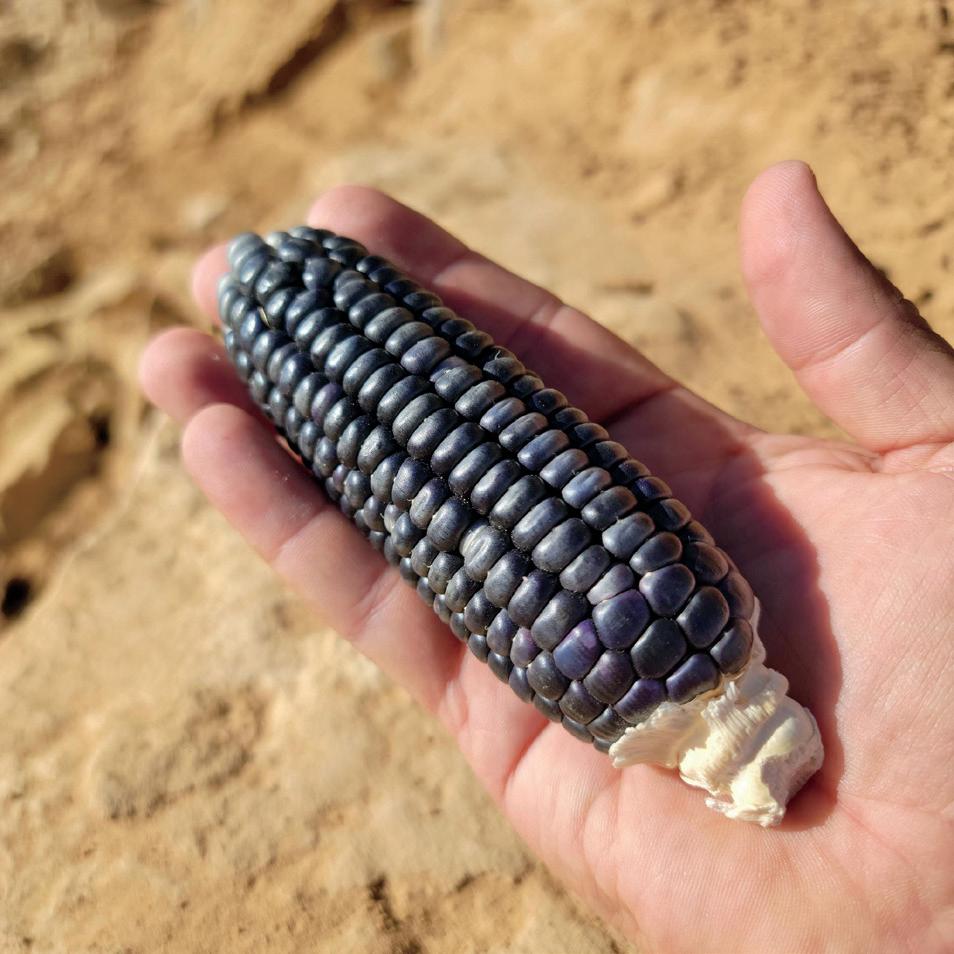


relations for hundreds of generations. These first Spanish colonizers reported seeing Native people spreading cornmeal around their doorways to ward off the conquistadores. The Spanish most likely also witnessed Hopi peoples harvesting, drying, storing, decobbing, roasting, and grinding their corn into wataca, in a fashion similar to what they do today.
Hispano settlers claimed land along the Rio Grande and its tributaries. They adopted Native farming and irrigation practices while integrating methods for arid agriculture learned from the Moors, who brought acequia systems to the Sierra Nevada of southern Spain from North Africa in the eighth century. Thus, atole is an adaptation of Indigenous foodways and ways of knowing that includes the cultural building of acequia communities we see today.
Johnson is ultimately concerned with the “revitalization of the American Indian food system.” For him, this is the process of elevating Indigenous ways of knowing as a “value system and culture that allows us to bounce back.” That is to say, for Johnson, corn, especially blue corn, is not merely a food; it represents “humility, patience, and endurance” in the face of cultural and climate threats.
Michael Kotutwa Johnson, with a strong handshake and warm smile, introduces himself as a 250th-generation farmer. I think I hear him wrong . . . 250 generations? “To be Hopi is to be a farmer, and to be a farmer is to be Hopi,” Johnson explains. He holds a PhD in natural resource management, a master’s degree in public policy, and a bachelor’s degree in agricultural science. As an assistant specialist for the Indigenous Resilience Center at the University of Arizona in Tucson, he is currently bringing Indigenous practices of dryland agriculture into the fold of USDA climate-smart techniques for farming in arid landscapes. On Johnson’s family farm, located on the Hopi reservation in northeastern Arizona, he cultivates corn of many varieties from seeds his mother and sisters keep. The Hopi are a matrilineal society, where the women are seed breeders, dictating harvests by the seeds they choose to keep and cultivate from season to season.
Johnson tells me that Hopi farmers plant corn seeds together in companion bundles—a dozen seeds to one hole, spaced six to eight feet apart. One of the Hopi people’s cultural and spiritual teachings is that seeds should not be lonely when they are sprouting. Where modern corn planting would dictate seeds be planted only inches under the earth, Johnson sometimes plants seeds fourteen inches deep. This is so the seeds can reach the water table—essential to dryland farming, a practice where crops are watered through natural rainfall as opposed to irrigation. “With the recent drought, these practices have become harder,” Johnson tells me. “But two good rains, and the corn will grow tall.”
For Hopi people, corn is not just corn. Corn is part of who they are. Different varieties and colors accompany different cultural and religious ceremonies; corn is present at every birth, death, and wedding. These practices stem from the Hopi origin story: Johnson explains to me that the Guardian Spirit of his people, Màasaw, led them north to where they call home today. The spirit offered gifts to the different clans: wood that became the Hopi planting stick, a dried gourd of water, and a small ear of blue corn. These gifts form the basis of Hopi spirituality, and connection to place.
Domesticated corn is the daughter of teocintle, also called teosinte, a wild, flowering perennial whose “cobs” fit in the palm of one’s hand. I know this because on a very rainy day this past October, farmer and seed keeper Ron Boyd removed a small jar from his corn altar—a mixture of iconography, art, and seeds honoring and made of maize—and emptied its contents into my hand. The teocintle that I held was cultivated on Boyd’s land, one hundred acres along the Rio Grande in La Villita. What is now a fifteen-minute drive north from Española was at one time a distinct, thriving farm community, with the largest acequia madre in the state.
“I do not grow Hopi corn,” Boyd explains to my mom and me as we stand, soggy with rare fall rain, in one of his cornfields. “Hopi corn can only be from Hopi, by Hopi. I grow blue corn.” Boyd was given his first blue corn seed thirty-seven years ago. (It is a cultural practice of the Hopi to share corn seeds for keeping and planting, but never to sell them.) Today, he grows two varieties of corn for a seed company, Baker Creek Heirloom Seeds, including the midnight-blue eight-row Delaware Flint, referring to the eight rows of kernels around the circumference of the cob. Ancestors of this variety began to travel with Indigenous traders from the Rio Grande Valley up the Mississippi River by 1000 CE, and were eventually cultivated by the Delaware, or Lenape, people of the northeastern woodlands.
Boyd harvests his corn with a Chinese corn picker, adapted to collect cobs mere inches from the ground, as the Delaware Flint has a short stalk. But he still holds an annual harvest party, where the community is invited out to share in the harvest. “There is a whole lot of interest in ‘I want to do it with ya,’” he muses. So while this farmer does sell corn seed, the maize he holds most special is the blue corn that he and his wife toast and grind in their home kitchen to make atole.
Back in his kitchen, examining the teocintle, Boyd says, “The magic that started with this, and developed into corn as we know it, and the multitude of colors and varieties it came to be; it’s just unknowable.” And perhaps that is it. Like the corn dances of the Pueblo peoples along the Rio Grande or the Hopi origin story, blue corn is a weaving of culture, spirit, and practice, a process that cannot be fully understood on a timetable. For those who cultivate it, who know it intimately, the spirit of blue corn’s connection to place may be enough.
Blue corn mush brings to mind family and connection for dietician Denee Bex. “We always had it at my grandmother’s on the weekends, for the Super Bowl, or graduation,” she tells me over the phone from her home on the Navajo Nation. Through her personal business, Tumbleweed Nutrition, Bex educates people on the benefits of Indigenous foodways. “It’s important for Indigenous people to see folks like them giving health advice,” she adds. Bex tells me she is one of only about three hundred Indigenous registered dieticians in the United States, and the only Navajo dietician (that she knows of) to own a consulting business. Delivering culturally relevant nutrition education to tribal organizations is the basis of Bex’s consulting. And singing the praises of blue corn mush is part of that ethic.
“Traditional foods signify the connection we have,” Bex explains. “For Navajo, this is our idea of taking just enough from the land, for what you need to be healthy.” On the day we speak, Bex is working on scaling up a blue corn mush recipe to three thousand servings, for the Navajo nation’s public schools. Part of her work is to battle the rhetoric of what it means to be healthy and Native. “When we make blue corn mush, we make it in large quantities to serve family and friends . . . [for us,] blue corn is doing something together.”
The addition of juniper ash sets Navajo blue corn mush apart from atole. Considered a healing plant to the Diné, juniper is used in ceremonial practices for cleansing. While Bex cannot be sure how and when people started adding juniper ash to blue corn porridge, she postulates that it relates to this spiritual connection. As a dietician, she knows that juniper ash, an alkaline substance, adds nutrition to this simple food. Nixtamalization, the process of
adding alkalinity to corn while cooking, raises the pH of the water, opening up the cell walls of the corn to release more nutrients like B vitamins, proteins, and amino acids. Blue corn is said to have up to 20 percent more protein than white or yellow corn and is high in antioxidants due to the flavonoid anthocyanin, which gives the plant its purple-blue hue.


When I drank atole as a child, it was most often a compromise. Each day I spent with my great-aunt and godmother Henrietta “Nana” Cachon-Martinez meant a day we went to church. “Our bodies were meant to be pure for Christ,” Nana would explain. But my five-year-old belly did not understand why Christ needed me to go without breakfast. Our deal became a cup of atole, liquid enough to drink, and I would attempt to sit still through mass.
Today when I make atole, it is a ritual of the changing season, a practice that starts at the first turn of the cottonwoods and continues through the frozen mornings of winter into the thaw of spring. Making atole often happens in the dark of early morning, by myself, before any words have been spoken to the day. It instills a deep vein of remembering for when Nana was alive.
Since making New Mexico my home three years ago, the concept of querencia has often been on my mind. I think of this word, which does not have a direct translation to English, as meaning “being so tied to a place that the place becomes inseparable from you.” Even
when you leave that place, it continues to exist inside you, permeating the way you conceive of and engage with the world.
Each time I go to Taos, I make the pilgrimage to Arroyo Hondo to see the house where Nana grew up. It is located across the highway from the only businesses in town—a gas station and a liquor store. Her mother bought the house from a Sears, Roebuck catalog in the 1940s with money from the state, paid in exchange for the family allowing their adobe to be torn down to make way for the new two-lane highway. From the house, I travel down a dusty road through the deep gash in the Taos plateau known as the Gorge to visit the Rio Grande.
I walk along the banks, taking in the trickling of Vasquez Creek merging into the Rio Grande, and think of Nana and her querencia. How she carried it with her all the way to Denver and shared its stories and tastes with me through my childhood. I think of my own querencia, and how it feels liminal to come “home” to a place where I never lived before. But by being here, I feel closer than ever to the life lessons Nana imparted to me.
“We are the earth, and the earth is us,” Candelaria has told me more than once. This seventh-generation farmer cultivates food on the remains of the land grant his family settled 350 years ago. It is now enmeshed in a rapidly modernizing neighborhood and world. The time he gives to the cultivation of plants and friendships alike is humbling. Nothing about Candelaria’s life choices is fast. He is fond of telling a story of how he was born prematurely on his grandmother’s ranch in the Magdalena Mountains, and in order to keep him alive, his grandmother incubated him in her earthen clay horno. “I am a child of my mother, and madre tierra,” he tells me.
On a sunny late fall morning, with coffee and supplies in hand, I head to Lorenzo Candelaria’s farm, situated along the Rio Grande and Atrisco Ditch in the South Valley of Albuquerque. On a camp stove, the petite man, whom I have only ever known to wear overalls, a flannel shirt, and a pañuelo, sets to work making me breakfast.
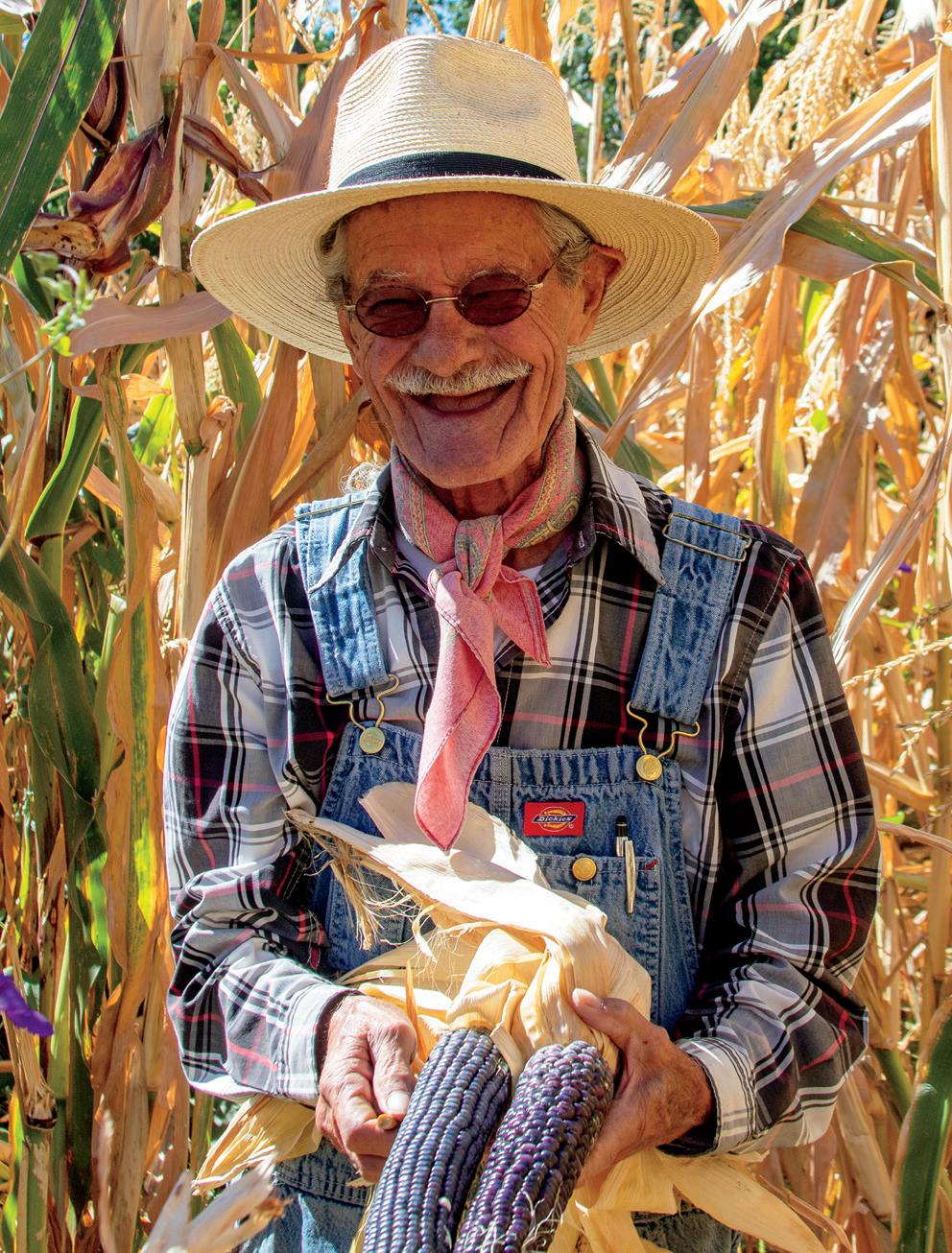
Candelaria has instructed me on the exact ingredients to bring for his everyday breakfast, atole made with night-blue corn grown in the fields next to where we now stand. These components—salt, cinnamon, milk, and honey—are now laid out next to him and the stove. He has brought to the operation his toasted blue cornmeal, from corn roasted in his home oven, cookie sheet by cookie sheet laden with kernels, during the previous winter. Once the water comes to a boil, he moves with intention. We have premixed half a cup of toasted cornmeal with water to make a paste, and when I hand him the slurry, he dumps it into the boiling water, made into a funnel by the spinning of his spoon. We add a stick of canela and a pinch of salt. “You don’t want to stop stirring,” he instructs. The water absorbs the blue corn mixture in a gray cloud, thick with grain. After about a minute, white bubbles begin to appear on the surface. “That’s the starch,” Candelaria informs me. “When the bubbles are gone, we know it has cooked enough.”

A minute or two later, the white foam subsides and Candelaria ceases his circular motion. He covers the saucepot while we sit on worn lawn furniture and take in the cool sunshine of this slow Wednesday. After the requisite pause, and a soulful conversation—because that is the only kind Candelaria has—we duck back into the makeshift kitchen. He pours the mixture into a bowl and invites me to top it with a splash of cream and honey. The cream slops atop the porridge and reveals itself in a white, curved line reminiscent of a heart.
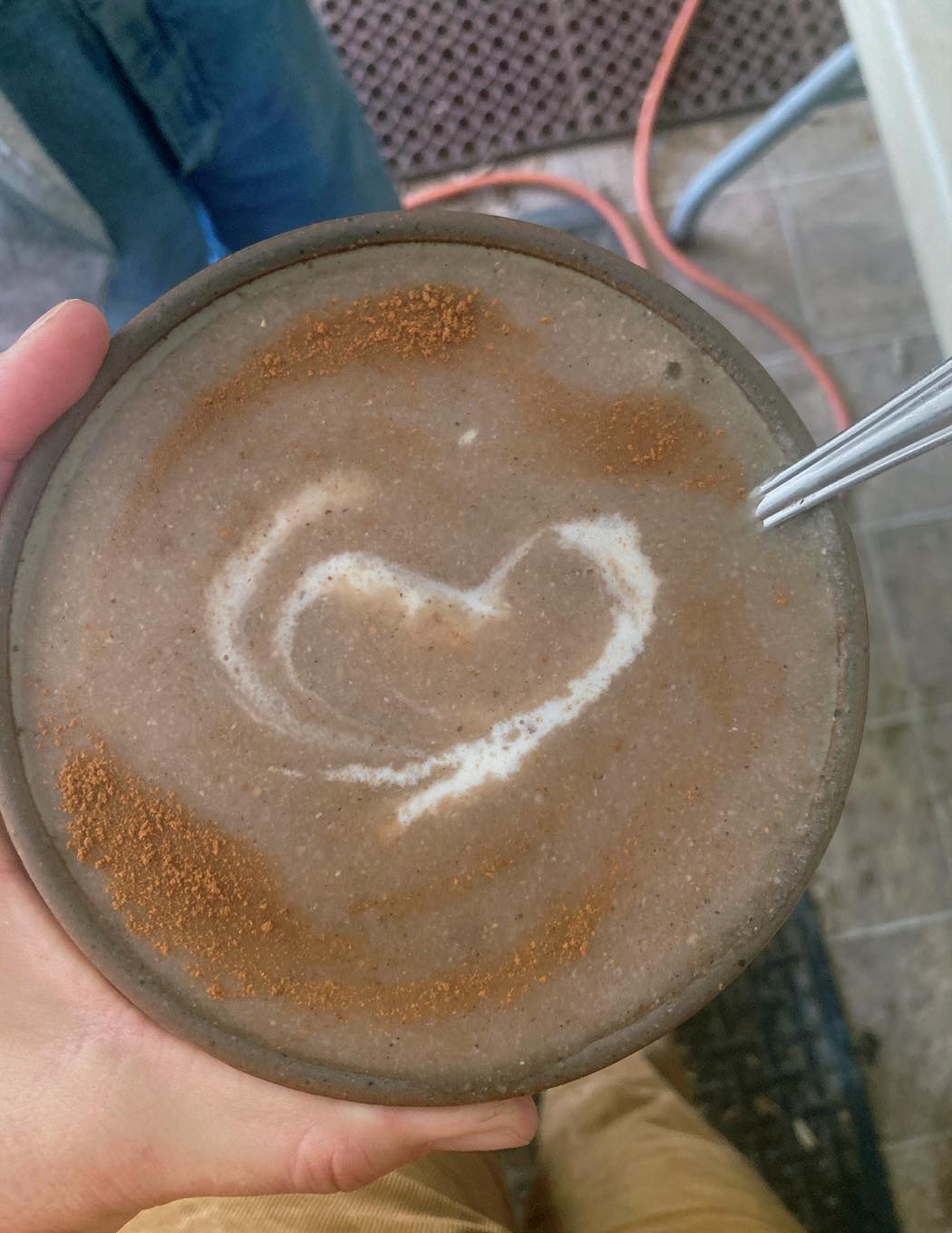
Makes one serving
*In general, use a 4:1 ratio (liquid to cornmeal)
Bring 1 cup water to a boil in a small saucepan. Separately, add 1/4 cup cornmeal to 1/2 cup cold water, creating a slurry. Set aside.
When water comes to a boil, stir in cornmeal. Continue stirring constantly for 1–2 minutes. (Smell it! The toasted flavor will come through.)
When a white foam appears on the top, continue stirring for another 1–2 minutes, until the foam dissipates. (This is the starch being converted into sugars).

Blue corn mush, unadorned beyond salt, canela, and just a little something sweet, tastes of the land from which it came, the rain that nourished it, the hands that planted it, the dry earth who supported its stalks, the hard freeze that signaled its time for harvest, the cob that acted as home for its drying kernels, and above all, the nutty aroma of toasted kernels. This journey from seed to meal is where the labor takes place. So that, in the home, blue corn is free to simply tell its story of family and land and place, of gratitude and knowing. It is a story written in home kitchens, across tables, on cold winter mornings, in small fields with and without water, across the Southwest. The blue/gray/purple porridge is nourishment that is also knowledgemaking. In its simplest form, atole is a child finding comfort in the liminal space of love presented in food.
Add a pinch of salt and either 1/2 stick or 1/2 teaspoon of cinnamon, and continue stirring for about a minute more, until the liquid starts to thicken.
Turn off the heat; cover saucepan with lid. Let sit for 5 minutes.
Season, to taste, with milk, butter, more cinnamon, and the sweetener of your choice (Lorenzo recommends honey). Enjoy.
Note: Denee Bex suggests adding peanut butter, fruit, and/or nuts for additional nutritional benefit. For a savory alternative, leave out the cinnamon and honey, and allow the mush to thicken a bit more. Top with an egg, sautéed vegetables, and/or pickles.
Get fresh updates on our work to ensure the future of agriculture includes all Americans.
farmland.org

Discrimination against marginalized groups in agriculture negatively affects all Americans by limiting the opportunities for farmers, workers, and consumers.
AFT is raising up diverse voices in agriculture, because we believe diversity contributes to a more resilient agricultural system, a stronger economy, and a more equitable society.
 By leticia gonzales
By leticia gonzales
 Taos Pueblo Hubbard squash at Red Willow Center. Photo by Stephanie Cameron.
Taos Pueblo Hubbard squash at Red Willow Center. Photo by Stephanie Cameron.
What we eat, where we get our food, how we prepare it, and how we think about it can become so familiar as to become a hidden or subterranean force. Some of us grew up with traditional dishes like calabacitas passed down through grandparents and prepared at countless celebrations and holidays, through shifting seasons, and for large and changing extended families. Others have curated and crafted their own culture of food, shared with friends and family at parties, to mark the coming of warm weather and cold, to celebrate being together. Maybe your grandfather was particular about the source of the pork for his chicharrones, or you’ve found yourself in specialty grocery stores trying to source a rare variety of chile for a friend who’s making their world-famous dish. Maybe you are the particular chef, intent upon finding the right variety of squash—not too sweet and not too bitter, maybe an heirloom—and the freshest herbs to complement your soup.
If it’s true that food connects us both to ourselves and to each other, it is equally true that “each other” transcends our individual lifetimes. Our histories are also the histories of what we grow, which nourishes and sustains us, the squash carefully tended and cultivated over lifetimes. These crops connect us in webs of interrelated need and pleasure. I feel fortunate to have grown up with stories of wild foods: my great-grandma and grandma preparing quelites, verdolagas, wild asparagus and onions, trout fresh from mountain streams. Intrinsic in the act of passing these memories down is a firsthand knowledge of the diversity and variety of our ecosystems. In New Mexico, and increasingly throughout the United States in initiatives often led by Indigenous farmers, storytellers, and activists, the work of remaining present with the lived history of relationships with food and medicine is undertaken by seed savers and keepers, community-oriented agriculture programs, farms, permaculture institutes, and individuals growing crops for diverse seed banks.
The archeological record places the cultivation of squash on the American continent sometime between 8,000 and 5,500 BCE, with the oldest evidence found in the Guilá Naquitz Cave in Oaxaca, Mexico, and predating archeological evidence of maize and beans in the area by about four thousand years. Indigenous oral history is a living testament to the intimacy of the relationship between humans and squash over vast regions throughout this time frame. With
their long histories of contact, engagement, and trade with cultures throughout both present-day Mexico and the present-day United States, the Indigenous inhabitants of what is now New Mexico have long been poised as intellectual and cultural hubs, interpreting, adopting, and sharing practices across time. The presence of Spanish colonists, who brought farming practices and seeds from North Africa and the Iberian Peninsula, added many layers to this existing milieu, and together these cultures have maintained relationships with squash to this day.
Sometimes referred to in English as the Three Sisters when planted as companions, squash, corn, and beans have long been grown together throughout the whole of their geographic range in North and South America. In this practice, squash provides shade and cover for the soil during hot months, and shields beans and corn from pests; corn provides a stalk for both beans and squash to climb, keeping their tender leaves away from harmful microbes on the ground; and beans replenish nitrogen in soil. This way of planting squash, corn, and beans is found also in milpa agriculture throughout Mexico and Central America. Along with being easy growing companions, these three crops provide balanced nutrition when eaten together: the amino acids found in beans support those in corn, and, together with squash seeds, provide necessary protein. Squash, meanwhile, provides fat, minerals, and vitamins.
As Tiana Suazo, executive director of the Red Willow Center in Taos Pueblo, observes, companion planting also saves space, something of particular importance on Red Willow’s farm, which grows crops on just less than a third of an acre. The center has been operating since 2001, and provides internships to students from the Pueblo who are interested in farming. The farm produces commercial crops to sell at the Taos Farmers Market, and since Suazo took the helm in 2019, she has also championed growing traditional crops for seed. Some percentage of the harvest of these crops is also given to families involved in traditional activities on the Pueblo. In the summer of 2022, the student farmers grew Taos Pueblo blue corn, Taos Pueblo red beans, Taos Pueblo Hubbard squash, and Hopi red dye amaranth.
There are five species of domesticated squash, but as longtime seed advocate (and former employee of the New Mexico Department of Agriculture) Brett Bakker emphasized, there are countless varieties
We are so bound by our foods that it can be hard to think of them as existing any way except as we know them now: as the familiar staples and ingredients that make up our gustatory lexicon. It occurs to me that, for many of us, to be alive at any given moment involves knowing very little about what it was like to be alive at any other time.

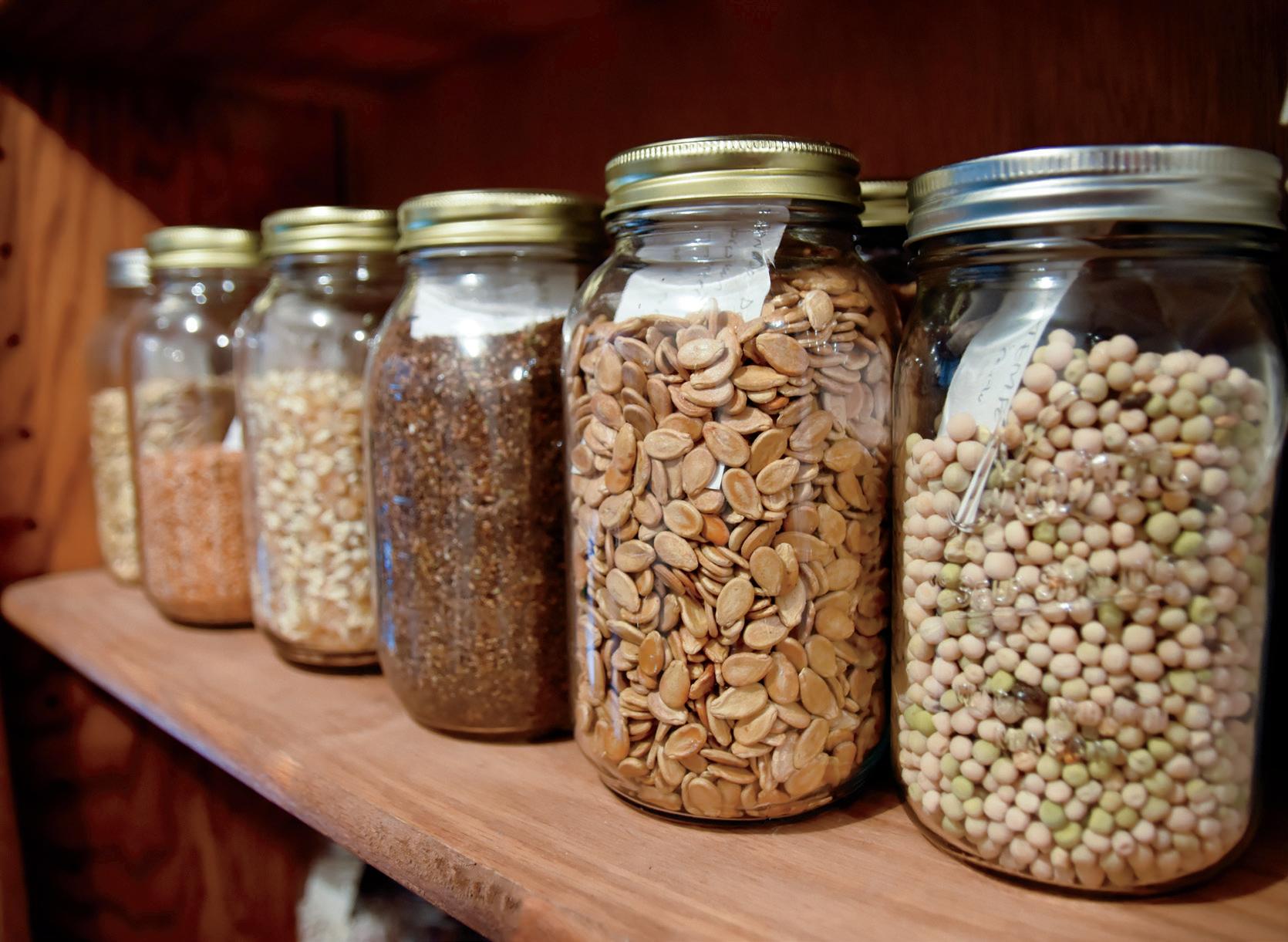
within each species, with a plethora of genetic diversity represented by landrace, heirloom, and traditional varieties. Bakker has been growing, collecting, and saving native seed in New Mexico since the 1980s. He worked for a decade with Tucson-based Native Seeds/ SEARCH assembling a bank of traditional Southwestern seeds, which today includes such varieties as the New Mexico bolita bean from Hispanic communities in northern New Mexico; Huatli amaranth from Tulyehualco, a Nahuatl community near Mexico City; and the San Juan Tsile chile, from San Juan Pueblo. Bakker serves on the board of the Flowering Tree Permaculture Institute, a northern New Mexico–based nonprofit that works to “nurture healthy communities through practices based on Indigenous ways of knowing.” Under the direction of Roxanne Swentzell, Flowering Tree has eight sites to support their mission in permaculture, traditional food practices, traditional building practices, seed saving, and animal husbandry.
Seed banks, particularly those collected and maintained by members of Indigenous groups, represent an invaluable resource in the preservation of traditional varieties of squash. The Taos Pueblo Hubbard squash, as Suazo understands, had disappeared from its place of origin before seeds were rematriated there in 2018 by Rowen White, a Mohawk seed keeper who runs Sierra Seeds in Nevada City, California. Suazo recalls, “I didn’t even know this squash was missing. In 2018, we had all of these Indigenous people from all over the country—and some from Belize—at the Taos County Economic Development Center’s Southwest Food Summit, and we had just shared a beautiful meal together, Pueblo style. Just before we ended the day, Rowen explained her work to us, and she explained what she was doing, how she found this squash, and how her organization helped grow it out to create more seed. So she gave us a squash and a whole bag of seeds, and . . . I don’t even know how to explain it. It was very heartwarming and very emotional. I think all at once to find
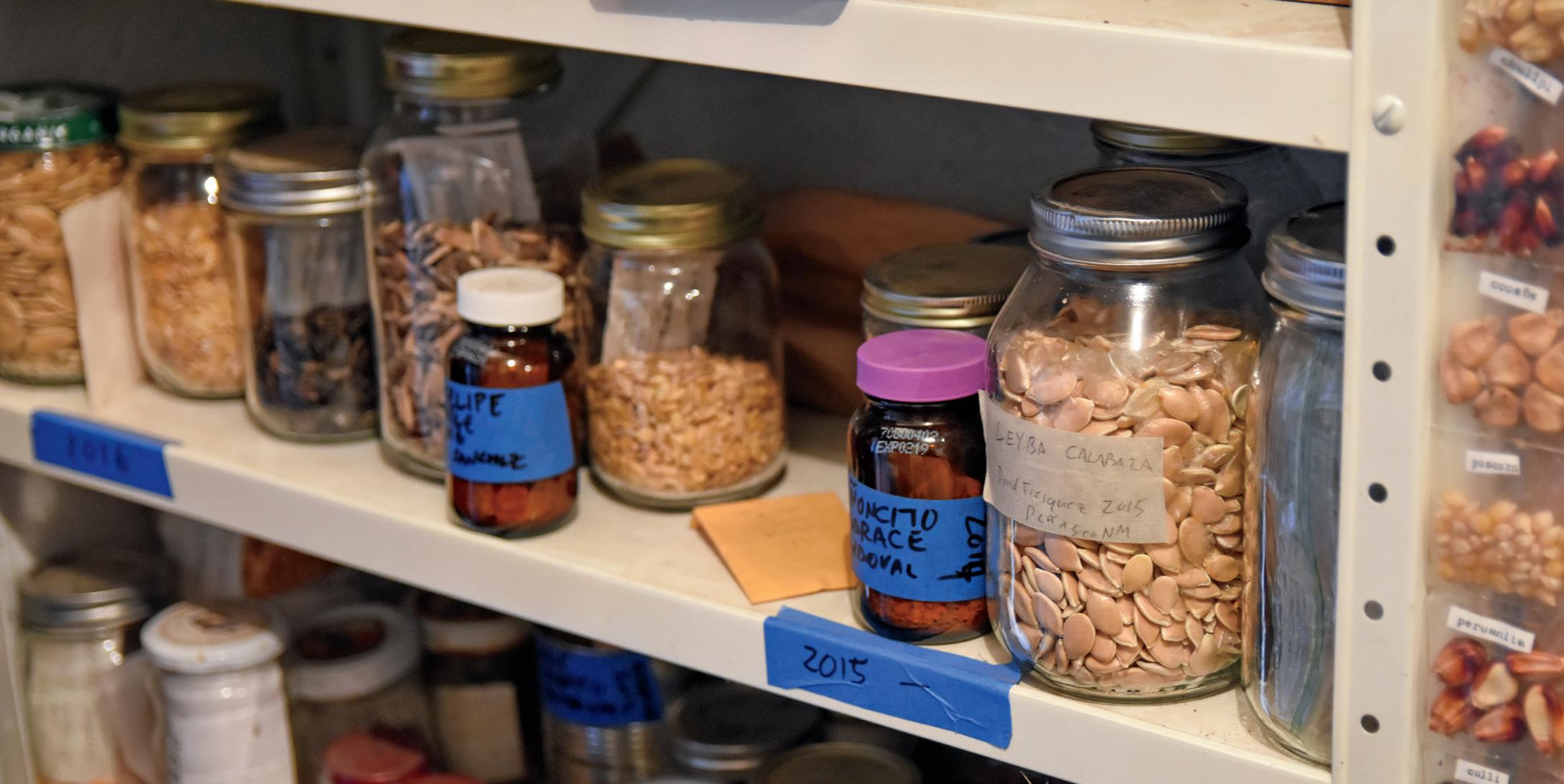
out that this squash was missing from our community and that it was brought back . . . it was a pretty amazing experience.” Suazo’s emotion was palpable as she recounted this experience to me. I was struck by the remarkable depth of feeling between seed keepers and the plants they know intimately, both through story and culture and the work of planting, tending, growing, harvesting, and saving seed over years. The Red Willow Center has been growing the Taos Pueblo Hubbard squash since it arrived there with Suazo, adding more seed every year to the existing seed bank.
It’s precisely this sort of influx in genetic material and diversity that growing and saving traditional and heirloom seeds encourages. In remembering his days collecting and learning from older farmers in New Mexico, Bakker also recalled their attitude toward planting. “They were not so concerned with cross-pollination. When you plant some of these native, high-elevation squashes, you get all of these different sizes and shapes. There was no real reason to have everything uniform. You know, saving seed, obviously the more diversity that’s in the seed, the stronger it is.”
Seeds move as people move, and squash is no exception. Bakker recalls collecting seeds from Pueblo farmers whose grandparents had come from other Pueblos and brought their squash with them, and inherent in this movement is the process of changing the crop. In New Mexico, lower elevations with longer, hotter growing seasons present ample opportunity for squash bugs to disrupt plantings. Many of the heirloom varieties of calabacitas (a Spanish word that can mean, variously, a dish made with squash; zucchini specifically; summer squash of any variety; or simply squash more broadly, as it has historically been used in New Mexico) found in lower elevations in the state show a marked resistance to squash bugs—though Bakker says he still finds himself in the fields in the early morning picking inert bugs off of squash plants before the heat makes the task impossible.
In seeds gathered from higher-elevation communities—Truchas, Trampas, Chimayó, Picuris Pueblo, Taos Pueblo—the Hubbard squash has adapted to the cold and tends to have a harder shell, sweeter flesh, and much less resistance to squash bugs. Too, the traditional varieties found in the area produce large squash, sometimes weighing as much as forty pounds. As Bakker explains, trends in sizes of squash have shifted with changes in how we source our food, and who is eating. “Things like a delicata or an acorn squash are fairly new because a couple hundred years ago, no one wanted to go through all this work planting and harvesting for a tiny squash. When you were feeding your whole family, you wanted squashes that were thirty, forty pounds, which is not unusual with the native varieties.”

Both Bakker and Suazo are also proponents of using squash in a variety of ways: baking it into bread, using it in sauces or as a base for soup, incorporating it in stir-fries—even drying and saving for use later, as Suazo tells me the Red Willow Center did with part of their harvest of Hubbard squash this year. Dried squash is added to recipes with sufficient liquid to reconstitute it, or is rehydrated before being added to a dish. Bakker recalls being in communities where those gourds that hadn’t quite reached maturity by the end of the growing season, or that hadn’t cured properly, were cut into spirals and hung to dry. These dried squash products were referred to
as tasajos—tasajo being a term used in Mexico, Central, and South America for various styles of jerky or dried meat. One begins to get a sense for just how much has changed in only a few generations— family size, linguistic tendencies, food sources, growing practices, culinary preferences. The story of humans changing is the story of food changing, and, in many cases, shaping change in culture. How many of my predecessors would recognize something useful in the squash I bring home from the farmers market?
We are so bound by our foods that it can be hard to think of them as existing any way except as we know them now: as the familiar staples and ingredients that make up our gustatory lexicon. It occurs to me that, for many of us, to be alive at any given moment involves knowing very little about what it was like to be alive at any other time. I don’t mean that we lack a sense of the broad arcs, because that’s usually what historical records depict. I’m talking about the day-to-day and cyclical occurrences that underlie and guide the specifics of our lived experiences. And while we have moved, largely, from asking ourselves daily questions about what is growing and how, it seems imperative to me that there are people and places that continue to center this intimacy with the growing, changing earth and its abundance. Who knows when we might find ourselves needing a forty-pound squash again?

The Circles is the premier membership of the Museum of New Mexico Foundation. Join us and enjoy an exclusive calendar of events that is especially designed to enhance your appreciation of the art, history and culture of New Mexico and folk art traditions worldwide. You’ll discover unparalleled camaraderie with an intimate group of fellow members.
For more information contact Cara O’Brien, Director of The Circles, at 505.982.6366, ext. 118 or email cara@museumfoundation.org or visit museumfoundation.org/the-circles.
Carver Family Farm
Fresh and sweet organic pecans, from our southern new mexico orchards to your kitchen
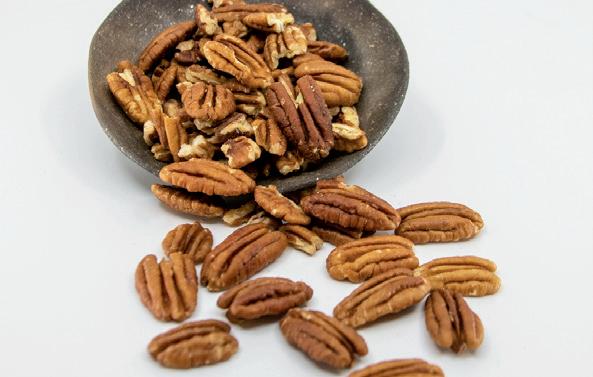
Order online at delvallepecans.com 575.524.1867
your kitchen. Order online. 575-524-1867, delvallepecans.com
Eldora Chocolate
No-till, hand-trimmed, organically grown cannabis producer and dispensary. 8917 Adams, Albuquerque, 505-508-5910, carverfamilyfarm.com
KURE

We pride ourselves on providing a unique, friendly, and welcoming environment. 220 N Guadalupe, Santa Fe, 505-930-5339, kureforlife.com
The Herb Taxi
Local cannabis delivery for medical and recreational consumers. theherbtaxi.com
Barrio Brinery
Bringing fine fermented foods to Santa Fe. 1413-B W Alameda, Santa Fe, 505-699-9812, barriobrinery.com
Bountiful Cow Cheese Company
Purveyors of fine cheese, meats, and provisions from around the world. 505-473-7911, B-cow.com
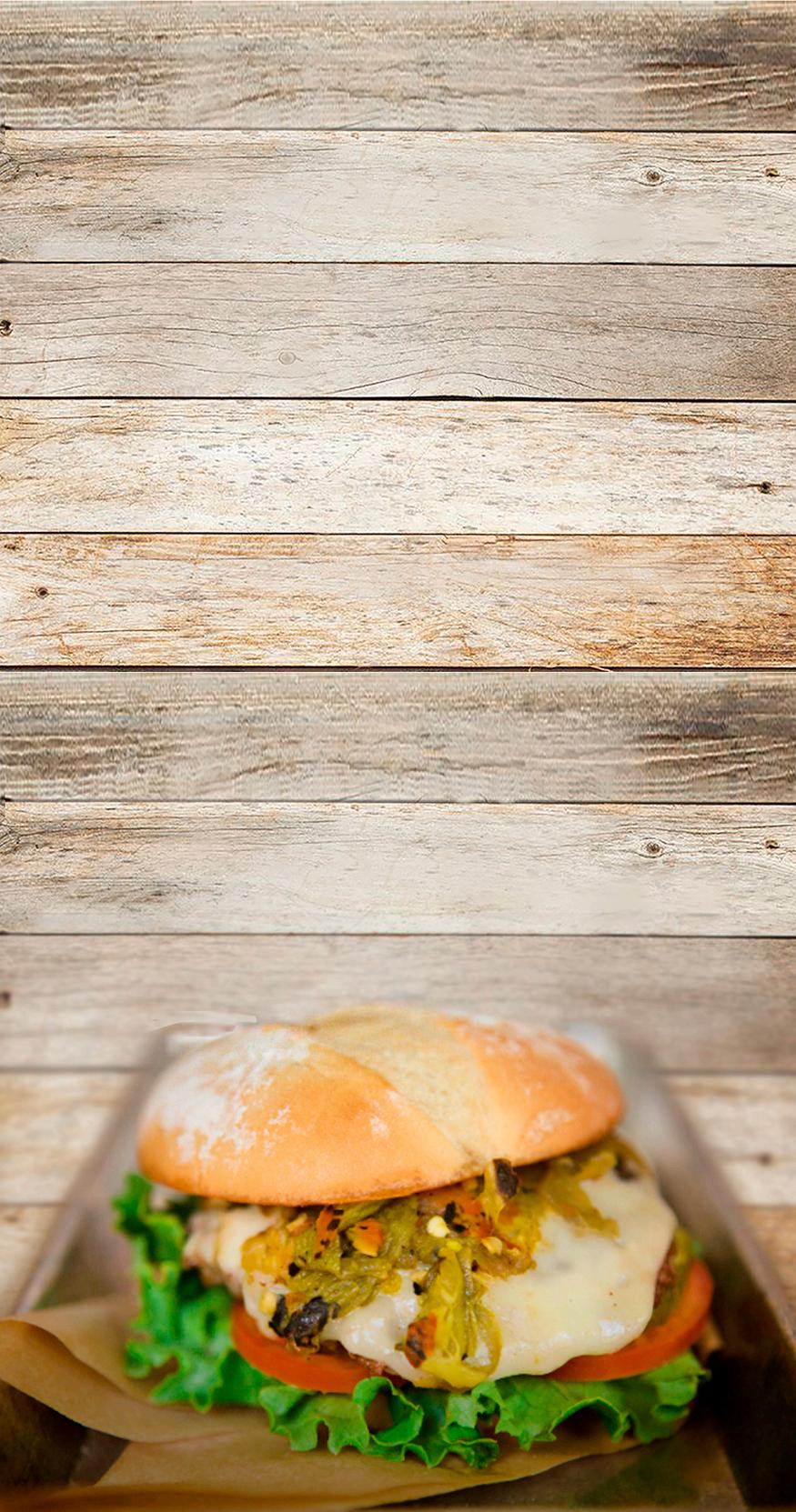
Del Valle Pecans
From our southern New Mexico orchards to
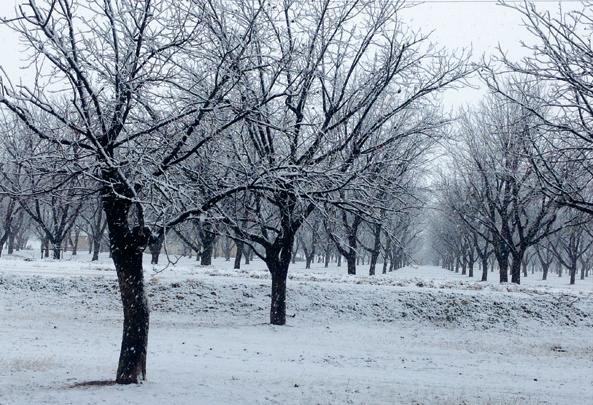
Eldora crafts chocolate using natural, organic, and fair-trade ingredients. 8114 Edith NE, Albuquerque, 505-433-4076, eldorachocolate.com
Heidi's Raspberry Farm
Sumptuous, organic raspberry jams available throughout New Mexico and online! 505-898-1784, heidisraspberryfarm.com
La Montañita Co-op
New Mexico's largest community-owned, natural, and organic food market. Locations in Albuquerque, Gallup, and Santa Fe. lamontanita.coop
New Mexico Harvest
A community of people that actively invests in our food system. Eat local. Eat seasonal. Eat outside the box stores. Delivering across New Mexico. newmexicoharvest.com
Owl Peak Farm
Grains grown and milled in La Madera. Order online at owlpeakfarm.com
Skarsgard Farms
Delivering fresh, local, and organically grown
produce and natural groceries to doorsteps across New Mexico. 505-681-4060, skarsgardfarms.com
Your local liquor store in Santa Fe. 632 Auga Fria, sfwineandspirits.com
Talin Market
88 Louisiana SE, Albuquerque, 505-268-0206, talinmarket.com
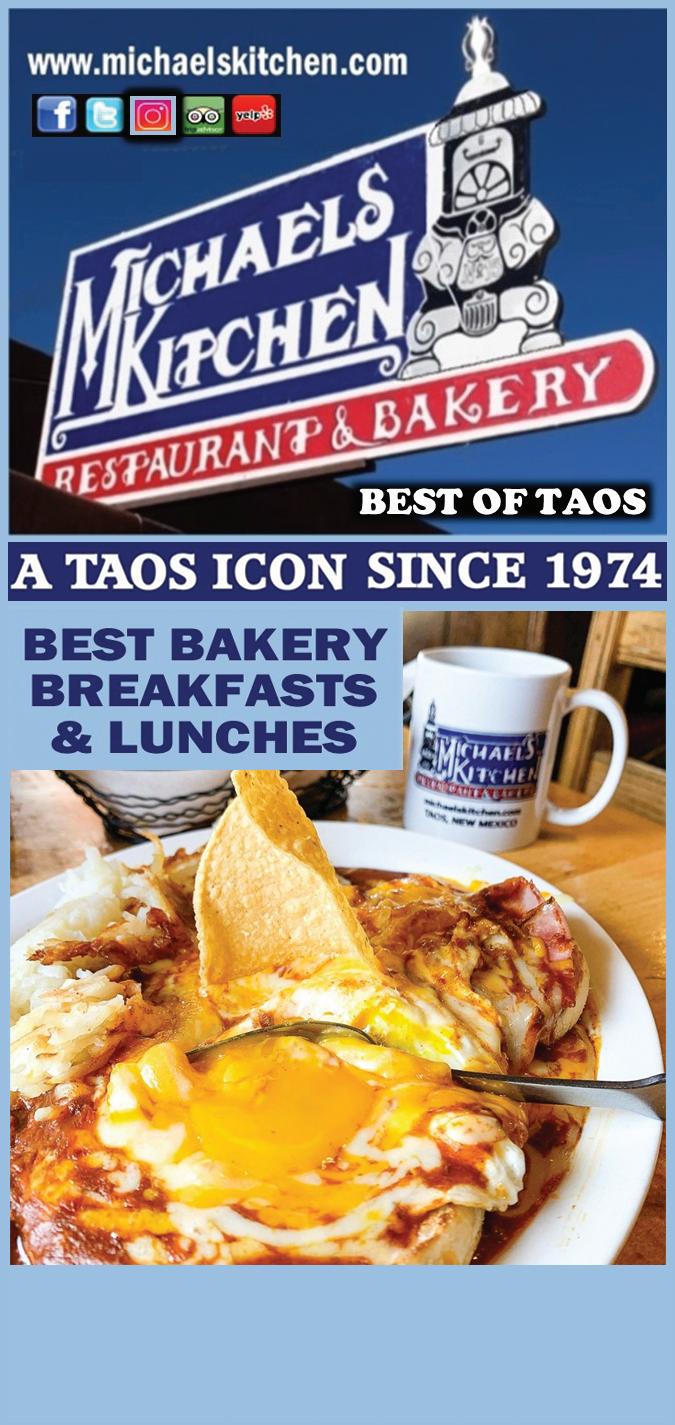
All natural, preservative free, and made with only the best local ingredients. 7625 Second Street NW, Albuquerque, 505-867-3283, vigilsbeefjerky.com
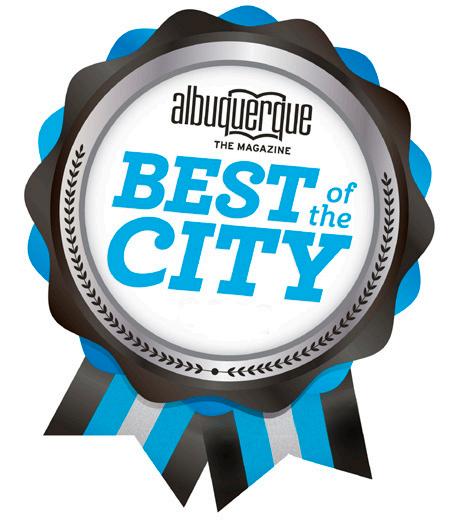
We offer a wide range of herbs, vitamins, supplements, and high-pH H2O. 4056 Cerrillos, Unit D-1, Santa Fe, 505-780-8687, daisysholistichealth.com
Acupuncture and classical Chinese medicine. Now accepting patients in Albuquerque and Santa Fe. 505-475-7855, desertsolalchemy.com







Wholesale Specialty Cheese/Meats/Provisions 300+ Cheeses from around the World (505) 310-0089 | 922 Shoofly St. SF, NM BREAKFAST, LUNCH, DINNER & BRUNCH cafecitosantafe.com | @cafecito.santafe
Creative Casual Cuisine 221 Highway 165, Placitas 505-771-0695, www.bladesbistro.com www.b-cow.com Est. 1984

A family-owned and -operated nursery, gardening center, and landscaping company. 501 Osuna NE, Albuquerque, 505-345-6644, osunanursery.com
Museum of New Mexico Foundation
Philanthropic support for our state's cultural heritage. museumfoundation.org
Slow Food Santa Fe
Slow Food is about enjoying food and the community it creates. Intrigued? Learn more at slowfoodsantafe.org.
Rio Grande Credit Union
Multiple locations in Albuquerque. riograndecu.org
Black Diamond Curio
Modern mercantile in downtown Santa Fe. 219 W San Francisco, Santa Fe, 505-390-2025, blackdiamondcurio.com
Enjoy shopping for boutique local New Mexico gifts—thoughtfully selected and packaged with care. 201 Coal SW, Albuquerque, flybyprovisions.com
Irresistible and gently used gourmet cooking and entertaining ware. 1222 Siler, Santa Fe, 505-471-7780, kitchenangels.org
100% natural ingredients from around the world. 1610 Lena, Ste D, Santa Fe, 505-6637784, livingthreads.org

High-desert bodega and corner store. 504 Galisteo, Santa Fe, 505-699-1067, mtnstd.com
We have a passion for finding the perfect gift. 4022 Rio Grande NW, Albuquerque, 505-344-1253, sarabandehome.com
An eclectic shop for handmade products. 1315 Mountain NW, Albuquerque, 505-433-3204, beingthereabq.com
The perfect place to find something for everyone. 901 Rio Grande NW, Ste D-126, Albuquerque, theperfectgiftshoppe.com
Tin-Nee-Ann Trading Co.
Family operated and family friendly since 1973. 923 Cerrillos, Santa Fe, 505-988-1630, tin-nee-ann-trading-co.myshopify.com
Campo at Los Poblanos
Historic Inn & Organic Farm
Rio Grande Valley cuisine rooted in seasonal organic ingredients from our own farm. 4803 Rio Grande NW, 505-344-9297, lospoblanos.com
Cutbow Coffee
One of the nation's most accomplished artisan coffee roasters, Paul Gallegos. 1208 Rio Grande NW, 505-355-5563, cutbowcoffee.com

Enjoy delectable seasonal dishes created from scratch, sourced from local farmers and our beautiful on-site farm. 8917 Fourth Street NW, 505-503-7124, farmandtablenm.com
The feel-good, award-winning burger—100% grassfed beef, vegan, or poultry! 11225 Montgomery, 505-200-0571, and 5600 Coors NW, Ste 3, 505-361-2368, eatgrassburger.com
Unmistakably comforting, uncompromisingly fresh, and undeniably delicious. 116 Amherst SE, 505-266-6374, mata-g.com
A playful, Southwest-inspired menu. 3120 Central SE, Albuquerque, 505-494-5264, mesaprovisions.com
California wine country in the Northeast Heights. Farm-to-table dining and a casual patio. 10601 Montgomery NE, 505-294-9463, savoyabq.com

Linking the pleasure of good food with local community.
lamamasantafe.com


Eclectic collection of bars and eateries, plus an expansive courtyard. 1909 Bellamah NW, sawmillmarket.com
Oak-fired grill, local and seasonal ingredients, and the best patio dining in Old Town. 2031 Mountain NW, 505-766-5100, seasonsabq.com
Experience chef-driven, scratch-made rotisserie comfort food at Albuquerque's Sawmill Market. 1909 Bellamah NW, 505-814-3653, rotinm.com

The Grove features a bustling café experience serving breakfast, brunch, and lunch. 600 Central SE, 505-248-9800, thegrovecafemarket.com
Serving breakfast and lunch Wednesday through Sunday. 2933 Monte Vista NE, 505-433-2795, theshopabq.com
We roast coffee and brew in unique ways. 413 Montaño NE, 505-803-7579, trifectacoffeeco.com
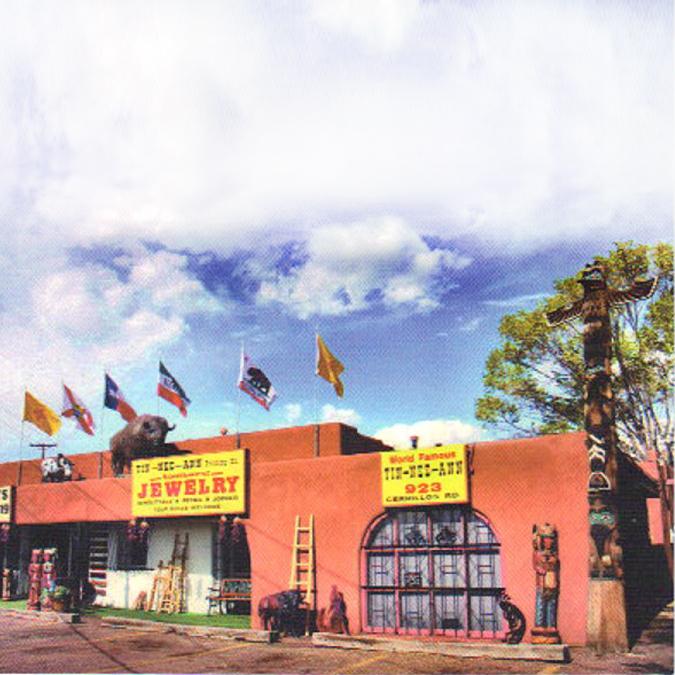
Anasazi Restaurant & Bar
Contemporary American cuisine inspired by locally sourced seasonal ingredients. 113 Washington, 505-988-3030, innoftheanasazi.com
We serve progressive American fare inspired by our on-premise garden and local purveyors. 218 Camino La Tierra, 505-983-2100, arroyovino.com
Cafecito is a family-owned business blending cultures to bring you a delicious menu in a beautiful gathering space. 922 Shoofly, 505-310-0089, cafecitosantafe.com
We serve modern American brunch with eastern European influences. Closed on Tuesdays. 402 N Guadalupe, 505-982-9394, dolinasantafe.com
Amazing food, unique coffees roasted on-site, and superfast high-speed internet. 314 S Guadalupe and 1600 Lena, 505-428-0996, iconikcoffee.com

SANTAFE NewMexico
413 Montano NE, Albuquerque 505-803-7579, trifectacoffeeco.com
We roast coffee, and brew it in unique ways utilizing some of the best methods available. All of our baked goods, sweet, and savory are made in house.
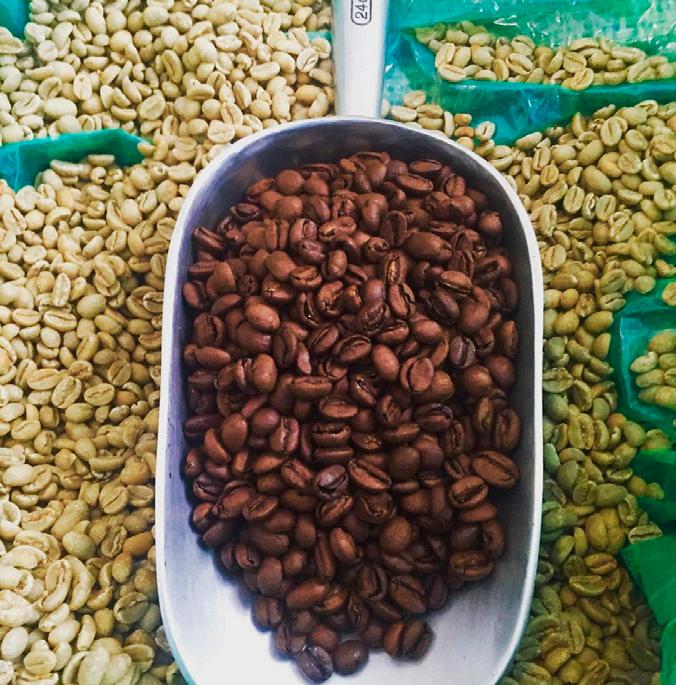
Santa Fe's source for fine fermented foods. Our lacto-fermented pickles, sauerkraut, and escabeche are hand-crafted in small batches.

1413-B West Alameda, Santa Fe www.barriobrinery.com ∙ 505-699-9812
La Casa Sena
Mediterranean-inspired cuisine, craft cocktails, and an award-winning wine list, located in the beautiful courtyard oasis of historic Sena Plaza. 125 East Palace, 505-988-9232, lacasasena.com
La Mama Santa Fe
Coffee, natural wine, all-day menu, grocery, and flowers. 225 East Marcy Street, lamamasantafe.com
Loyal Hound
Locally sourced modern comfort food paired with craft beer, cider, and wine. 730 St Michaels, 505-471-0440, loyalhoundpub.com
The original source for locally roasted coffee beans, gifts, and gathering. 505 Cerrillos and 1098 St Francis, 505-982-9692, ohoriscoffee.com
Palace Prime Steaks, seafood, and pasta. 142 W Palace, Santa Fe, 505-919-9935, palaceprimesf.com
Bringing fresh, authentic homestyle South Indian dishes to your table. 551 W Cordova, 505-930-5521, paper-dosa.com
Pranzo
Upscale Italian cuisine. 321 Johnson, 505-984-2645, pranzoitaliangrill.com
Farm-inspired cuisine: simple yet innovative food and drinks sourced locally whenever possible. 505 Cerrillos, 505-930-5325, radishandrye.com
Red Sage
Red Sage at Hilton Santa Fe Buffalo Thunder is perfect for your next romantic night out. Fare rotates seasonally. 20 Buffalo Thunder Trail, 505-819-2056, redsage-sf.com
Refined ranch space known for prime rib and filet mignon along with a popular bar and happy hour. 414 Old Santa Fe Trail, 505-955-0765, riochamasantafe.com Rustica
Sophisticated yet casual—Rustica serves fresh, homemade Italian food. 2547 Camino Entrada, 505-780-5279, rusticasantafe.com
Seasonally changing, globally inspired cuisine and an extensive, value-priced wine list. 304 Johnson, 505-989-1166, terracottawinebistro.com
Chef Mark Kiffin preserves a landmark tradition of elegant food and service at his Canyon Road institution. 653 Canyon Road, 505-982-4353, compoundrestaurant.com
Artisan sourdough bread and baked goods using organic, local grains and ingredients. 130 N Guadalupe, wildleavenbakery.com
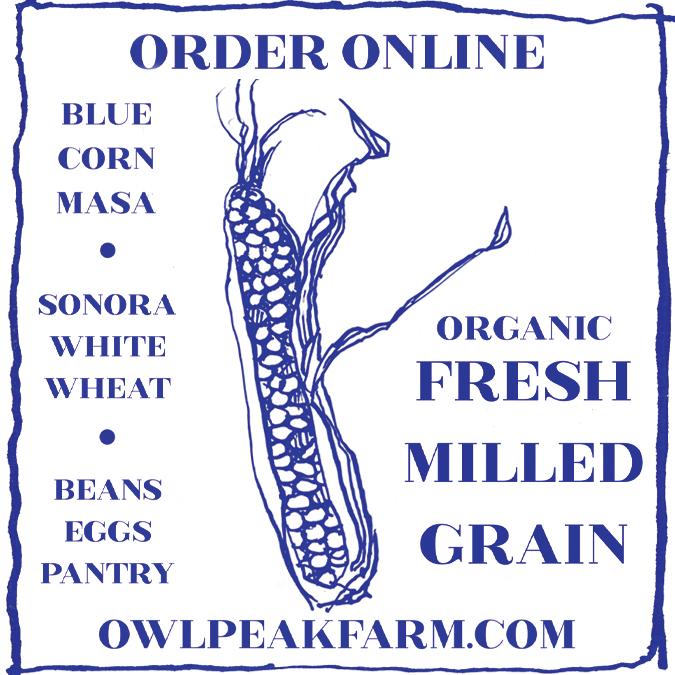
Black Bird Saloon
Genuine food and drink, Wild West style. 28 Main St, Los Cerrillos, 505-438-1821, blackbirdsaloon.com
Chef Kevin Bladergroen brings together fine and fresh ingredients, artistic vision, and European flair in every dish. 221 Hwy 165, Placitas, 505-771-0695, bladesbistro.com
Little Toad Creek Brewery & Distillery
Taste Southwest New Mexico.
200 N Bullard St, Silver City, 575-956-6144, and 119 N Main St, Las Cruces, 575-556-9934, littletoadcreek.com
Regionally inspired eats with a tongue-incheek menu in a casual space. 304-C N Pueblo, Taos, 575-758-4178, michaelskitchen.com
Open for lunch Tuesday–Sunday. Open for dinner every day. 30 craft beers on tap. 614 Trinity Dr, Los Alamos, 505-662-8877, pajaritobrewpubandgrill.com
Pig + Fig
Comfort food for everyone using highquality, ethically sourced, seasonal ingredients. 11 Sherwood Blvd, White Rock, 505-672-2742, pigandfigcafe.com
Local farm-to-table restaurant that serves classic Americana comfort food with an epicurean flare. 230 Plaza St, Las Vegas, 505-434-0022, prairiehillcafe.com
The Skillet
American, Southwest, vegetarian friendly. 619 Twelfth Street, Las Vegas, 505-563-0477, giant-skillet.com
Wild Leaven Bakery
216 Paseo Del Pueblo Norte, Taos, wildleavenbakery.com
Explore a world of local food through the magazines and websites of Edible Communities.

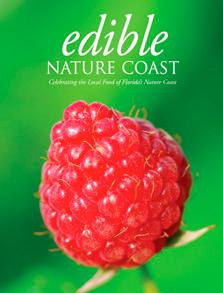
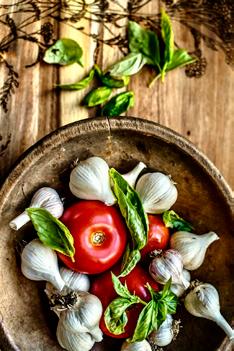
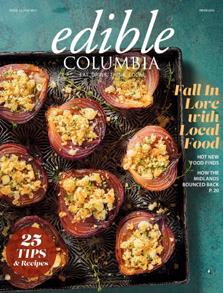
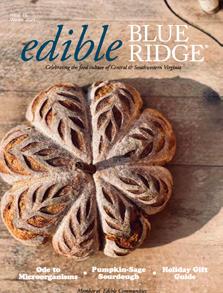
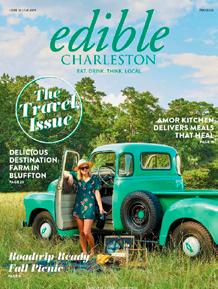
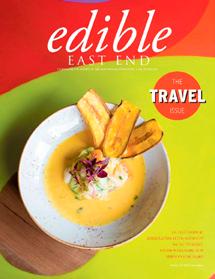
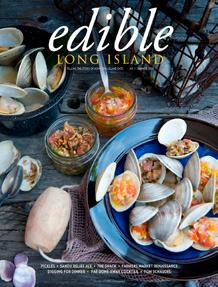



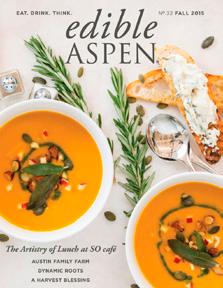
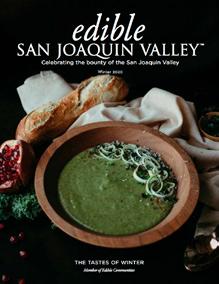

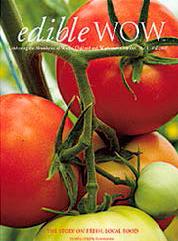

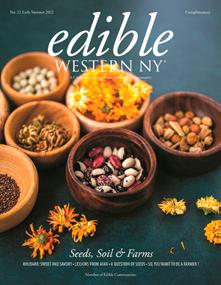




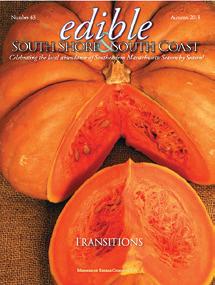

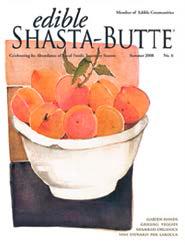






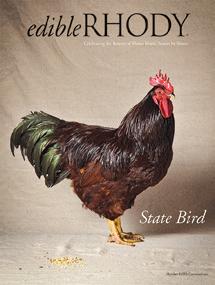
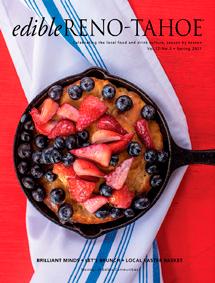


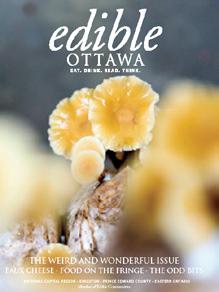

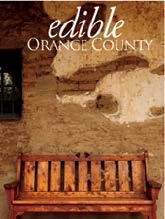

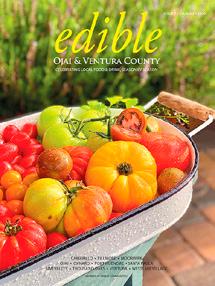

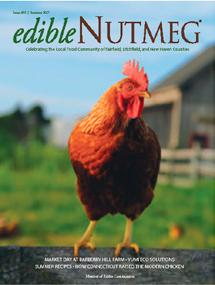

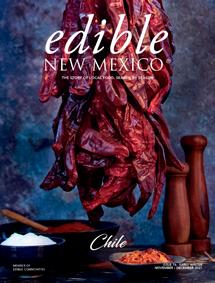
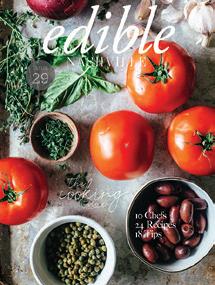
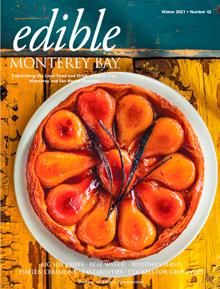

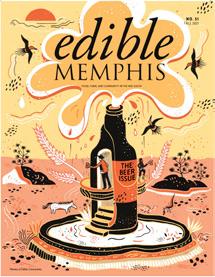



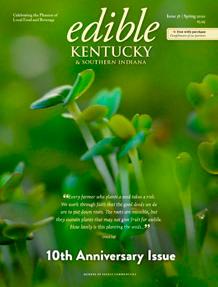
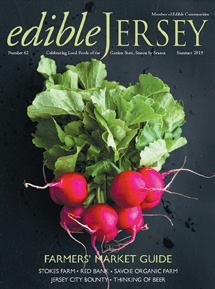
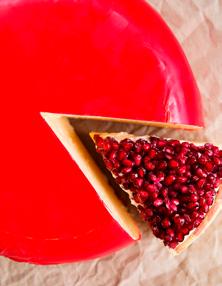
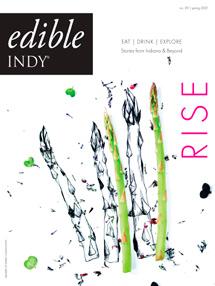





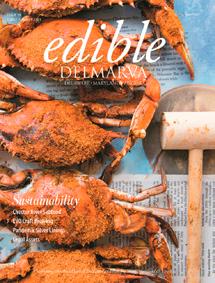

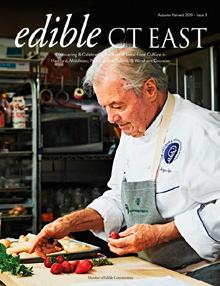




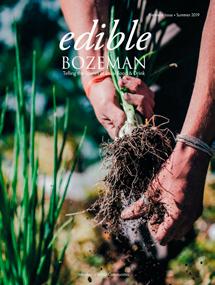
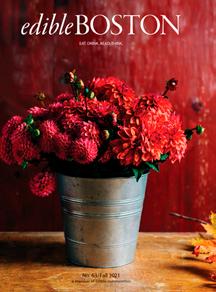
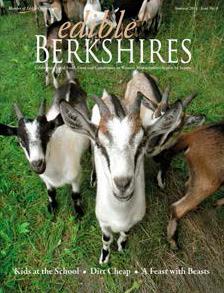

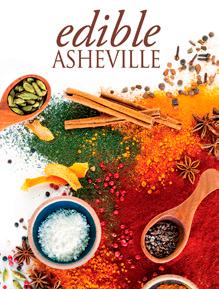
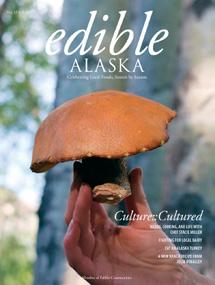
We’ll introduce you to the chefs, farmers, brewers, home cooks and others who inspire and sustain local flavors across the US and Canada. ediblecommunities.com

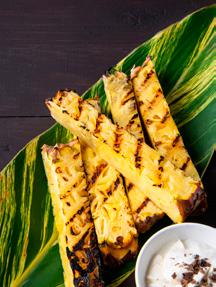






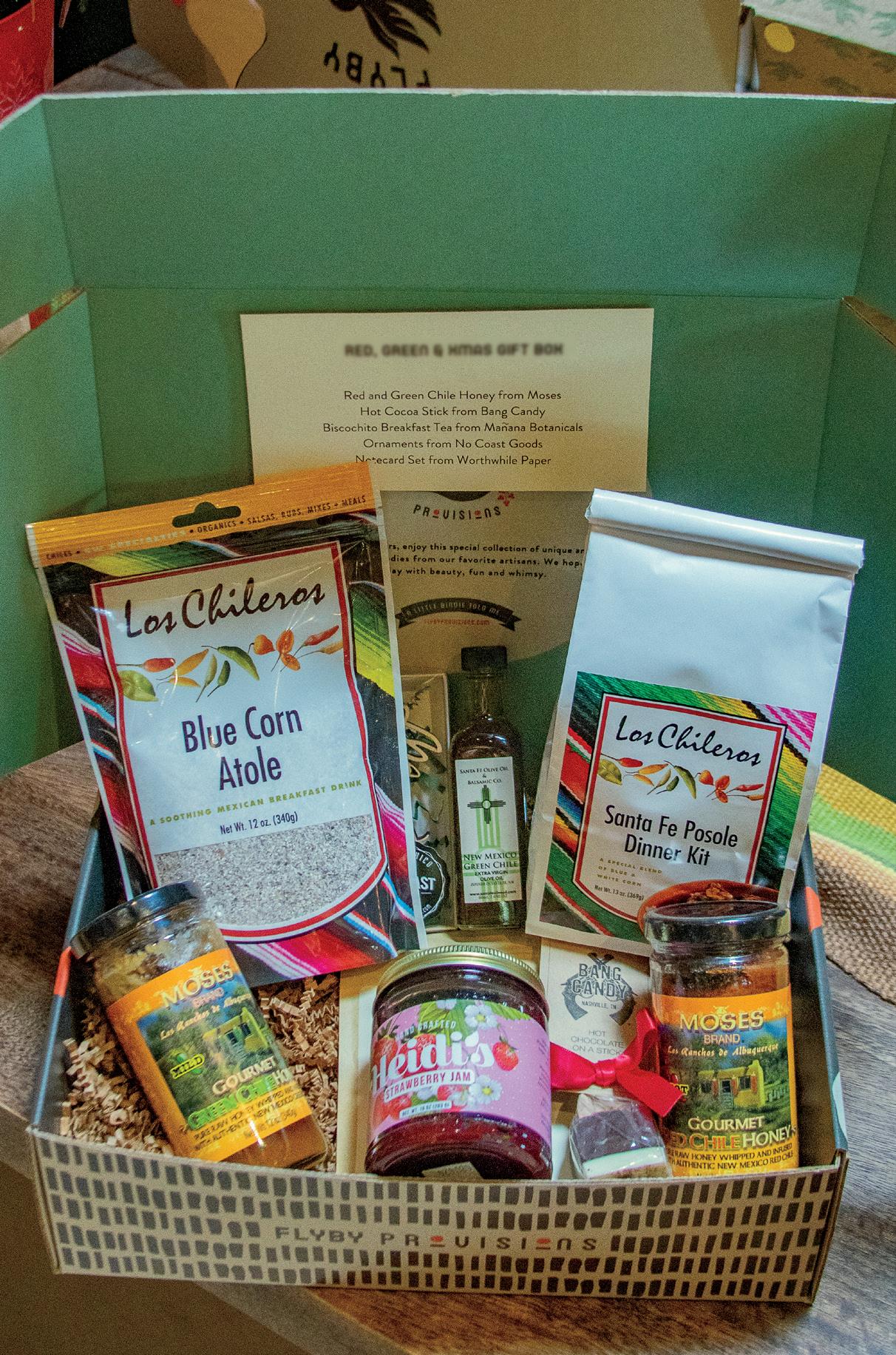
Los Chileros has been providing authentic Southwest tastes since 1981. Their all-natural chiles, chile powders, soups, and rubs are available internationally but also can be found locally just about anywhere you buy groceries. From 2004 to 2014, they occupied the historic Sanitary Tortilla Factory on Second Street in downtown Albuquerque, a building since converted into an art gallery and studios. Slowly, the block of Second Street between Lead and Coal has seen a revitalization with Zendo Coffee, Sidetrack Brewing, The Bloom Stone, and Flyby Provisions. Flyby Provisions features thoughtfully selected items that support community businesses, including Los Chileros.
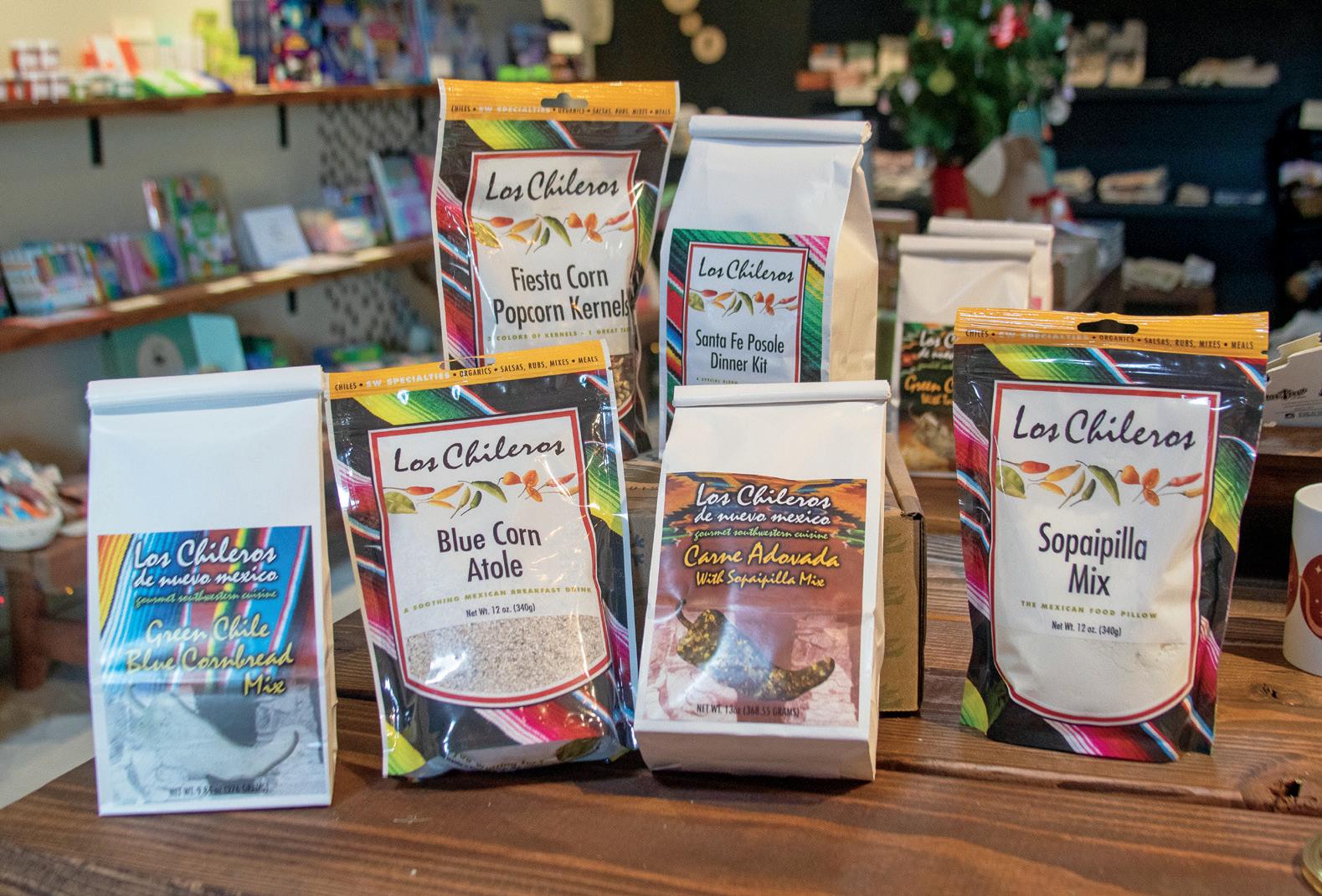
Located at 201 Coal SW, just a few doors down from the Sanitary Tortilla Factory art gallery. flybyprovisions.com, loschileros.com
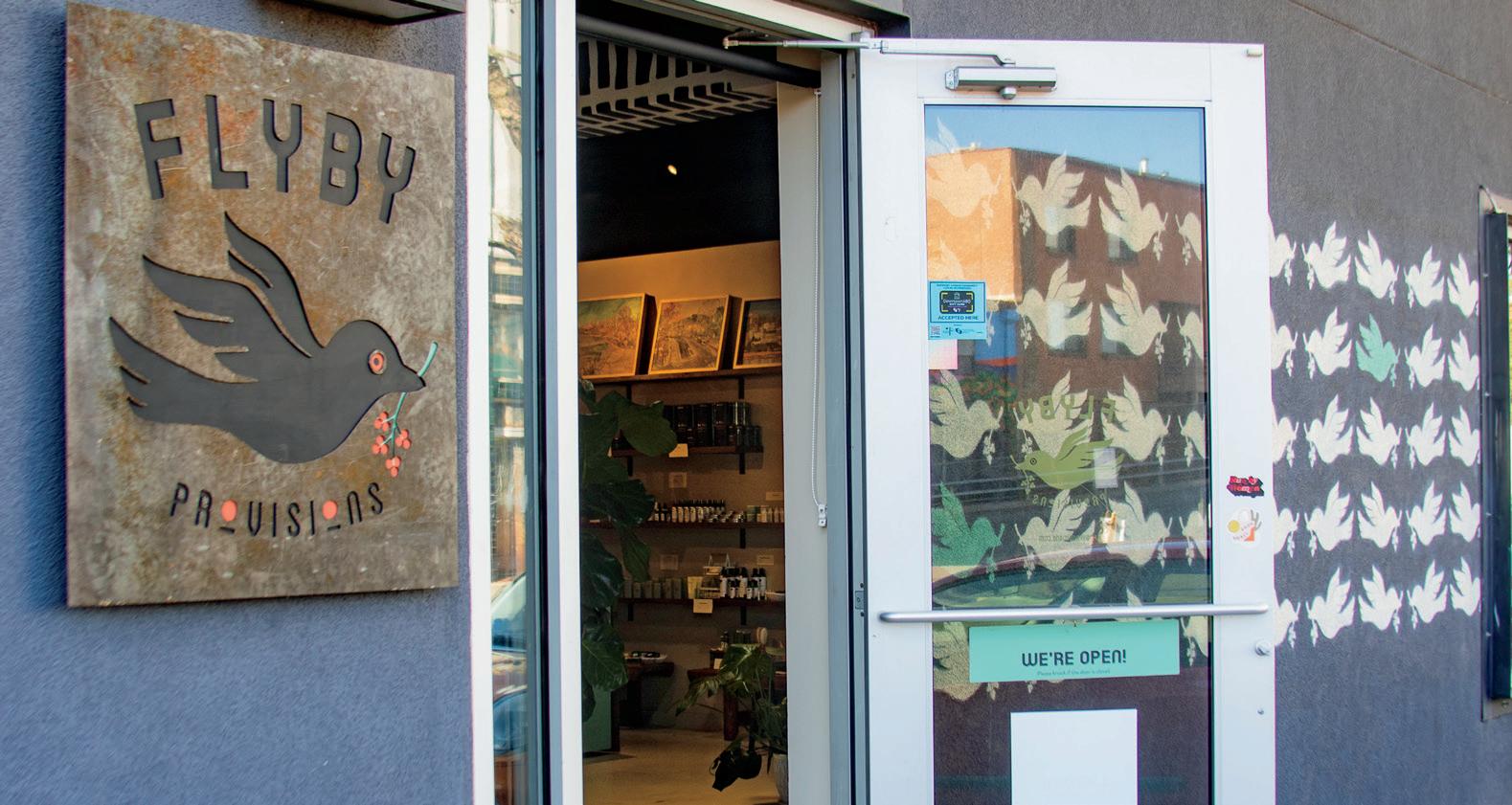
The Last Bite is brought to you by Rio Grande Credit Union and highlights New Mexico’s food entrepreneurs and small businesses.
 Flyby Provisions gift boxes and products at their Second Street retail location.
Flyby Provisions gift boxes and products at their Second Street retail location.
At RGCU, we’re anything but bland. Savor the flavor of a checking account that pays you money market rates on your balances - AND rewards. Ingredients (a.k.a. the fine print): Federally insured by NCUA. We don’t make you jump through a bunch of cumbersome hoops to earn rewards or dividends. You don’t have to do things like have a bunch of transactions, or eStatements to qualify. You’ll earn dividends on balances $500 and greater. There is a monthly fee if you don’t keep a daily balance of $500. You can waive that if you’re over 55 years of age. So, if you don’t plan to keep $500 in the account and you’re younger than 55, get our Free Checking account. It pays rewards too. In other words, everything you want and need, and nothing you don’t.

